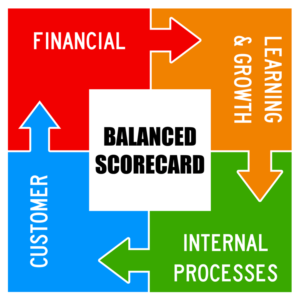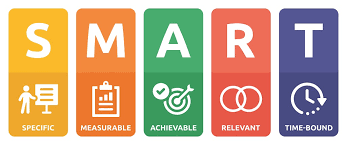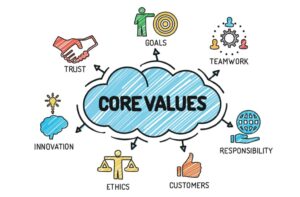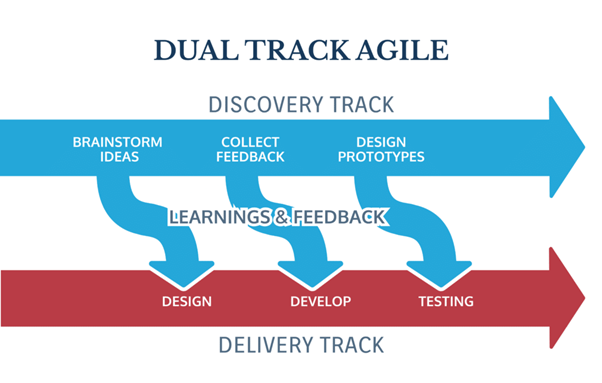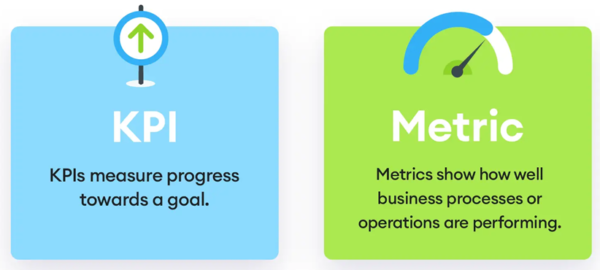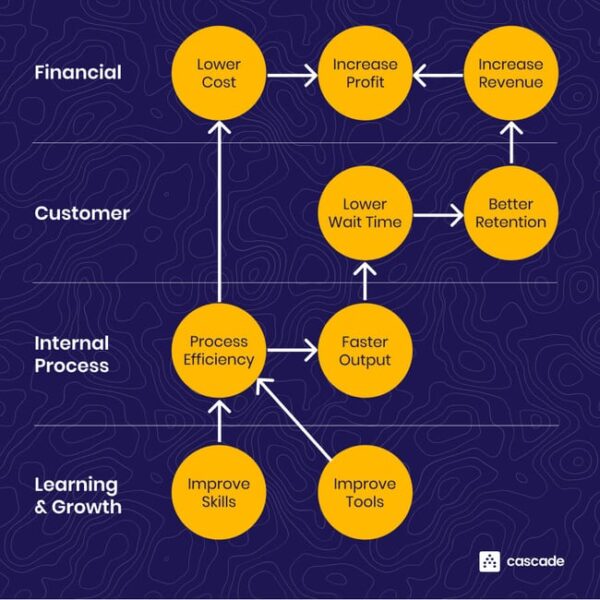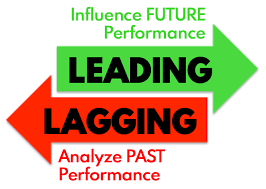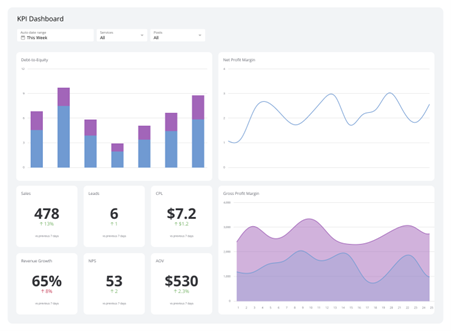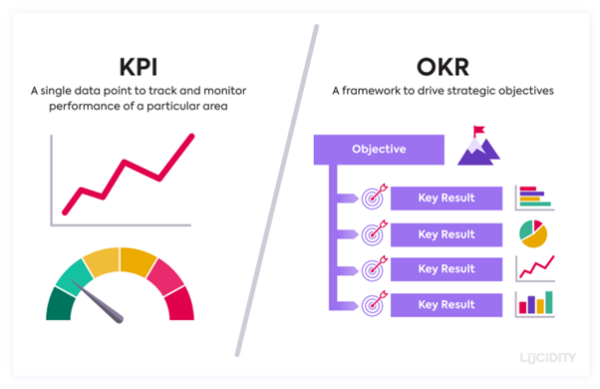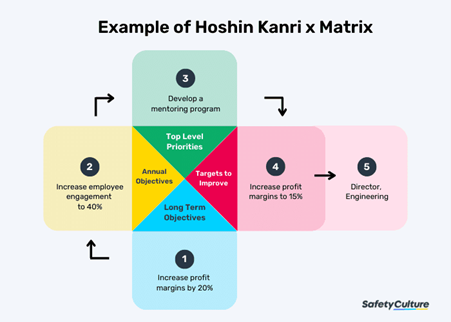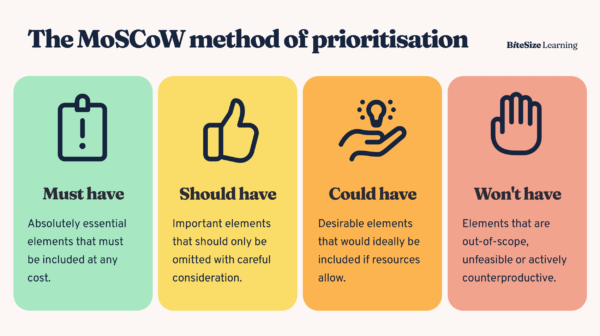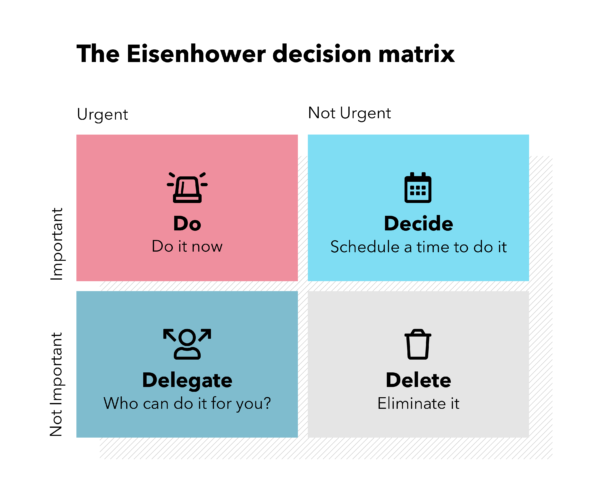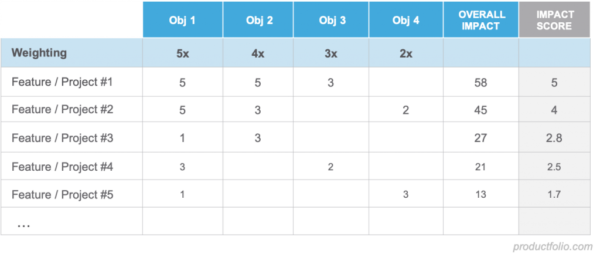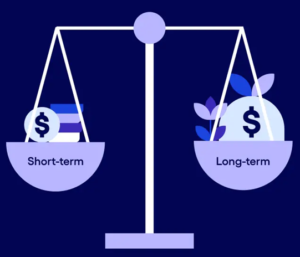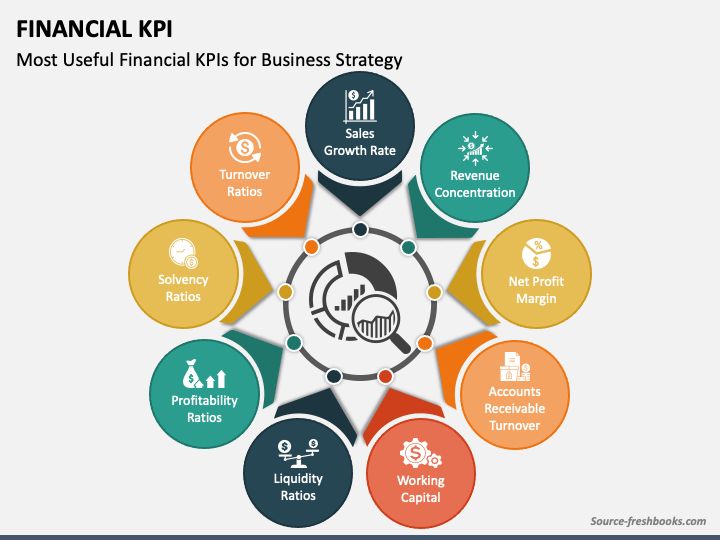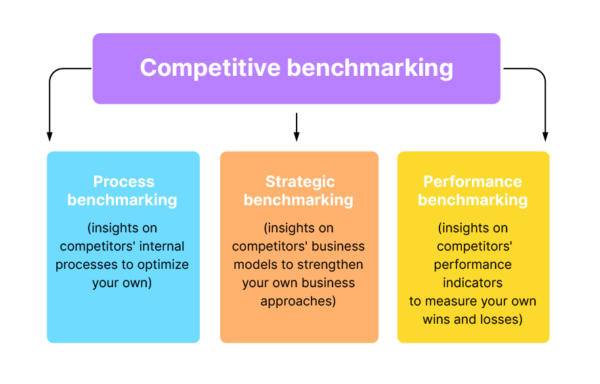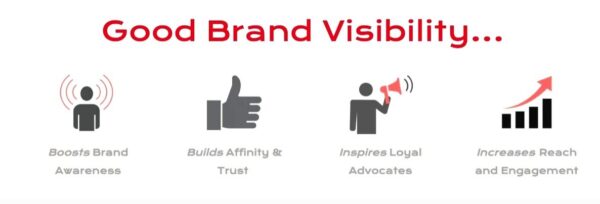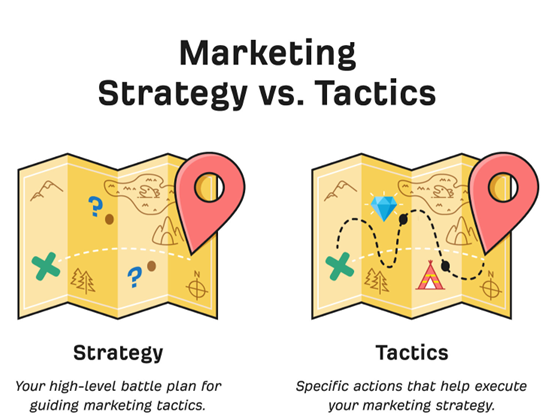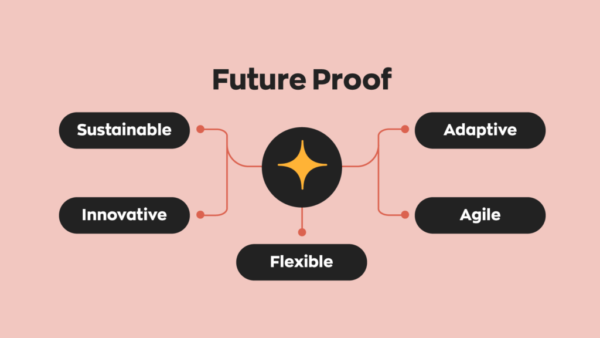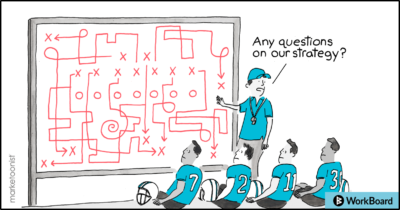Portfolio Optimization – Workshop 1 (Strategic Objectives)
The Appleton Greene Corporate Training Program (CTP) for Portfolio Optimization is provided by Mr. Shankar Certified Learning Provider (CLP). Program Specifications: Monthly cost USD$2,500.00; Monthly Workshops 6 hours; Monthly Support 4 hours; Program Duration 12 months; Program orders subject to ongoing availability.
If you would like to view the Client Information Hub (CIH) for this program, please Click Here
Learning Provider Profile
To be advised.
MOST Analysis
Mission Statement
The foundation of successful portfolio optimization lies in setting clear and measurable strategic objectives. This workshop focuses on defining these objectives in alignment with the organization’s overarching business strategy. Senior management will play a critical role in this phase, ensuring that portfolio goals reflect revenue targets, market share expansion, and profitability improvements. Participants will learn to identify and refine key performance indicators (KPIs) to measure progress toward these objectives. The session also emphasizes the importance of a top-down approach to integrate strategic vision with actionable metrics. By the end of the workshop, participants will have a roadmap for aligning portfolio objectives with company goals, creating a unified direction for portfolio optimization efforts.
Objectives
01. Strategic Planning: departmental SWOT analysis; strategy research & development. Time Allocated: 1 Month
02. Aligning Objectives with Corporate Vision and Mission: departmental SWOT analysis; strategy research & development. Time Allocated: 1 Month
03. Top-Down Strategic Planning in Portfolio Design: departmental SWOT analysis; strategy research & development. Time Allocated: 1 Month
04. Translating Strategy into Measurable KPIs: departmental SWOT analysis; strategy research & development. Time Allocated: 1 Month
05. Goal Setting Frameworks for Portfolio Optimization: departmental SWOT analysis; strategy research & development. Time Allocated: 1 Month
06. Prioritization Techniques for Strategic Goals: departmental SWOT analysis; strategy research & development. Time Allocated: 1 Month
07. Setting Financial Targets for Portfolio Growth: departmental SWOT analysis; strategy research & development. 1 Month
08. Establishing Market Positioning Goals: departmental SWOT analysis; strategy research & development. Time Allocated: 1 Month
09. Balancing Short-Term Wins with Long-Term Strategy: departmental SWOT analysis; strategy research & development. Time Allocated: 1 Month
10. Creating a Strategic Roadmap for Portfolios: departmental SWOT analysis; strategy research & development. Time Allocated: 1 Month
11. Communicating Strategic Objectives Across Teams: departmental SWOT analysis; strategy research & development. Time Allocated: 1 Month
12. Measuring Strategic Alignment and Portfolio Success: departmental SWOT analysis; strategy research & development. Time Allocated: 1 Month
Strategies
01. Strategic Planning: Each individual department head to undertake departmental SWOT analysis; strategy research & development.
02. Aligning Objectives with Corporate Vision and Mission: Each individual department head to undertake departmental SWOT analysis; strategy research & development.
03. Top-Down Strategic Planning in Portfolio Design: Each individual department head to undertake departmental SWOT analysis; strategy research & development.
04. Translating Strategy into Measurable KPIs: Each individual department head to undertake departmental SWOT analysis; strategy research & development.
05. Goal Setting Frameworks for Portfolio Optimization: Each individual department head to undertake departmental SWOT analysis; strategy research & development.
06. Prioritization Techniques for Strategic Goals: Each individual department head to undertake departmental SWOT analysis; strategy research & development.
07. Setting Financial Targets for Portfolio Growth: Each individual department head to undertake departmental SWOT analysis; strategy research & development.
08. Establishing Market Positioning Goals: Each individual department head to undertake departmental SWOT analysis; strategy research & development.
09. Balancing Short-Term Wins with Long-Term Strategy: Each individual department head to undertake departmental SWOT analysis; strategy research & development.
10. Creating a Strategic Roadmap for Portfolios: Each individual department head to undertake departmental SWOT analysis; strategy research & development.
11. Communicating Strategic Objectives Across Teams: Each individual department head to undertake departmental SWOT analysis; strategy research & development.
12. Measuring Strategic Alignment and Portfolio Success: Each individual department head to undertake departmental SWOT analysis; strategy research & development.
Tasks
01. Create a task on your calendar, to be completed within the next month, to analyze Strategic Planning.
02. Create a task on your calendar, to be completed within the next month, to analyze Aligning Objectives with Corporate Vision and Mission.
03. Create a task on your calendar, to be completed within the next month, to analyze Top-Down Strategic Planning in Portfolio Design.
04. Create a task on your calendar, to be completed within the next month, to analyze Translating Strategy into Measurable KPIs.
05. Create a task on your calendar, to be completed within the next month, to analyze Goal Setting Frameworks for Portfolio Optimization.
06. Create a task on your calendar, to be completed within the next month, to analyze Prioritization Techniques for Strategic Goals.
07. Create a task on your calendar, to be completed within the next month, to analyze Setting Financial Targets for Portfolio Growth.
08. Create a task on your calendar, to be completed within the next month, to analyze Establishing Market Positioning Goals.
09. Create a task on your calendar, to be completed within the next month, to analyze Balancing Short-Term Wins with Long-Term Strategy.
10. Create a task on your calendar, to be completed within the next month, to analyze Creating a Strategic Roadmap for Portfolios.
11. Create a task on your calendar, to be completed within the next month, to analyze Communicating Strategic Objectives Across Teams.
12. Create a task on your calendar, to be completed within the next month, to analyze Measuring Strategic Alignment and Portfolio Success.
Introduction
In the complex world of portfolio optimization, success begins not with tools or models, but with clarity. Strategic objectives are the foundation that guide every decision, investment, and trade-off. They define what winning looks like—whether that’s growing revenue, capturing market share, or driving innovation—and translate broad business ambitions into measurable, prioritized action.
This alignment between portfolio decisions and corporate strategy is not new. Since the mid-20th century, as organizations became more diversified and project-oriented, leaders realized the need for strategic focus. The rise of management thinkers like Peter Drucker and frameworks such as the Balanced Scorecard brought attention to the importance of linking execution with purpose. In the portfolio context, this means using strategic objectives as a filter: which initiatives support growth? Which ones need to pivot—or stop altogether?
Today, with businesses facing heightened competition, constrained resources, and fast-changing markets, aligning portfolios with strategy is not optional—it’s essential. A top-down approach ensures that every investment reflects senior leadership’s vision, and that KPIs are used not just to track progress, but to steer it.
This workshop invites participants to step into that strategic space. You’ll explore how to define meaningful objectives, link them to performance metrics, and create alignment across business units. Most importantly, you’ll leave with a practical roadmap to guide portfolio decisions in service of what matters most to your organization.
The Evolution of Strategic Objectives in Portfolio Management
The concept of strategic objectives within portfolio management has evolved significantly over the past several decades, shaped by shifts in business complexity, globalization, and organizational theory. Originally, portfolio decisions were largely operational—focused on budgeting, timelines, and resource allocation. But as companies grew more complex and faced a broader array of market forces, the need to tie those decisions directly to strategic intent became clear.
The evolution began in earnest during the 1950s and 60s, when business leaders like Peter Drucker emphasized “management by objectives”—the idea that all organizational efforts should be directed toward clearly defined outcomes. This thinking laid the groundwork for later developments in portfolio theory, particularly in large, diversified organizations. As conglomerates became common, leaders needed a way to assess which business units, projects, or investments aligned with overall corporate strategy.
By the 1980s and 90s, strategic management became formalized through frameworks like the Balanced Scorecard (Kaplan & Norton), which introduced a structured way to connect business strategy with measurable performance indicators. Around the same time, project portfolio management (PPM) emerged as a discipline, offering tools and processes to evaluate initiatives not just on feasibility or ROI, but on how well they served strategic goals.
Today, strategic objectives are central to portfolio optimization. Organizations don’t just ask can we do this project—they ask should we, based on our long-term goals. Strategic objectives act as a decision filter, helping leadership evaluate competing initiatives in terms of growth potential, risk, and alignment with corporate vision.
Moreover, the dynamic business environment of the 21st century—characterized by rapid innovation, digital transformation, and stakeholder accountability—has made continuous alignment even more important. Strategic objectives are no longer static declarations; they must be adaptive, data-informed, and constantly reassessed.
In short, the evolution of strategic objectives in portfolio management reflects a broader maturation of organizational thinking. From ad hoc project selection to strategy-led optimization, companies now recognize that the portfolio is not just a collection of activities—it’s the engine of strategy execution. And without clear, evolving strategic objectives, that engine can quickly lose direction.
Why Strategic Alignment is Critical in Today’s Business Environment
In today’s fast-paced, complex business environment, strategic alignment is not just a best practice—it’s a competitive necessity. With limited resources, evolving customer expectations, and increasing market volatility, organizations must ensure that every initiative and investment is directly tied to their strategic goals. Without alignment, even well-executed projects risk delivering minimal value, draining time, money, and attention away from what matters most.
Strategic alignment ensures that all parts of an organization—teams, departments, business units—are moving in the same direction. When portfolio decisions are aligned with the organization’s vision, mission, and long-term goals, it creates clarity, focus, and cohesion. This helps leaders prioritize high-impact initiatives, eliminate duplication, and prevent effort from being spread too thin across disconnected or low-value activities.
In a world shaped by digital transformation, agile development, and constant disruption, the ability to pivot quickly is essential. However, agility without alignment can lead to fragmentation and confusion. Strategic alignment acts as a stabilizing force, ensuring that even as organizations adapt to change, they remain rooted in their core purpose. It empowers teams to make faster, more confident decisions because they understand how their work contributes to the bigger picture.
Furthermore, strategic alignment enhances accountability. When goals are clearly defined and widely communicated, performance can be measured more effectively, and teams are more likely to stay engaged. It also strengthens stakeholder confidence—investors, partners, and customers are more likely to trust organizations that demonstrate intentional, focused direction.
One of the biggest challenges in portfolio management is managing competing priorities. Alignment helps resolve this by providing a framework for decision-making. It allows leadership to evaluate initiatives based on their strategic relevance, rather than gut instinct, political pressure, or short-term gain.
Ultimately, strategic alignment is what transforms portfolio management from a tactical function into a strategic capability. It connects everyday execution with enterprise ambition. In today’s environment—where change is constant and resources are finite—organizations that master strategic alignment are better equipped to make smart investments, adapt effectively, and outperform the competition.
The Benefits of Strategic Objectives in Portfolio Optimization
Strategic objectives provide the foundation for focused, effective, and aligned portfolio management. They act as the guiding framework that ensures every initiative, investment, and resource allocation directly supports the organization’s broader mission and goals. Without them, organizations risk making decisions based on short-term pressures, internal politics, or fragmented priorities. When clearly defined and well-communicated, strategic objectives offer a range of tangible and intangible benefits that drive organizational success.
1. Clarity and Focus
One of the most immediate benefits of strategic objectives is the clarity they bring to decision-making. In a world where resources—time, capital, talent—are limited, organizations must make tough choices about where to invest and where to divest. Strategic objectives provide a filter that helps prioritize initiatives based on their alignment with long-term goals. This prevents scattershot efforts and keeps teams focused on what truly matters.
2. Improved Resource Allocation
Strategic objectives help ensure that resources are not just used efficiently, but strategically. Rather than distributing budgets or talent evenly across projects, organizations can direct resources to the initiatives that offer the highest return on strategic value. This leads to better portfolio performance, as high-impact projects are adequately funded and staffed, while low-alignment initiatives are avoided or deprioritized.
3. Enhanced Agility and Responsiveness
In rapidly changing markets, organizations must adapt quickly. Strategic objectives create a stable reference point that helps businesses remain anchored while navigating uncertainty. When new opportunities or risks emerge, leaders can assess them through the lens of existing objectives. This ensures agility is not confused with aimlessness and helps the organization pivot in a focused and intentional way.
4. Strengthened Organizational Alignment
Strategic objectives foster alignment across departments and teams. When everyone understands the organization’s top priorities and how their work contributes to them, collaboration improves. Siloed thinking is reduced, and decision-making becomes more cohesive. This shared direction also enhances morale and engagement—employees are more motivated when they know their efforts are tied to meaningful, strategic outcomes.
5. Better Performance Measurement
Another major benefit is the ability to define success in measurable terms. Strategic objectives are typically linked to key performance indicators (KPIs) or other metrics, allowing organizations to track progress and adjust as needed. This data-driven approach enables smarter decision-making and builds accountability throughout the organization.
6. Stakeholder Confidence
Clear strategic objectives also inspire confidence among external stakeholders—investors, partners, and customers. They signal that the organization is not only visionary but also disciplined in its execution. When stakeholders see a company investing in initiatives that clearly support its strategic direction, trust and credibility are reinforced.
7. Long-Term Value Creation
Ultimately, strategic objectives help organizations move beyond short-term wins and toward sustainable, long-term value creation. They ensure that today’s decisions are paving the way for tomorrow’s growth, competitiveness, and resilience.
In summary, strategic objectives are not just a planning tool—they are a performance driver. They align people, processes, and projects around a common purpose, enabling organizations to make smarter choices, deliver greater impact, and stay focused on what truly drives success.

Case Study: Microsoft’s Strategic Pivot and Portfolio Realignment
In the early 2010s, Microsoft faced growing competitive pressure and technological disruption. With a wide-ranging portfolio that included Windows OS, Office Suite, hardware, gaming, and emerging cloud services, the company appeared to lack cohesive strategic direction. Under then-CEO Steve Ballmer, Microsoft was frequently criticized for being reactive and slow to respond to rapidly changing market conditions, especially in comparison to more agile competitors like Apple, Google, and Amazon.
That changed in 2014 when Satya Nadella took over as CEO. Nadella introduced a bold and unifying strategic vision: to transform Microsoft into a “cloud-first, mobile-first” company. This clear objective served as the cornerstone for an extensive portfolio optimization effort, guiding the company in evaluating, prioritizing, and streamlining its investments and initiatives.
Under this new direction, Microsoft reassessed its entire portfolio. Any product or initiative that did not align with the cloud-mobile strategy was deprioritized or phased out. Significant investments were channeled into Azure, Microsoft’s cloud computing platform, which quickly became a central pillar of the company’s future. At the same time, the company began to shift away from its traditional dependence on the Windows operating system, positioning it as just one element in a broader, integrated ecosystem.
This strategic focus led to several high-profile changes. Microsoft discontinued or scaled back projects that no longer aligned with its objectives, such as its acquisition of Nokia’s phone business and various consumer hardware experiments. Internally, Nadella emphasized cultural change as well—fostering greater collaboration, agility, and innovation while ensuring that the company’s new direction was consistently communicated across all levels.
The results were transformative. Microsoft’s cloud business grew rapidly, making Azure one of the top global cloud platforms. The company regained its status as a technology leader, and by 2021, its market capitalization had soared from roughly $300 billion in 2014 to over $2 trillion. Employees reported a stronger sense of purpose, increased alignment with company goals, and improved cross-functional collaboration.
Microsoft’s story illustrates the power of clearly defined strategic objectives in driving effective portfolio management. By aligning its projects, culture, and resources with a focused vision, the company was able to reorient itself for long-term success. This case highlights how strategic objectives, when applied with discipline and clarity, can be a catalyst for performance, innovation, and sustained growth.
The Role of Senior Leadership in Setting Direction
Senior leadership plays a pivotal role in setting the strategic direction that guides portfolio optimization. Their responsibility extends far beyond approving budgets or greenlighting projects—they are the architects of vision, purpose, and alignment. Without a clear and unified direction from the top, portfolio management can easily become reactive, fragmented, or misaligned with the organization’s long-term objectives.
At its core, strategic direction begins with a deep understanding of the organization’s mission and future ambitions. Senior leaders must translate these ambitions into a set of clear, actionable strategic objectives that inform which initiatives are pursued, which are paused, and which are not worth the investment. This guidance provides a decision-making framework that cascades through every level of the organization.
One of the key contributions senior leadership makes is prioritization. In any business, there are far more potential projects than there are resources to execute them. Leaders must make difficult trade-offs, ensuring that the portfolio reflects not only the current market reality but also the company’s future aspirations. This requires courage, discipline, and a willingness to say “no” to projects that do not serve the bigger picture—even if they seem attractive in the short term.
Beyond decision-making, senior leadership plays a critical role in communication. When executives clearly articulate the rationale behind strategic objectives and portfolio priorities, they create alignment, reduce resistance, and improve cross-functional collaboration. Their visibility and advocacy are crucial in building commitment and fostering a culture where strategic alignment is embedded in everyday choices.
Moreover, leadership sets the tone for performance and accountability. By linking strategic objectives to key performance indicators (KPIs) and regularly reviewing portfolio progress, they reinforce the importance of outcomes over activity. Their engagement ensures that strategy doesn’t live in a PowerPoint deck—it’s actively lived and managed.
In fast-moving environments, leaders also need to be agile, revisiting objectives and direction as circumstances evolve. Strategic direction is not a one-time announcement—it’s an ongoing leadership responsibility.
In summary, senior leadership defines the “why” and “where” of portfolio strategy. Their role is to focus the organization’s energy, inspire confidence, and ensure that resources are aligned with the greatest opportunities for impact and growth. Without this clarity from the top, portfolio optimization is unlikely to succeed.
Creating Organizational Buy-In for Portfolio Objectives
Creating organizational buy-in for portfolio objectives is one of the most critical—and often most overlooked—elements of successful portfolio management. No matter how well-crafted a strategic plan may be, its impact is limited if the people executing it don’t understand, support, or believe in it. Buy-in ensures that the entire organization—not just leadership—moves in the same direction, with a shared sense of purpose and commitment.
The first step toward buy-in is clarity. Strategic objectives must be clearly defined, easily communicated, and directly tied to the organization’s broader goals. Ambiguous or abstract objectives fail to resonate. When people understand why certain initiatives are prioritized and how they connect to the company’s mission, they are more likely to feel ownership over the work. Clear objectives give context to decisions, especially when projects are paused or resources reallocated.
However, clarity alone isn’t enough. Engagement is key. Leaders must involve teams early in the process of defining or refining portfolio objectives. While high-level direction comes from senior leadership, inviting feedback from key stakeholders—across departments and levels—creates space for dialogue and builds trust. People are far more likely to support what they’ve had a hand in shaping. Even if their input doesn’t change the final decisions, the process signals respect, transparency, and collaboration.
Communication also plays a central role. A one-time announcement of new strategic priorities is not sufficient. Continuous messaging through multiple channels—team meetings, internal newsletters, performance dashboards, leadership updates—reinforces alignment and helps keep objectives top of mind. Storytelling can also be powerful: sharing examples of how aligned initiatives have driven impact gives life to the strategy and makes it feel real and achievable.
To foster lasting buy-in, it’s important to show results. Linking portfolio objectives to tangible outcomes and regularly reporting progress builds credibility. When employees see that decisions are producing positive results—such as revenue growth, innovation, customer satisfaction, or efficiency—they’re more likely to stay committed. Recognition is another useful tool; celebrating teams and individuals who contribute meaningfully to strategic goals reinforces desired behaviors and builds momentum.
Resistance is natural, particularly in organizations where change is frequent or past strategies have failed. In these cases, building buy-in also means acknowledging skepticism and creating open channels for concerns. Leaders who listen actively and respond to feedback demonstrate that alignment isn’t about top-down control—it’s about shared success.
Finally, embedding strategic objectives into performance systems (KPIs, OKRs, appraisal processes) ensures that buy-in is not just cultural, but structural. When objectives are reflected in how success is measured and rewarded, they become part of how people operate, not just what they’re told.
In summary, creating organizational buy-in for portfolio objectives is about communication, inclusion, consistency, and credibility. It turns strategic alignment from a leadership ideal into an organizational reality—and lays the groundwork for meaningful, sustained performance across the entire portfolio.
Executive Summary
Chapter 1: Strategic Planning
Strategic planning is the foundation of effective portfolio optimization. It ensures that all initiatives and investments are aligned with both external opportunities and internal capabilities. In a rapidly changing and competitive environment, organizations must continuously reassess how market forces, industry trends, and internal strengths shape their strategic direction.
This lesson emphasizes that strategic objectives are not formed in isolation. They are developed through a deep understanding of the external environment, competitive landscape, and the organization’s internal readiness. By doing so, organizations can move from vague vision statements to actionable portfolio objectives that guide investment decisions and operational focus.
Understanding external market forces is the first critical component. Tools like PESTEL and Porter’s Five Forces help analyze political, economic, technological, and competitive shifts that influence strategic planning. This external awareness enables organizations to anticipate disruption, identify emerging opportunities, and shape portfolio priorities that are externally viable.
Next, competitive analysis provides insight into how the organization stacks up against rivals. Using SWOT, benchmarking, and competitor audits, organizations can identify threats to their position and areas for differentiation. This informs smarter investment decisions and prevents portfolios from becoming reactive or redundant.
Strategic planning also requires a clear view of internal capabilities and resource readiness. A capability audit helps assess organizational strengths and constraints—from talent and systems to culture and capacity. Evaluating resource availability and alignment ensures that portfolio objectives are achievable, not just aspirational.
The final step is translating strategic vision into clear portfolio objectives. This involves breaking down high-level vision into strategic themes, then defining SMART objectives with measurable outcomes. Every initiative in the portfolio should link back to one or more of these objectives. Prioritization and stakeholder alignment are essential, as is the development of KPIs to track progress and adapt as conditions evolve.
When organizations integrate external insights, competitive positioning, internal capabilities, and clear strategic objectives, they create a powerful roadmap for portfolio optimization. This approach ensures that strategy is not just planned, but executed with purpose, focus, and agility.

Chapter 2: Aligning Objectives with Corporate Vision and Mission
Strategic portfolio optimization requires more than identifying high-value projects—it demands deep alignment with the organization’s core purpose. This lesson explores how corporate vision, mission, and core values form the foundation for setting meaningful and coherent portfolio objectives. Without this alignment, even well-executed initiatives can feel disconnected or conflict with the organization’s long-term aspirations.
The vision articulates the future the organization is striving to create, serving as an aspirational compass. The mission describes the organization’s current role, offering clarity about what it does, for whom, and how. Core values are the ethical and cultural principles that guide how objectives are pursued. Together, these elements shape strategy, define priorities, and set behavioral expectations.
Translating purpose into portfolio-level objectives ensures strategic intent becomes actionable. This involves identifying key strategic themes—broad focus areas tied to purpose—and converting them into SMART (Specific, Measurable, Achievable, Relevant, Time-bound) objectives. These objectives then guide project selection, prioritization, and measurement.
 Embedding core values into portfolio governance ensures that decisions reflect the organization’s identity and not just performance metrics. Values such as transparency, collaboration, or sustainability should be considered alongside financial and operational criteria when evaluating initiatives. Governance bodies should be equipped to assess alignment with both strategy and values.
Embedding core values into portfolio governance ensures that decisions reflect the organization’s identity and not just performance metrics. Values such as transparency, collaboration, or sustainability should be considered alongside financial and operational criteria when evaluating initiatives. Governance bodies should be equipped to assess alignment with both strategy and values.
This alignment process also supports stakeholder engagement and adaptability. Translating purpose into objectives is most effective when it involves diverse perspectives from across the organization. It also requires continuous monitoring and adjustment as market dynamics and strategic priorities evolve.
Ultimately, this lesson emphasizes that aligning portfolio objectives with vision, mission, and values is not a one-time exercise. It is a leadership discipline that connects high-level purpose with day-to-day decisions. When purpose is embedded in the portfolio, organizations operate with greater clarity, consistency, and integrity—ensuring that every initiative contributes meaningfully to the future they aim to build.

Chapter 3: Top-Down Strategic Planning in Portfolio Design
This chapter explores how top-down strategic planning plays a foundational role in effective portfolio design and organizational alignment. Rather than treating portfolio management as a collection of disconnected projects, this approach emphasizes executive leadership, strategic clarity, and structured decision-making to ensure every initiative is working toward shared enterprise goals.
Participants will first explore the role of executive leadership in portfolio planning. Senior leaders are responsible for setting the strategic direction, articulating key priorities, and ensuring that resources—such as funding, talent, and time—are allocated to initiatives that reflect long-term ambitions. They provide the vision and cohesion needed to move beyond departmental agendas and foster coordinated execution across the organization.
The chapter then introduces the process of translating corporate strategy into portfolio criteria. This involves breaking down high-level strategies into tangible evaluation filters, such as customer impact, innovation potential, or alignment with strategic themes. These criteria provide a consistent framework for selecting and prioritizing projects based on value, feasibility, and relevance.
Next, the chapter explores how top-down planning can drive cross-functional alignment. By cascading strategic objectives throughout the organization, leadership ensures that different departments and business units are working in harmony—not competition. Well-designed governance structures and shared KPIs help reinforce this alignment and prevent fragmentation.
However, top-down planning does not mean silencing the organization’s creative potential. Participants will also examine how to balance executive direction with bottom-up innovation. While the executive team provides strategic guardrails, it’s often frontline teams who spot new opportunities or emerging challenges first. The chapter provides guidance on fostering innovation pipelines, dual-track governance, and feedback loops that keep strategy dynamic and responsive to change.
By the end of this chapter, participants will understand how to design portfolios that are both strategically sound and operationally agile. They will be equipped with tools to connect enterprise-level goals with day-to-day execution, ensure alignment across departments, and create space for innovative thinking from all levels of the organization.

Chapter 4: Translating Strategy into Measurable KPIs
This chapter explores how to translate high-level strategic goals into clear, measurable Key Performance Indicators (KPIs) that guide decision-making, track progress, and drive accountability across a portfolio. While strategies provide direction, it’s KPIs that make those strategies operational—turning vision into results through data-driven insights.
Participants will first learn what makes a KPI both strategic and actionable. Not all metrics are useful—strong KPIs must be clearly linked to strategic objectives and provide insight that enables corrective action. They must be measurable, meaningful, and limited in number to keep focus on what matters most.
Next, the chapter explains how to link KPIs to portfolio-level objectives. Through relevant examples and mapping techniques, participants will explore how to create a direct line between strategic goals (e.g., improving customer experience or driving innovation) and quantifiable indicators that reflect progress. This alignment ensures that every initiative in the portfolio supports the broader mission and can be tracked meaningfully.
 The lesson then introduces the importance of balancing leading and lagging indicators. Leading indicators offer early signals to help teams adjust before problems escalate, while lagging indicators validate whether strategic goals have been achieved. A balanced mix helps organizations remain both forward-looking and results-driven.
The lesson then introduces the importance of balancing leading and lagging indicators. Leading indicators offer early signals to help teams adjust before problems escalate, while lagging indicators validate whether strategic goals have been achieved. A balanced mix helps organizations remain both forward-looking and results-driven.
Participants will also discover how to design a strategic KPI dashboard—a powerful visualization tool that consolidates real-time performance data for decision-makers. The chapter covers key design principles such as aligning metrics to strategy, using visual clarity, automating data feeds, and enabling drill-down analysis. A well-crafted dashboard improves visibility, accelerates decision-making, and enhances alignment across teams.
Finally, the chapter highlights how KPIs should be used for ongoing review and course correction. Regular performance check-ins help identify issues early, prevent strategic drift, and ensure that all parts of the organization remain focused and responsive. KPIs become more than measurements—they become a feedback loop that fuels continuous improvement.
In summary, this chapter equips participants with the tools and frameworks needed to move from strategic aspiration to measurable action. By building a strong KPI framework, organizations can track what matters, adapt with agility, and deliver results that truly support long-term goals.

Chapter 5: Goal Setting Frameworks for Portfolio Optimization
Effective goal setting is essential for turning strategic intent into focused execution—especially in the complex world of portfolio management, where multiple initiatives must be aligned, tracked, and delivered across functions. This chapter introduces participants to three powerful and widely used frameworks—SMART goals, OKRs (Objectives and Key Results), and Hoshin Kanri—and explores how each can be applied to optimize portfolios and enhance performance.
The chapter begins with SMART goals, a simple and highly practical model for defining clear, specific, and measurable objectives. SMART goals are especially useful at the project or task level, helping teams stay focused and accountable. Their strength lies in breaking down abstract ambitions into achievable, time-bound actions that can be tracked and evaluated with ease.
Next, we explore OKRs, a goal-setting system designed to foster strategic alignment and agility. OKRs help organizations focus on what matters most by pairing inspirational objectives with measurable outcomes. They are ideal for dynamic, fast-moving environments and support cross-functional collaboration. Used correctly, OKRs drive clarity, prioritization, and alignment across teams and departments.
The chapter then introduces Hoshin Kanri, a more comprehensive strategy deployment framework used to bridge long-term vision with daily execution. Through tools like the X-Matrix, the catchball process, and A3 reports, Hoshin Kanri aligns organizational goals from the top down and ensures buy-in through two-way communication. It is particularly effective in large or complex organizations seeking strategic discipline, cultural alignment, and continuous improvement.
Participants will also explore how these frameworks differ, when to use each one, and how they can be blended for even greater impact. A dedicated section on integrating these frameworks into portfolio governance illustrates how strategic goals can be used to assess, prioritize, and review initiatives consistently across the organization.
By the end of this chapter, participants will be equipped with a clear understanding of how to structure goals, choose the right framework for their needs, and embed those goals into portfolio processes. This alignment ensures that every initiative contributes meaningfully to the organization’s strategic direction.

Chapter 6: Prioritization Techniques for Strategic Goals
Strategic clarity is vital in portfolio management, but knowing what to act on first is what truly drives impact. With limited time, resources, and capacity, organizations must make intentional choices about which goals and initiatives to pursue. This chapter equips participants with practical, proven techniques to help prioritize effectively—ensuring the right work gets the right attention at the right time.
Participants will explore three core prioritization frameworks: the MoSCoW Method, the Eisenhower Matrix, and Weighted Scoring Models. Each method offers a different lens to evaluate initiatives based on value, urgency, feasibility, and strategic alignment.
The MoSCoW Method helps categorize initiatives into four buckets: Must Have, Should Have, Could Have, and Won’t Have (this time). It clarifies necessity versus desirability, making it easier to focus on what’s essential while managing stakeholder expectations and avoiding scope creep.
The Eisenhower Matrix supports better time and effort allocation by distinguishing between urgency and importance. It helps organizations step out of reactive mode and invest in long-term value—reducing distractions and reinforcing strategic discipline.
 Weighted Scoring Models bring data and objectivity to prioritization. By assigning weights to criteria like ROI, customer impact, and risk, teams can score and compare initiatives more transparently and defensibly—especially when navigating competing interests across departments.
Weighted Scoring Models bring data and objectivity to prioritization. By assigning weights to criteria like ROI, customer impact, and risk, teams can score and compare initiatives more transparently and defensibly—especially when navigating competing interests across departments.
Beyond the tools themselves, the chapter also emphasizes how to facilitate prioritization workshops that engage stakeholders, build consensus, and ensure shared ownership of strategic decisions. Through structured discussion and collaborative evaluation, these workshops help align perspectives and foster commitment to chosen priorities.
Finally, the lesson tackles common pitfalls such as bias and overload. Without guardrails, prioritization can be skewed by politics, recency bias, or overcommitment. Participants will learn strategies to counteract these risks—like setting clear decision criteria, limiting active initiatives, and creating space for ongoing review and course correction.
By the end of this chapter, participants will be able to apply tailored prioritization techniques, engage cross-functional teams in structured decision-making, and create a focused, high-impact portfolio that advances the organization’s strategic goals.

Chapter 7: Setting Financial Targets for Portfolio Growth
Financial targets are a cornerstone of strategic portfolio management. This chapter explores how aligning revenue, profitability, and cost-efficiency goals with organizational strategy ensures that portfolios deliver not only strategic value but measurable business impact. Financial discipline transforms portfolios from collections of initiatives into engines of sustainable growth.
Participants will first learn how to establish revenue and profitability targets that align with strategic objectives. These targets ensure that initiatives are not only strategic in nature but also financially justified. Through a mix of top-down vision and bottom-up validation, organizations can set ambitious yet achievable goals that reflect both market opportunity and operational capacity.
The chapter then moves into cost management and ROI forecasting, emphasizing the importance of budgeting, cost tracking, and value estimation in portfolio planning. Participants will explore key financial tools—including ROI, payback period, and NPV—to evaluate initiatives against expected returns and resource requirements. Accurate forecasting helps prioritize investments and avoid overcommitting to low-impact projects.
A key theme is the challenge of balancing long-term investments with short-term financial goals. Strategic portfolios must sustain current performance while building future capability. This section provides practical guidance on setting financial guardrails and allocation ratios to ensure a healthy mix of quick wins and long-term bets.
Participants will also learn about financial KPIs that monitor portfolio health, such as ROI, budget variance, payback period, and profit margins. These metrics help track progress, identify underperformance, and support timely course correction. Financial KPIs are essential for transparency, accountability, and data-driven governance.
Throughout, the chapter emphasizes the importance of collaboration between strategy, finance, and delivery teams. Financial targets are most effective when they are co-created, clearly communicated, and consistently reviewed. By the end of this session, participants will be equipped to integrate financial rigor into every stage of portfolio management—ensuring that each initiative is not only strategically aligned but financially sound.

Chapter 8: Establishing Market Positioning Goals
This chapter focuses on the strategic importance of establishing market positioning goals within portfolio management. Market positioning defines how an organization wants to be perceived in its industry—whether as a low-cost leader, innovation pioneer, or premium brand—and it plays a critical role in shaping investment decisions, customer engagement, and long-term growth.
Participants will first explore how to define market share goals and competitive benchmarks, setting clear, quantifiable targets that align with strategic intent. These goals provide a basis for measuring performance and understanding where the organization stands relative to competitors. Benchmarking helps ensure goals are grounded in external realities rather than internal assumptions.
The chapter also delves into positioning through differentiation and unique value propositions (UVPs). Participants will learn how to identify what makes their offerings distinct, how to articulate this value clearly, and how to align projects with UVPs that resonate with target audiences. Strong differentiation drives customer preference, price resilience, and brand loyalty.
 Next, the chapter addresses brand visibility and customer perception. These intangible assets are vital to long-term success, and participants will learn how to set strategic objectives around awareness, recognition, and sentiment. Metrics such as share of voice, brand recall, and NPS (Net Promoter Score) are explored as tools to monitor progress and fine-tune messaging.
Next, the chapter addresses brand visibility and customer perception. These intangible assets are vital to long-term success, and participants will learn how to set strategic objectives around awareness, recognition, and sentiment. Metrics such as share of voice, brand recall, and NPS (Net Promoter Score) are explored as tools to monitor progress and fine-tune messaging.
Importantly, participants will examine how to align portfolio initiatives with competitive strategy, ensuring that projects are not only innovative or efficient but also strategically differentiated. Whether pursuing cost leadership, innovation, or customer intimacy, portfolio decisions should reinforce the company’s competitive edge.
Throughout the lesson, emphasis is placed on integrating these goals into portfolio governance. Participants will learn how to evaluate initiatives based on their ability to enhance market position, and how to avoid “strategic drift” by regularly validating the relevance and impact of each project.
By the end of this chapter, participants will understand how to craft and integrate market positioning objectives into portfolio strategy—ensuring every initiative contributes to building visibility, relevance, and competitive advantage in a dynamic market landscape.

Chapter 9: Balancing Short-Term Wins with Long-Term Strategy
Strategic portfolio management isn’t just about getting things done—it’s about making sure the right things are done, at the right time, to support both current performance and future success. This chapter explores how to strike a balance between tactical goals (short-term, execution-focused wins) and strategic goals (long-term, vision-aligned transformations) within a portfolio. It shows how this balance is essential for keeping organizations responsive to immediate demands while building momentum toward enduring impact.
Participants will begin by learning how to distinguish between tactical and strategic goals in the portfolio context. Tactical goals focus on immediate performance and responsiveness, such as improving a process or launching a campaign. Strategic goals, on the other hand, guide long-term change—such as entering new markets, transforming customer experiences, or leading in innovation. Both are essential, and this session highlights how confusing the two can lead to poor prioritization and diluted results.
The chapter then introduces tools like time horizon planning and layered portfolio design, which help segment initiatives based on when their value will be realized. By intentionally structuring the portfolio across short-, medium-, and long-term horizons, leaders can manage resource allocation, maintain organizational momentum, and ensure a steady pipeline of value creation.
To support long-term investments in a dynamic environment, the lesson also covers scenario planning as a technique to future-proof strategic bets. By stress-testing initiatives against multiple possible futures, organizations can identify resilient “no-regret” moves and adapt to emerging risks or opportunities.
The chapter emphasizes the importance of linking tactical initiatives to strategic goals, ensuring that near-term efforts meaningfully contribute to long-term outcomes. It also explores governance practices for managing each type of goal, including dual KPI structures, time-based review cycles, and differentiated evaluation criteria.
By the end of the chapter, participants will understand how to design and manage a portfolio that addresses both present needs and future ambitions. They will gain techniques for aligning stakeholders, sequencing initiatives, and maintaining strategic focus—even in fast-changing environments. The goal is not to choose between short-term and long-term—but to intentionally blend them, creating a portfolio that delivers impact now while shaping sustainable advantage for the future.

Chapter 10: Creating a Strategic Roadmap for Portfolios
A strategic roadmap is the connective tissue between vision and execution in portfolio management. While high-level goals set the direction, it’s the roadmap that lays out how those goals will be achieved—step by step, phase by phase. This chapter explores how to create and manage strategic roadmaps that guide execution across complex portfolios, helping organizations turn strategy into coordinated, measurable action.
Participants will first learn how to translate strategic goals into executable milestones, breaking down long-term ambitions into specific, time-bound deliverables that can be assigned and tracked. This ensures progress is tangible and helps maintain alignment across teams and functions.
The roadmap design process also involves mapping dependencies, phasing, and sequencing. By understanding how initiatives relate to one another, identifying critical paths, and ordering work appropriately, portfolio leaders can avoid bottlenecks, manage risk, and ensure initiatives build on each other in a logical, efficient flow.
 Equally important is assigning clear ownership and accountability. A strategic roadmap only works when someone is responsible for driving each piece forward. Participants will explore how to assign initiative owners, establish executive sponsorship, and use tools like RACI matrices to clarify roles and decision rights.
Equally important is assigning clear ownership and accountability. A strategic roadmap only works when someone is responsible for driving each piece forward. Participants will explore how to assign initiative owners, establish executive sponsorship, and use tools like RACI matrices to clarify roles and decision rights.
The chapter then covers how to integrate the roadmap with performance tracking tools. Participants will discover how platforms like Jira, Smartsheet, or Power BI can link milestones with KPIs—turning the roadmap from a static plan into a living dashboard that supports ongoing performance management, transparency, and responsiveness.
Throughout the chapter, emphasis is placed on using the roadmap not just as a timeline, but as a strategic alignment and communication tool. By linking initiatives to strategic goals, visualizing interdependencies, and tracking outcomes in real time, roadmaps become essential to guiding the portfolio through uncertainty and change.
By the end of this session, participants will be equipped to build and maintain strategic roadmaps that are clear, actionable, and adaptable—ensuring their portfolio stays on track, delivers measurable value, and brings strategy to life.

Chapter 11: Communicating Strategic Objectives Across Teams
Clear, consistent communication is the linchpin of successful strategy execution. This chapter focuses on how to effectively cascade strategic objectives throughout the organization—ensuring that all teams, from leadership to frontline staff, understand what needs to be done, why it matters, and how their work contributes to the bigger picture.
Participants will first explore how to translate strategic goals into team-relevant language. Broad objectives like “accelerate digital transformation” or “lead in sustainability” must be broken down into practical terms that make sense to each function—so that marketing, operations, HR, and finance can all connect their daily work to organizational priorities. This translation builds ownership, motivation, and clarity at the team level.
The session then looks at structured communication channels as a vehicle for cascading objectives. From leadership town halls to departmental planning and digital platforms like dashboards or OKR tools, organizations need a layered, consistent approach to messaging. Participants will learn how to embed strategic conversations into regular business rhythms—like team meetings, performance reviews, and check-ins—to keep strategy alive and actionable.
To support engagement and memory, the chapter emphasizes the role of visual frameworks and storytelling. Strategy maps, scorecards, and roadmaps help people visualize priorities, while storytelling adds context and emotion—making strategy more relatable and inspiring action. Leaders are encouraged to use both visuals and narratives to reinforce key messages consistently.
Another key focus is identifying and addressing misalignment. When different teams interpret the same objectives differently—or pursue conflicting initiatives—strategic execution suffers. Participants will learn techniques for diagnosing disconnects, creating shared goals, and building cross-functional understanding. Tools like joint KPIs, integrated roadmaps, and collaborative planning sessions can help teams row in the same direction.
Finally, the chapter explores how to sustain alignment over time, especially in dynamic environments. Regular feedback loops, shared communication rituals, and leadership modeling ensure that alignment is not a one-time event but an ongoing process of clarification and coordination.
By the end of this chapter, participants will be equipped to turn strategic objectives into shared language, direction, and momentum. They’ll understand how to align diverse teams through thoughtful communication, and how to reinforce strategy at every level of the organization—making it not just understood, but embedded in daily action.

Chapter 12: Measuring Strategic Alignment and Portfolio Success
This final chapter focuses on one of the most critical—and often overlooked—aspects of strategic portfolio management: measuring whether portfolio activities are delivering real strategic value. While planning and execution are vital, it is ongoing evaluation that confirms whether initiatives are aligned, impactful, and worth continuing. Without structured measurement, organizations risk misallocating resources, drifting from their strategic goals, or missing opportunities to course-correct in time.
Participants will begin by exploring how to define clear success criteria for strategic alignment. This includes translating high-level objectives into measurable outcomes at every level of the organization—enterprise, portfolio, and project. Success criteria must be specific, relevant, and adaptable over time to reflect evolving strategies and market realities.
The chapter then moves into establishing review cadences and feedback loops, which allow for timely portfolio oversight and iterative learning. Whether through monthly updates, quarterly strategic reviews, or annual resets, structured reviews ensure the portfolio remains dynamic and aligned. These sessions must be supported by effective dashboards, stakeholder input, and mechanisms for translating insights into action.
 Participants will also learn how to identify and course-correct misaligned or underperforming initiatives. This involves using performance data, stakeholder feedback, and governance forums to evaluate strategic fit and take timely action—whether that means realigning, re-scoping, or retiring initiatives. These decisions are essential to preserving value and ensuring the portfolio remains focused and effective.
Participants will also learn how to identify and course-correct misaligned or underperforming initiatives. This involves using performance data, stakeholder feedback, and governance forums to evaluate strategic fit and take timely action—whether that means realigning, re-scoping, or retiring initiatives. These decisions are essential to preserving value and ensuring the portfolio remains focused and effective.
Finally, the chapter emphasizes the importance of embedding continuous learning into portfolio measurement. Rather than simply tracking outputs, high-performing portfolios use lessons learned to drive improvement. Retrospectives, documented insights, and shared feedback loops foster a culture where teams learn from each other and evolve their practices. Psychological safety, leadership support, and technology tools are key enablers of this learning culture.
By the end of this chapter, participants will understand how to use measurement not just as a reporting tool, but as a strategic capability. They’ll be equipped with frameworks to assess alignment, tools to visualize performance, and practices that transform data into decisions. Most importantly, they’ll recognize that measuring portfolio success is an ongoing, adaptive process—one that helps organizations remain focused, resilient, and aligned with their most important goals.
This chapter provides the tools to ensure that your strategy doesn’t just look good on paper—it lives, evolves, and delivers measurable impact across your organization.
Curriculum
Portfolio Optimization – Workshop 1 – Strategic Objectives
- Strategic Planning
- Aligning Objectives with Corporate Vision and Mission
- Top-Down Strategic Planning in Portfolio Design
- Translating Strategy into Measurable KPIs
- Goal Setting Frameworks for Portfolio Optimization
- Prioritization Techniques for Strategic Goals
- Setting Financial Targets for Portfolio Growth
- Establishing Market Positioning Goals
- Balancing Short-Term Wins with Long-Term Strategy
- Creating a Strategic Roadmap for Portfolios
- Communicating Strategic Objectives Across Teams
- Measuring Strategic Alignment and Portfolio Success
Distance Learning
Introduction
Welcome to Appleton Greene and thank you for enrolling on the Portfolio Optimization corporate training program. You will be learning through our unique facilitation via distance-learning method, which will enable you to practically implement everything that you learn academically. The methods and materials used in your program have been designed and developed to ensure that you derive the maximum benefits and enjoyment possible. We hope that you find the program challenging and fun to do. However, if you have never been a distance-learner before, you may be experiencing some trepidation at the task before you. So we will get you started by giving you some basic information and guidance on how you can make the best use of the modules, how you should manage the materials and what you should be doing as you work through them. This guide is designed to point you in the right direction and help you to become an effective distance-learner. Take a few hours or so to study this guide and your guide to tutorial support for students, while making notes, before you start to study in earnest.
Study environment
You will need to locate a quiet and private place to study, preferably a room where you can easily be isolated from external disturbances or distractions. Make sure the room is well-lit and incorporates a relaxed, pleasant feel. If you can spoil yourself within your study environment, you will have much more of a chance to ensure that you are always in the right frame of mind when you do devote time to study. For example, a nice fire, the ability to play soft soothing background music, soft but effective lighting, perhaps a nice view if possible and a good size desk with a comfortable chair. Make sure that your family know when you are studying and understand your study rules. Your study environment is very important. The ideal situation, if at all possible, is to have a separate study, which can be devoted to you. If this is not possible then you will need to pay a lot more attention to developing and managing your study schedule, because it will affect other people as well as yourself. The better your study environment, the more productive you will be.
Study tools & rules
Try and make sure that your study tools are sufficient and in good working order. You will need to have access to a computer, scanner and printer, with access to the internet. You will need a very comfortable chair, which supports your lower back, and you will need a good filing system. It can be very frustrating if you are spending valuable study time trying to fix study tools that are unreliable, or unsuitable for the task. Make sure that your study tools are up to date. You will also need to consider some study rules. Some of these rules will apply to you and will be intended to help you to be more disciplined about when and how you study. This distance-learning guide will help you and after you have read it you can put some thought into what your study rules should be. You will also need to negotiate some study rules for your family, friends or anyone who lives with you. They too will need to be disciplined in order to ensure that they can support you while you study. It is important to ensure that your family and friends are an integral part of your study team. Having their support and encouragement can prove to be a crucial contribution to your successful completion of the program. Involve them in as much as you can.
Successful distance-learning
Distance-learners are freed from the necessity of attending regular classes or workshops, since they can study in their own way, at their own pace and for their own purposes. But unlike traditional internal training courses, it is the student’s responsibility, with a distance-learning program, to ensure that they manage their own study contribution. This requires strong self-discipline and self-motivation skills and there must be a clear will to succeed. Those students who are used to managing themselves, are good at managing others and who enjoy working in isolation, are more likely to be good distance-learners. It is also important to be aware of the main reasons why you are studying and of the main objectives that you are hoping to achieve as a result. You will need to remind yourself of these objectives at times when you need to motivate yourself. Never lose sight of your long-term goals and your short-term objectives. There is nobody available here to pamper you, or to look after you, or to spoon-feed you with information, so you will need to find ways to encourage and appreciate yourself while you are studying. Make sure that you chart your study progress, so that you can be sure of your achievements and re-evaluate your goals and objectives regularly.
Self-assessment
Appleton Greene training programs are in all cases post-graduate programs. Consequently, you should already have obtained a business-related degree and be an experienced learner. You should therefore already be aware of your study strengths and weaknesses. For example, which time of the day are you at your most productive? Are you a lark or an owl? What study methods do you respond to the most? Are you a consistent learner? How do you discipline yourself? How do you ensure that you enjoy yourself while studying? It is important to understand yourself as a learner and so some self-assessment early on will be necessary if you are to apply yourself correctly. Perform a SWOT analysis on yourself as a student. List your internal strengths and weaknesses as a student and your external opportunities and threats. This will help you later on when you are creating a study plan. You can then incorporate features within your study plan that can ensure that you are playing to your strengths, while compensating for your weaknesses. You can also ensure that you make the most of your opportunities, while avoiding the potential threats to your success.
Accepting responsibility as a student
Training programs invariably require a significant investment, both in terms of what they cost and in the time that you need to contribute to study and the responsibility for successful completion of training programs rests entirely with the student. This is never more apparent than when a student is learning via distance-learning. Accepting responsibility as a student is an important step towards ensuring that you can successfully complete your training program. It is easy to instantly blame other people or factors when things go wrong. But the fact of the matter is that if a failure is your failure, then you have the power to do something about it, it is entirely in your own hands. If it is always someone else’s failure, then you are powerless to do anything about it. All students study in entirely different ways, this is because we are all individuals and what is right for one student, is not necessarily right for another. In order to succeed, you will have to accept personal responsibility for finding a way to plan, implement and manage a personal study plan that works for you. If you do not succeed, you only have yourself to blame.
Planning
By far the most critical contribution to stress, is the feeling of not being in control. In the absence of planning we tend to be reactive and can stumble from pillar to post in the hope that things will turn out fine in the end. Invariably they don’t! In order to be in control, we need to have firm ideas about how and when we want to do things. We also need to consider as many possible eventualities as we can, so that we are prepared for them when they happen. Prescriptive Change, is far easier to manage and control, than Emergent Change. The same is true with distance-learning. It is much easier and much more enjoyable, if you feel that you are in control and that things are going to plan. Even when things do go wrong, you are prepared for them and can act accordingly without any unnecessary stress. It is important therefore that you do take time to plan your studies properly.
Management
Once you have developed a clear study plan, it is of equal importance to ensure that you manage the implementation of it. Most of us usually enjoy planning, but it is usually during implementation when things go wrong. Targets are not met and we do not understand why. Sometimes we do not even know if targets are being met. It is not enough for us to conclude that the study plan just failed. If it is failing, you will need to understand what you can do about it. Similarly if your study plan is succeeding, it is still important to understand why, so that you can improve upon your success. You therefore need to have guidelines for self-assessment so that you can be consistent with performance improvement throughout the program. If you manage things correctly, then your performance should constantly improve throughout the program.
Study objectives & tasks
The first place to start is developing your program objectives. These should feature your reasons for undertaking the training program in order of priority. Keep them succinct and to the point in order to avoid confusion. Do not just write the first things that come into your head because they are likely to be too similar to each other. Make a list of possible departmental headings, such as: Customer Service; E-business; Finance; Globalization; Human Resources; Technology; Legal; Management; Marketing and Production. Then brainstorm for ideas by listing as many things that you want to achieve under each heading and later re-arrange these things in order of priority. Finally, select the top item from each department heading and choose these as your program objectives. Try and restrict yourself to five because it will enable you to focus clearly. It is likely that the other things that you listed will be achieved if each of the top objectives are achieved. If this does not prove to be the case, then simply work through the process again.
Study forecast
As a guide, the Appleton Greene Portfolio Optimization corporate training program should take 12-18 months to complete, depending upon your availability and current commitments. The reason why there is such a variance in time estimates is because every student is an individual, with differing productivity levels and different commitments. These differentiations are then exaggerated by the fact that this is a distance-learning program, which incorporates the practical integration of academic theory as an as a part of the training program. Consequently all of the project studies are real, which means that important decisions and compromises need to be made. You will want to get things right and will need to be patient with your expectations in order to ensure that they are. We would always recommend that you are prudent with your own task and time forecasts, but you still need to develop them and have a clear indication of what are realistic expectations in your case. With reference to your time planning: consider the time that you can realistically dedicate towards study with the program every week; calculate how long it should take you to complete the program, using the guidelines featured here; then break the program down into logical modules and allocate a suitable proportion of time to each of them, these will be your milestones; you can create a time plan by using a spreadsheet on your computer, or a personal organizer such as MS Outlook, you could also use a financial forecasting software; break your time forecasts down into manageable chunks of time, the more specific you can be, the more productive and accurate your time management will be; finally, use formulas where possible to do your time calculations for you, because this will help later on when your forecasts need to change in line with actual performance. With reference to your task planning: refer to your list of tasks that need to be undertaken in order to achieve your program objectives; with reference to your time plan, calculate when each task should be implemented; remember that you are not estimating when your objectives will be achieved, but when you will need to focus upon implementing the corresponding tasks; you also need to ensure that each task is implemented in conjunction with the associated training modules which are relevant; then break each single task down into a list of specific to do’s, say approximately ten to do’s for each task and enter these into your study plan; once again you could use MS Outlook to incorporate both your time and task planning and this could constitute your study plan; you could also use a project management software like MS Project. You should now have a clear and realistic forecast detailing when you can expect to be able to do something about undertaking the tasks to achieve your program objectives.
Performance management
It is one thing to develop your study forecast, it is quite another to monitor your progress. Ultimately it is less important whether you achieve your original study forecast and more important that you update it so that it constantly remains realistic in line with your performance. As you begin to work through the program, you will begin to have more of an idea about your own personal performance and productivity levels as a distance-learner. Once you have completed your first study module, you should re-evaluate your study forecast for both time and tasks, so that they reflect your actual performance level achieved. In order to achieve this you must first time yourself while training by using an alarm clock. Set the alarm for hourly intervals and make a note of how far you have come within that time. You can then make a note of your actual performance on your study plan and then compare your performance against your forecast. Then consider the reasons that have contributed towards your performance level, whether they are positive or negative and make a considered adjustment to your future forecasts as a result. Given time, you should start achieving your forecasts regularly.
With reference to time management: time yourself while you are studying and make a note of the actual time taken in your study plan; consider your successes with time-efficiency and the reasons for the success in each case and take this into consideration when reviewing future time planning; consider your failures with time-efficiency and the reasons for the failures in each case and take this into consideration when reviewing future time planning; re-evaluate your study forecast in relation to time planning for the remainder of your training program to ensure that you continue to be realistic about your time expectations. You need to be consistent with your time management, otherwise you will never complete your studies. This will either be because you are not contributing enough time to your studies, or you will become less efficient with the time that you do allocate to your studies. Remember, if you are not in control of your studies, they can just become yet another cause of stress for you.
With reference to your task management: time yourself while you are studying and make a note of the actual tasks that you have undertaken in your study plan; consider your successes with task-efficiency and the reasons for the success in each case; take this into consideration when reviewing future task planning; consider your failures with task-efficiency and the reasons for the failures in each case and take this into consideration when reviewing future task planning; re-evaluate your study forecast in relation to task planning for the remainder of your training program to ensure that you continue to be realistic about your task expectations. You need to be consistent with your task management, otherwise you will never know whether you are achieving your program objectives or not.
Keeping in touch
You will have access to qualified and experienced professors and tutors who are responsible for providing tutorial support for your particular training program. So don’t be shy about letting them know how you are getting on. We keep electronic records of all tutorial support emails so that professors and tutors can review previous correspondence before considering an individual response. It also means that there is a record of all communications between you and your professors and tutors and this helps to avoid any unnecessary duplication, misunderstanding, or misinterpretation. If you have a problem relating to the program, share it with them via email. It is likely that they have come across the same problem before and are usually able to make helpful suggestions and steer you in the right direction. To learn more about when and how to use tutorial support, please refer to the Tutorial Support section of this student information guide. This will help you to ensure that you are making the most of tutorial support that is available to you and will ultimately contribute towards your success and enjoyment with your training program.
Work colleagues and family
You should certainly discuss your program study progress with your colleagues, friends and your family. Appleton Greene training programs are very practical. They require you to seek information from other people, to plan, develop and implement processes with other people and to achieve feedback from other people in relation to viability and productivity. You will therefore have plenty of opportunities to test your ideas and enlist the views of others. People tend to be sympathetic towards distance-learners, so don’t bottle it all up in yourself. Get out there and share it! It is also likely that your family and colleagues are going to benefit from your labors with the program, so they are likely to be much more interested in being involved than you might think. Be bold about delegating work to those who might benefit themselves. This is a great way to achieve understanding and commitment from people who you may later rely upon for process implementation. Share your experiences with your friends and family.
Making it relevant
The key to successful learning is to make it relevant to your own individual circumstances. At all times you should be trying to make bridges between the content of the program and your own situation. Whether you achieve this through quiet reflection or through interactive discussion with your colleagues, client partners or your family, remember that it is the most important and rewarding aspect of translating your studies into real self-improvement. You should be clear about how you want the program to benefit you. This involves setting clear study objectives in relation to the content of the course in terms of understanding, concepts, completing research or reviewing activities and relating the content of the modules to your own situation. Your objectives may understandably change as you work through the program, in which case you should enter the revised objectives on your study plan so that you have a permanent reminder of what you are trying to achieve, when and why.
Distance-learning check-list
Prepare your study environment, your study tools and rules.
Undertake detailed self-assessment in terms of your ability as a learner.
Create a format for your study plan.
Consider your study objectives and tasks.
Create a study forecast.
Assess your study performance.
Re-evaluate your study forecast.
Be consistent when managing your study plan.
Use your Appleton Greene Certified Learning Provider (CLP) for tutorial support.
Make sure you keep in touch with those around you.

Tutorial Support
Programs
Appleton Greene uses standard and bespoke corporate training programs as vessels to transfer business process improvement knowledge into the heart of our clients’ organizations. Each individual program focuses upon the implementation of a specific business process, which enables clients to easily quantify their return on investment. There are hundreds of established Appleton Greene corporate training products now available to clients within customer services, e-business, finance, globalization, human resources, information technology, legal, management, marketing and production. It does not matter whether a client’s employees are located within one office, or an unlimited number of international offices, we can still bring them together to learn and implement specific business processes collectively. Our approach to global localization enables us to provide clients with a truly international service with that all important personal touch. Appleton Greene corporate training programs can be provided virtually or locally and they are all unique in that they individually focus upon a specific business function. They are implemented over a sustainable period of time and professional support is consistently provided by qualified learning providers and specialist consultants.
Support available
You will have a designated Certified Learning Provider (CLP) and an Accredited Consultant and we encourage you to communicate with them as much as possible. In all cases tutorial support is provided online because we can then keep a record of all communications to ensure that tutorial support remains consistent. You would also be forwarding your work to the tutorial support unit for evaluation and assessment. You will receive individual feedback on all of the work that you undertake on a one-to-one basis, together with specific recommendations for anything that may need to be changed in order to achieve a pass with merit or a pass with distinction and you then have as many opportunities as you may need to re-submit project studies until they meet with the required standard. Consequently the only reason that you should really fail (CLP) is if you do not do the work. It makes no difference to us whether a student takes 12 months or 18 months to complete the program, what matters is that in all cases the same quality standard will have been achieved.
Support Process
Please forward all of your future emails to the designated (CLP) Tutorial Support Unit email address that has been provided and please do not duplicate or copy your emails to other AGC email accounts as this will just cause unnecessary administration. Please note that emails are always answered as quickly as possible but you will need to allow a period of up to 20 business days for responses to general tutorial support emails during busy periods, because emails are answered strictly within the order in which they are received. You will also need to allow a period of up to 30 business days for the evaluation and assessment of project studies. This does not include weekends or public holidays. Please therefore kindly allow for this within your time planning. All communications are managed online via email because it enables tutorial service support managers to review other communications which have been received before responding and it ensures that there is a copy of all communications retained on file for future reference. All communications will be stored within your personal (CLP) study file here at Appleton Greene throughout your designated study period. If you need any assistance or clarification at any time, please do not hesitate to contact us by forwarding an email and remember that we are here to help. If you have any questions, please list and number your questions succinctly and you can then be sure of receiving specific answers to each and every query.
Time Management
It takes approximately 1 Year to complete the Portfolio Optimization corporate training program, incorporating 12 x 6-hour monthly workshops. Each student will also need to contribute approximately 4 hours per week over 1 Year of their personal time. Students can study from home or work at their own pace and are responsible for managing their own study plan. There are no formal examinations and students are evaluated and assessed based upon their project study submissions, together with the quality of their internal analysis and supporting documents. They can contribute more time towards study when they have the time to do so and can contribute less time when they are busy. All students tend to be in full time employment while studying and the Portfolio Optimization program is purposely designed to accommodate this, so there is plenty of flexibility in terms of time management. It makes no difference to us at Appleton Greene, whether individuals take 12-18 months to complete this program. What matters is that in all cases the same standard of quality will have been achieved with the standard and bespoke programs that have been developed.
Distance Learning Guide
The distance learning guide should be your first port of call when starting your training program. It will help you when you are planning how and when to study, how to create the right environment and how to establish the right frame of mind. If you can lay the foundations properly during the planning stage, then it will contribute to your enjoyment and productivity while training later. The guide helps to change your lifestyle in order to accommodate time for study and to cultivate good study habits. It helps you to chart your progress so that you can measure your performance and achieve your goals. It explains the tools that you will need for study and how to make them work. It also explains how to translate academic theory into practical reality. Spend some time now working through your distance learning guide and make sure that you have firm foundations in place so that you can make the most of your distance learning program. There is no requirement for you to attend training workshops or classes at Appleton Greene offices. The entire program is undertaken online, program course manuals and project studies are administered via the Appleton Greene web site and via email, so you are able to study at your own pace and in the comfort of your own home or office as long as you have a computer and access to the internet.
How To Study
The how to study guide provides students with a clear understanding of the Appleton Greene facilitation via distance learning training methods and enables students to obtain a clear overview of the training program content. It enables students to understand the step-by-step training methods used by Appleton Greene and how course manuals are integrated with project studies. It explains the research and development that is required and the need to provide evidence and references to support your statements. It also enables students to understand precisely what will be required of them in order to achieve a pass with merit and a pass with distinction for individual project studies and provides useful guidance on how to be innovative and creative when developing your Unique Program Proposition (UPP).
Tutorial Support
Tutorial support for the Appleton Greene Portfolio Optimization corporate training program is provided online either through the Appleton Greene Client Support Portal (CSP), or via email. All tutorial support requests are facilitated by a designated Program Administration Manager (PAM). They are responsible for deciding which professor or tutor is the most appropriate option relating to the support required and then the tutorial support request is forwarded onto them. Once the professor or tutor has completed the tutorial support request and answered any questions that have been asked, this communication is then returned to the student via email by the designated Program Administration Manager (PAM). This enables all tutorial support, between students, professors and tutors, to be facilitated by the designated Program Administration Manager (PAM) efficiently and securely through the email account. You will therefore need to allow a period of up to 20 business days for responses to general support queries and up to 30 business days for the evaluation and assessment of project studies, because all tutorial support requests are answered strictly within the order in which they are received. This does not include weekends or public holidays. Consequently you need to put some thought into the management of your tutorial support procedure in order to ensure that your study plan is feasible and to obtain the maximum possible benefit from tutorial support during your period of study. Please retain copies of your tutorial support emails for future reference. Please ensure that ALL of your tutorial support emails are set out using the format as suggested within your guide to tutorial support. Your tutorial support emails need to be referenced clearly to the specific part of the course manual or project study which you are working on at any given time. You also need to list and number any questions that you would like to ask, up to a maximum of five questions within each tutorial support email. Remember the more specific you can be with your questions the more specific your answers will be too and this will help you to avoid any unnecessary misunderstanding, misinterpretation, or duplication. The guide to tutorial support is intended to help you to understand how and when to use support in order to ensure that you get the most out of your training program. Appleton Greene training programs are designed to enable you to do things for yourself. They provide you with a structure or a framework and we use tutorial support to facilitate students while they practically implement what they learn. In other words, we are enabling students to do things for themselves. The benefits of distance learning via facilitation are considerable and are much more sustainable in the long-term than traditional short-term knowledge sharing programs. Consequently you should learn how and when to use tutorial support so that you can maximize the benefits from your learning experience with Appleton Greene. This guide describes the purpose of each training function and how to use them and how to use tutorial support in relation to each aspect of the training program. It also provides useful tips and guidance with regard to best practice.
Tutorial Support Tips
Students are often unsure about how and when to use tutorial support with Appleton Greene. This Tip List will help you to understand more about how to achieve the most from using tutorial support. Refer to it regularly to ensure that you are continuing to use the service properly. Tutorial support is critical to the success of your training experience, but it is important to understand when and how to use it in order to maximize the benefit that you receive. It is no coincidence that those students who succeed are those that learn how to be positive, proactive and productive when using tutorial support.
Be positive and friendly with your tutorial support emails
Remember that if you forward an email to the tutorial support unit, you are dealing with real people. “Do unto others as you would expect others to do unto you”. If you are positive, complimentary and generally friendly in your emails, you will generate a similar response in return. This will be more enjoyable, productive and rewarding for you in the long-term.
Think about the impression that you want to create
Every time that you communicate, you create an impression, which can be either positive or negative, so put some thought into the impression that you want to create. Remember that copies of all tutorial support emails are stored electronically and tutors will always refer to prior correspondence before responding to any current emails. Over a period of time, a general opinion will be arrived at in relation to your character, attitude and ability. Try to manage your own frustrations, mood swings and temperament professionally, without involving the tutorial support team. Demonstrating frustration or a lack of patience is a weakness and will be interpreted as such. The good thing about communicating in writing, is that you will have the time to consider your content carefully, you can review it and proof-read it before sending your email to Appleton Greene and this should help you to communicate more professionally, consistently and to avoid any unnecessary knee-jerk reactions to individual situations as and when they may arise. Please also remember that the CLP Tutorial Support Unit will not just be responsible for evaluating and assessing the quality of your work, they will also be responsible for providing recommendations to other learning providers and to client contacts within the Appleton Greene global client network, so do be in control of your own emotions and try to create a good impression.
Remember that quality is preferred to quantity
Please remember that when you send an email to the tutorial support team, you are not using Twitter or Text Messaging. Try not to forward an email every time that you have a thought. This will not prove to be productive either for you or for the tutorial support team. Take time to prepare your communications properly, as if you were writing a professional letter to a business colleague and make a list of queries that you are likely to have and then incorporate them within one email, say once every month, so that the tutorial support team can understand more about context, application and your methodology for study. Get yourself into a consistent routine with your tutorial support requests and use the tutorial support template provided with ALL of your emails. The (CLP) Tutorial Support Unit will not spoon-feed you with information. They need to be able to evaluate and assess your tutorial support requests carefully and professionally.
Be specific about your questions in order to receive specific answers
Try not to write essays by thinking as you are writing tutorial support emails. The tutorial support unit can be unclear about what in fact you are asking, or what you are looking to achieve. Be specific about asking questions that you want answers to. Number your questions. You will then receive specific answers to each and every question. This is the main purpose of tutorial support via email.
Keep a record of your tutorial support emails
It is important that you keep a record of all tutorial support emails that are forwarded to you. You can then refer to them when necessary and it avoids any unnecessary duplication, misunderstanding, or misinterpretation.
Individual training workshops or telephone support
Please be advised that Appleton Greene does not provide separate or individual tutorial support meetings, workshops, or provide telephone support for individual students. Appleton Greene is an equal opportunities learning and service provider and we are therefore understandably bound to treat all students equally. We cannot therefore broker special financial or study arrangements with individual students regardless of the circumstances. All tutorial support is provided online and this enables Appleton Greene to keep a record of all communications between students, professors and tutors on file for future reference, in accordance with our quality management procedure and your terms and conditions of enrolment. All tutorial support is provided online via email because it enables us to have time to consider support content carefully, it ensures that you receive a considered and detailed response to your queries. You can number questions that you would like to ask, which relate to things that you do not understand or where clarification may be required. You can then be sure of receiving specific answers to each individual query. You will also then have a record of these communications and of all tutorial support, which has been provided to you. This makes tutorial support administration more productive by avoiding any unnecessary duplication, misunderstanding, or misinterpretation.
Tutorial Support Email Format
You should use this tutorial support format if you need to request clarification or assistance while studying with your training program. Please note that ALL of your tutorial support request emails should use the same format. You should therefore set up a standard email template, which you can then use as and when you need to. Emails that are forwarded to Appleton Greene, which do not use the following format, may be rejected and returned to you by the (CLP) Program Administration Manager. A detailed response will then be forwarded to you via email usually within 20 business days of receipt for general support queries and 30 business days for the evaluation and assessment of project studies. This does not include weekends or public holidays. Your tutorial support request, together with the corresponding TSU reply, will then be saved and stored within your electronic TSU file at Appleton Greene for future reference.
Subject line of your email
Please insert: Appleton Greene (CLP) Tutorial Support Request: (Your Full Name) (Date), within the subject line of your email.
Main body of your email
Please insert:
1. Appleton Greene Certified Learning Provider (CLP) Tutorial Support Request
2. Your Full Name
3. Date of TS request
4. Preferred email address
5. Backup email address
6. Course manual page name or number (reference)
7. Project study page name or number (reference)
Subject of enquiry
Please insert a maximum of 50 words (please be succinct)
Briefly outline the subject matter of your inquiry, or what your questions relate to.
Question 1
Maximum of 50 words (please be succinct)
Maximum of 50 words (please be succinct)
Question 3
Maximum of 50 words (please be succinct)
Question 4
Maximum of 50 words (please be succinct)
Question 5
Maximum of 50 words (please be succinct)
Please note that a maximum of 5 questions is permitted with each individual tutorial support request email.
Procedure
* List the questions that you want to ask first, then re-arrange them in order of priority. Make sure that you reference them, where necessary, to the course manuals or project studies.
* Make sure that you are specific about your questions and number them. Try to plan the content within your emails to make sure that it is relevant.
* Make sure that your tutorial support emails are set out correctly, using the Tutorial Support Email Format provided here.
* Save a copy of your email and incorporate the date sent after the subject title. Keep your tutorial support emails within the same file and in date order for easy reference.
* Allow up to 20 business days for a response to general tutorial support emails and up to 30 business days for the evaluation and assessment of project studies, because detailed individual responses will be made in all cases and tutorial support emails are answered strictly within the order in which they are received.
* Emails can and do get lost. So if you have not received a reply within the appropriate time, forward another copy or a reminder to the tutorial support unit to be sure that it has been received but do not forward reminders unless the appropriate time has elapsed.
* When you receive a reply, save it immediately featuring the date of receipt after the subject heading for easy reference. In most cases the tutorial support unit replies to your questions individually, so you will have a record of the questions that you asked as well as the answers offered. With project studies however, separate emails are usually forwarded by the tutorial support unit, so do keep a record of your own original emails as well.
* Remember to be positive and friendly in your emails. You are dealing with real people who will respond to the same things that you respond to.
* Try not to repeat questions that have already been asked in previous emails. If this happens the tutorial support unit will probably just refer you to the appropriate answers that have already been provided within previous emails.
* If you lose your tutorial support email records you can write to Appleton Greene to receive a copy of your tutorial support file, but a separate administration charge may be levied for this service.

How To Study
Your Certified Learning Provider (CLP) and Accredited Consultant can help you to plan a task list for getting started so that you can be clear about your direction and your priorities in relation to your training program. It is also a good way to introduce yourself to the tutorial support team.
Planning your study environment
Your study conditions are of great importance and will have a direct effect on how much you enjoy your training program. Consider how much space you will have, whether it is comfortable and private and whether you are likely to be disturbed. The study tools and facilities at your disposal are also important to the success of your distance-learning experience. Your tutorial support unit can help with useful tips and guidance, regardless of your starting position. It is important to get this right before you start working on your training program.
Planning your program objectives
It is important that you have a clear list of study objectives, in order of priority, before you start working on your training program. Your tutorial support unit can offer assistance here to ensure that your study objectives have been afforded due consideration and priority.
Planning how and when to study
Distance-learners are freed from the necessity of attending regular classes, since they can study in their own way, at their own pace and for their own purposes. This approach is designed to let you study efficiently away from the traditional classroom environment. It is important however, that you plan how and when to study, so that you are making the most of your natural attributes, strengths and opportunities. Your tutorial support unit can offer assistance and useful tips to ensure that you are playing to your strengths.
Planning your study tasks
You should have a clear understanding of the study tasks that you should be undertaking and the priority associated with each task. These tasks should also be integrated with your program objectives. The distance learning guide and the guide to tutorial support for students should help you here, but if you need any clarification or assistance, please contact your tutorial support unit.
Planning your time
You will need to allocate specific times during your calendar when you intend to study if you are to have a realistic chance of completing your program on time. You are responsible for planning and managing your own study time, so it is important that you are successful with this. Your tutorial support unit can help you with this if your time plan is not working.
Keeping in touch
Consistency is the key here. If you communicate too frequently in short bursts, or too infrequently with no pattern, then your management ability with your studies will be questioned, both by you and by your tutorial support unit. It is obvious when a student is in control and when one is not and this will depend how able you are at sticking with your study plan. Inconsistency invariably leads to in-completion.
Charting your progress
Your tutorial support team can help you to chart your own study progress. Refer to your distance learning guide for further details.
Making it work
To succeed, all that you will need to do is apply yourself to undertaking your training program and interpreting it correctly. Success or failure lies in your hands and your hands alone, so be sure that you have a strategy for making it work. Your Certified Learning Provider (CLP) and Accredited Consultant can guide you through the process of program planning, development and implementation.
Reading methods
Interpretation is often unique to the individual but it can be improved and even quantified by implementing consistent interpretation methods. Interpretation can be affected by outside interference such as family members, TV, or the Internet, or simply by other thoughts which are demanding priority in our minds. One thing that can improve our productivity is using recognized reading methods. This helps us to focus and to be more structured when reading information for reasons of importance, rather than relaxation.
Speed reading
When reading through course manuals for the first time, subconsciously set your reading speed to be just fast enough that you cannot dwell on individual words or tables. With practice, you should be able to read an A4 sheet of paper in one minute. You will not achieve much in the way of a detailed understanding, but your brain will retain a useful overview. This overview will be important later on and will enable you to keep individual issues in perspective with a more generic picture because speed reading appeals to the memory part of the brain. Do not worry about what you do or do not remember at this stage.
Content reading
Once you have speed read everything, you can then start work in earnest. You now need to read a particular section of your course manual thoroughly, by making detailed notes while you read. This process is called Content Reading and it will help to consolidate your understanding and interpretation of the information that has been provided.
Making structured notes on the course manuals
When you are content reading, you should be making detailed notes, which are both structured and informative. Make these notes in a MS Word document on your computer, because you can then amend and update these as and when you deem it to be necessary. List your notes under three headings: 1. Interpretation – 2. Questions – 3. Tasks. The purpose of the 1st section is to clarify your interpretation by writing it down. The purpose of the 2nd section is to list any questions that the issue raises for you. The purpose of the 3rd section is to list any tasks that you should undertake as a result. Anyone who has graduated with a business-related degree should already be familiar with this process.
Organizing structured notes separately
You should then transfer your notes to a separate study notebook, preferably one that enables easy referencing, such as a MS Word Document, a MS Excel Spreadsheet, a MS Access Database, or a personal organizer on your cell phone. Transferring your notes allows you to have the opportunity of cross-checking and verifying them, which assists considerably with understanding and interpretation. You will also find that the better you are at doing this, the more chance you will have of ensuring that you achieve your study objectives.
Question your understanding
Do challenge your understanding. Explain things to yourself in your own words by writing things down.
Clarifying your understanding
If you are at all unsure, forward an email to your tutorial support unit and they will help to clarify your understanding.
Question your interpretation
Do challenge your interpretation. Qualify your interpretation by writing it down.
Clarifying your interpretation
If you are at all unsure, forward an email to your tutorial support unit and they will help to clarify your interpretation.
Qualification Requirements
The student will need to successfully complete the project study and all of the exercises relating to the Portfolio Optimization corporate training program, achieving a pass with merit or distinction in each case, in order to qualify as an Accredited Portfolio Optimization Specialist (APTS). All monthly workshops need to be tried and tested within your company. These project studies can be completed in your own time and at your own pace and in the comfort of your own home or office. There are no formal examinations, assessment is based upon the successful completion of the project studies. They are called project studies because, unlike case studies, these projects are not theoretical, they incorporate real program processes that need to be properly researched and developed. The project studies assist us in measuring your understanding and interpretation of the training program and enable us to assess qualification merits. All of the project studies are based entirely upon the content within the training program and they enable you to integrate what you have learnt into your corporate training practice.
Portfolio Optimization – Grading Contribution
Project Study – Grading Contribution
Customer Service – 10%
E-business – 05%
Finance – 10%
Globalization – 10%
Human Resources – 10%
Information Technology – 10%
Legal – 05%
Management – 10%
Marketing – 10%
Production – 10%
Education – 05%
Logistics – 05%
TOTAL GRADING – 100%
Qualification grades
A mark of 90% = Pass with Distinction.
A mark of 75% = Pass with Merit.
A mark of less than 75% = Fail.
If you fail to achieve a mark of 75% with a project study, you will receive detailed feedback from the Certified Learning Provider (CLP) and/or Accredited Consultant, together with a list of tasks which you will need to complete, in order to ensure that your project study meets with the minimum quality standard that is required by Appleton Greene. You can then re-submit your project study for further evaluation and assessment. Indeed you can re-submit as many drafts of your project studies as you need to, until such a time as they eventually meet with the required standard by Appleton Greene, so you need not worry about this, it is all part of the learning process.
When marking project studies, Appleton Greene is looking for sufficient evidence of the following:
Pass with merit
A satisfactory level of program understanding
A satisfactory level of program interpretation
A satisfactory level of project study content presentation
A satisfactory level of Unique Program Proposition (UPP) quality
A satisfactory level of the practical integration of academic theory
Pass with distinction
An exceptional level of program understanding
An exceptional level of program interpretation
An exceptional level of project study content presentation
An exceptional level of Unique Program Proposition (UPP) quality
An exceptional level of the practical integration of academic theory
Preliminary Analysis
Books
‘Playing to Win: How Strategy Really Works’ by A.G. Lafley & Roger L. Martin
This book offers a practical framework for strategy formulation based on real-world business decisions. It emphasizes the importance of clear strategic choices and can help readers think more critically about setting objectives that shape portfolio direction.
‘Measure What Matters: How Google, Bono, and the Gates Foundation Rock the World with OKRs’ by John Doerr
Doerr introduces the OKR (Objectives and Key Results) framework, used by top-performing organizations to create alignment, accountability, and measurable progress. It’s especially relevant for translating strategic objectives into operational reality.
‘The Invincible Company: How to Constantly Reinvent Your Organization with Inspiration From the World’s Best Business Models’ by Alexander Osterwalder, Yves Pigneur, Alan Smith & Fred Etiemble
This book focuses on how successful companies balance the management of current portfolios with future innovation. It’s excellent for understanding how strategic objectives can shape both exploitation and exploration in portfolio decisions.
‘Beyond Digital: How Great Leaders Transform Their Organizations and Shape the Future’ by Paul Leinwand & Matt Mani
This book explores how companies are rethinking strategy in a digital-first world, with a focus on clarity, capability-building, and alignment. It’s particularly valuable for leaders shaping strategy through modern portfolio practices.

Online Article
By SUNIL KUMAR SUVVARI,
International Journal of Professional Business Review,
2023.
‘Project Portfolio Management: Best Practices for Strategic Alignment
This research paper covers the most current strategic alignment best practices in Project Portfolio Management. The paper will, therefore, look into how PPM interacts with strategic alignment, whereby a deep analysis of theoretical approaches, methodologies, and practical applications will be provided. This paper, based on literature review and empirical analysis on large scales, outlines main strategies for ensuring effective portfolio selection, resource allocation, risk management, and performance measurement. The challenges organizations face in strategic alignment is also investigated, along with the remedies to surmount such challenges. The research contributes to theoretical understanding and practical implementation of PPM for improved organizational performance and strategic goal attainment.’
If you would like to know more, Click Here

Online Article
By Lanka, Meher C,
Portfolio Management, Quality Management,
2007.
‘Strategically aligning your project portfolios
‘Introduction
In today’s extremely competitive marketplace, organizations are constantly being challenged to produce positive results that may come in the form of capturing a new market segment, increased growth or higher profitability. They are also facing increased government regulations requiring transparency of financial transactions to ensure they are demonstrating good stewardship of their investors’ funds. This increased pressure and scrutiny is forcing organizations to look for new methods and processes to make their operations more efficient and profitable. One management approach garnering a great deal attention to address these issues is the concept of portfolio management.
This management approach is defined as, “the centralized management of one or more portfolios, which includes identifying, prioritizing, authorizing, managing and controlling projects, programs and other related work, to achieve specific strategic business objectives” (PMI, 2006, p. 367). Research has shown that organizations, which are immature or lack portfolio management processes, have a higher probability of project failures and experience a multitude of problems, including:’
If you would like to know more, Click Here

Online Article
By Rick Oherron,
Planisware.com,
2024.
‘From Chaos to Clarity: How Strategic Portfolio Management Can Transform Your PMO
Managing a portfolio of projects is no small task. Common project portfolio management challenges like misaligned priorities, stretched resources, and an ever-growing list of initiatives make it hard to keep things on track. Margo Visitacion from Forrester voiced the issue best in a recent webinar by asking, “How do organizations get together to identify their strategies and actually deliver them? It’s about bringing visibility, ensuring alignment, and enabling fast, data-driven decisions to meet customer demands.”
Without alignment and a clear focus on delivering value, it’s easy to feel like you’re spinning your wheels. But when you take the right steps toward Strategic Portfolio Management (SPM), your PMO can cut through the noise, prioritize what matters, and guide your organization toward better results.
Margo Visitacion, Vice President and Principal Analyst at Forrester, provides a clear framework to understand and implement SPM. Drawing from her extensive research and real-world customer examples, she breaks down what it takes to make SPM work—and why it’s worth the effort. Here’s how you can think critically about SPM and ask the right questions to get started.’
If you would like to know more, Click Here

Online Article
By Miia Martinsuo, Roosa Anttila,
Project Leadership and Society,
2022.
‘Practices of strategic alignment in and between innovation project portfolios
Abstract
Strategic alignment of project portfolios concerns the match between projects in the portfolio and the organization’s strategy. It is often considered either as a selection criterion when creating the project portfolio or as a performance indicator when assessing success. Organizations pursue optimal strategic alignment while retaining responsiveness to changes in the environment. The problem guiding this study is the need to understand how strategic alignment occurs in practice in the work of project portfolio management in the context of multiple project portfolios. We explore large firms’ practices of strategic alignment and cross-portfolio interplay in the innovation project portfolios of three industrial firms. The findings reveal social, mechanistic, and structural practices of portfolios’ strategic alignment and sharing, synergy creation, and boundary-spanning practices in cross-portfolio interplay. Strategic alignment is reported as a dynamic, continuous activity in the work of managers and personnel, with versatile practices that drive both efficiency and renewal.
If you would like to know more, Click Here
Course Manuals 1-12
Course Manual 1: Strategic Planning
Strategic planning is the essential starting point for effective portfolio optimization. It provides the high-level guidance that ensures all initiatives and investments are aligned with both internal strengths and external opportunities. In today’s volatile, uncertain, and competitive business environment, organizations must continuously assess how market forces, industry shifts, and internal capabilities shape their strategic direction.
This lesson explores how strategic objectives are formed—not in isolation, but through a comprehensive understanding of the world around and within the organization. From analyzing competitors and customer demands to assessing operational readiness and innovation capacity, strategic planning connects vision to execution.
The goal is to equip participants with the ability to think strategically: to look beyond individual projects and instead consider the full picture—where the organization is going, why, and how the portfolio supports that journey. This foundational step is what allows future portfolio decisions to be purposeful, coherent, and impactful.
Understanding External Market Forces and Their Strategic Impact
Strategic planning begins with an outward gaze. No organization operates in a vacuum—external market forces shape the opportunities it can pursue, the risks it must mitigate, and the strategies it must adopt. Understanding these external dynamics is critical to setting strategic objectives that are both realistic and responsive. Ignoring or underestimating market forces can lead to misaligned portfolios, wasted resources, and lost competitive advantage.
External market forces refer to factors outside the organization’s direct control that influence its success. These include macroeconomic trends, industry developments, customer behavior, technological shifts, regulatory changes, geopolitical dynamics, and social trends. Together, they form the broader context in which strategic decisions are made.
A common framework for analyzing these forces is PESTEL: Political, Economic, Social, Technological, Environmental, and Legal. Each dimension offers insights into current and emerging conditions that should inform strategic planning. For example:
• Political changes might influence international expansion strategies or supply chain risks.
• Economic indicators such as inflation, interest rates, or consumer spending patterns affect pricing, product demand, and investment feasibility.
• Technological trends can disrupt entire industries, creating the need for digital transformation or innovation-focused portfolios.
Understanding these forces isn’t just about awareness—it’s about interpretation. Strategic leaders must connect external developments to internal implications. For instance, a rise in consumer demand for sustainability may signal the need to prioritize green initiatives within the portfolio. Similarly, an emerging technology may open up new business models or necessitate a shift in skillsets and capabilities.
Another key tool is Porter’s Five Forces, which helps analyze industry competitiveness: the bargaining power of suppliers and buyers, the threat of new entrants and substitutes, and competitive rivalry. This model helps leaders understand the dynamics of their specific industry and how those dynamics should influence portfolio choices. If competitive rivalry is high, for example, strategic objectives may prioritize speed to market, product differentiation, or operational efficiency.
Real-world application of this analysis might involve scanning reports from industry analysts, studying competitor behavior, and reviewing macroeconomic forecasts. Organizations often use strategic foresight exercises or scenario planning to imagine how different market forces could evolve and affect their portfolio priorities.
Importantly, this analysis should be continuous—not just part of an annual planning cycle. Market forces evolve quickly, and what was a viable initiative six months ago might no longer make sense today. Strategic planning must be dynamic, with regular reviews and updates based on external signals.
For portfolio managers and strategic planners, the ability to interpret external market forces has direct implications on portfolio composition. It helps answer critical questions: Should we invest in innovation or double down on core offerings? Are our current initiatives resilient in the face of regulatory change or economic downturn? What emerging needs or disruptions should we proactively address?
Ultimately, understanding external market forces ensures that strategic objectives are not just internally appealing but externally viable. It positions the organization to seize opportunities early, mitigate risks effectively, and make portfolio choices that are both grounded and forward-looking.
In summary, external market forces are a primary driver of strategic relevance. Strategic planning that fails to account for them risks obsolescence, while those that integrate them effectively set a strong foundation for portfolio success. Organizations that develop the discipline of market sensing—and the agility to respond—gain a critical edge in aligning their portfolios with a constantly shifting world.

Case Study: Netflix
In the early 2000s, Netflix launched as a DVD-by-mail rental service, operating within a relatively stable environment with few direct competitors. However, as technological innovation accelerated and consumer behaviors began to shift, Netflix found itself in the midst of rapidly changing external market forces that would eventually redefine its entire industry.
Several of these external forces played a critical role in shaping Netflix’s strategic direction. Technological advancements, particularly the widespread adoption of broadband internet, made streaming video content not only possible but increasingly expected. Social trends reflected a shift in consumer preferences toward convenience, instant access, and personalized content experiences. Economically, the decreasing cost of cloud infrastructure and digital storage made large-scale streaming viable. At the same time, the competitive landscape intensified, with emerging players like Hulu and Amazon Prime entering the space. Regulatory pressures around content licensing and global data privacy also forced Netflix to think differently about its business model.
Netflix responded with foresight and agility. In 2007, it launched its streaming service—an ambitious pivot while many competitors continued to focus on physical media. As streaming grew, so did competition and content licensing challenges. In response, Netflix made another strategic shift: moving from content distribution to original content creation. This new focus reduced reliance on third-party studios and differentiated its offering in a crowded market.
The company’s portfolio transformed dramatically. Strategic objectives evolved from domestic service delivery to global expansion, and from providing licensed content to becoming a major content creator. Portfolio investments were redirected toward data analytics, AI-driven recommendation systems, in-house production studios, and talent acquisition in storytelling and technology.
The results were striking. Netflix grew into a global media leader, operating in more than 190 countries with a vast portfolio of original content. Its strategy, grounded in continuous analysis of external forces, allowed it to proactively evolve its business and maintain a competitive edge.
This case underscores the importance of strategic planning that incorporates external market analysis. Netflix’s ability to interpret and respond to market forces didn’t just help it survive industry disruption—it allowed the company to shape the future of digital entertainment. It’s a powerful example of how aligning portfolio objectives with market realities can create long-term strategic advantage.
Competitive Analysis: Identifying Opportunities and Threats
In strategic planning for portfolio optimization, competitive analysis plays a crucial role in identifying both the opportunities an organization can pursue and the threats it must address. By understanding the competitive landscape, leaders can make informed decisions about which initiatives to prioritize, where to invest resources, and how to differentiate their offerings. Without a clear grasp of competitive dynamics, portfolios risk becoming either too reactive or misaligned with market demands.
Competitive analysis involves assessing the strengths, weaknesses, strategies, and performance of current and potential competitors. This process helps organizations understand where they stand in the market, what threats are emerging, and where gaps or openings might exist for new products, services, or innovations.
A popular tool for competitive analysis is the SWOT framework—Strengths, Weaknesses, Opportunities, and Threats. Internally focused on strengths and weaknesses, and externally focused on opportunities and threats, this tool provides a structured way to assess how well-positioned an organization is within its competitive environment. Strategic planners can use SWOT insights to shape portfolio objectives that amplify strengths, address weaknesses, seize emerging opportunities, and mitigate risks posed by competitors.
Another valuable method is benchmarking—comparing the organization’s performance, practices, and offerings with those of industry leaders or direct competitors. Benchmarking helps identify where the organization is leading, lagging, or potentially vulnerable. For example, if competitors are investing heavily in AI-driven customer support and your organization has not explored this space, that may signal a threat—or an opportunity to leapfrog with a differentiated approach.
Porter’s Five Forces also provides strategic insight into competitive intensity and market attractiveness. This framework goes beyond direct competition to examine the threat of substitutes, the bargaining power of buyers and suppliers, and the threat of new entrants. For example:
• If barriers to entry are low, there may be a constant threat of new competitors, prompting a need to innovate quickly or build brand loyalty.
• If substitutes are growing (e.g., digital solutions replacing physical services), portfolio priorities may need to shift toward emerging delivery models.
Importantly, competitive analysis should not be limited to current players. Disruptive entrants, startups, or companies from adjacent industries can pose significant threats. These challengers often operate with different cost structures, business models, or technologies that can quickly shift the competitive balance. Strategic planning should include monitoring of non-traditional competitors who may be redefining customer expectations.
On the flip side, understanding competitors can reveal opportunities for differentiation. By identifying unmet needs in the market, underperforming segments, or areas where competitors are overextended, an organization can design initiatives that capture attention and add unique value. For instance, if competitors are slow to embrace sustainability, a company that leads with environmentally conscious initiatives could win over values-driven customers.
Integrating competitive analysis into portfolio planning helps organizations avoid two major pitfalls: chasing the same strategies as everyone else (leading to undifferentiated portfolios) or missing out on high-potential areas due to blind spots. The most successful portfolios are those that are built not just on internal ambition but on external awareness.
For practical application, organizations can conduct competitor audits, hold strategy workshops with cross-functional teams, and use tools like heat maps or competitive grids to visualize positioning. These activities help translate market data into actionable insights that shape strategic objectives and portfolio choices.
In summary, competitive analysis empowers organizations to play offense and defense simultaneously. It sharpens strategic focus, reveals where to lead or defend, and ensures that portfolio decisions are informed by real-world dynamics. In an environment where competitive advantages are fleeting, a robust, ongoing approach to understanding the competitive landscape is essential to staying ahead—and staying relevant.
Assessing Internal Capabilities and Resource Readiness
Effective strategic planning doesn’t just rely on a clear understanding of the external environment—it also requires a realistic and thorough assessment of what the organization can actually deliver. No matter how ambitious a strategic objective may be, it will fall short without the internal capabilities and resource readiness to support it. That’s why evaluating internal capacity is a vital step in shaping a successful, optimized portfolio.
Internal capabilities refer to the organization’s collective strengths, skills, systems, processes, and assets that enable it to execute strategy. This includes everything from workforce expertise, technology infrastructure, and financial resources to organizational culture, governance structures, and innovation capacity. Assessing these capabilities helps determine what the organization is truly capable of achieving within a given time frame and where it may need to invest to fill critical gaps.
A good starting point is a capability audit, which systematically examines core competencies across the organization. Key questions to explore include:
• Do we have the right talent and leadership to support strategic initiatives?
• Are our systems and processes scalable and efficient?
• Is our organizational structure enabling or hindering execution?
• Do we have the financial flexibility to fund new investments or adapt to risk?
This internal review helps identify enablers—areas where the organization is well-positioned to execute—and constraints—areas that may require development, outsourcing, or restructuring before certain portfolio objectives can be achieved.
Closely related to internal capabilities is the concept of resource readiness. This refers to the availability, allocation, and flexibility of key resources such as people, time, funding, and technology. Resource readiness goes beyond asking “do we have enough?”—it also asks “are our resources aligned, committed, and mobilized effectively?”
For example, a company may have the budget for a new digital transformation project, but if its teams are already overloaded or lack the necessary digital skills, execution will falter. Similarly, an organization may have the right technology, but without change management support or cultural readiness, adoption may be low and value unrealized.
To assess resource readiness, organizations often use tools such as:
• Resource capacity planning: Mapping availability versus demand across teams.
• Skills gap analysis: Identifying required versus existing capabilities in the workforce.
• Budget reviews: Evaluating if funding is aligned with strategic priorities.
• Project risk assessments: Highlighting execution risks tied to internal limitations.
Another important lens is strategic fit. Even if a project is exciting and aligned with market opportunities, it must also align with the organization’s current maturity level and execution strengths. Stretch goals are important, but overstretching can lead to burnout, project failure, or wasted investment. Portfolio optimization involves balancing ambition with realism.
Involving cross-functional input in these assessments is critical. Business units, HR, finance, operations, and IT each bring insight into capability and resource health. Without this collaborative view, strategic planning risks being top-down and disconnected from the realities of execution.
Importantly, capability and resource assessments aren’t just for identifying barriers—they also uncover leverage points. For instance, a team with strong analytics capabilities might enable new data-driven initiatives. A company with a flexible supply chain might have an edge in rapidly responding to market changes. These internal strengths should actively shape the portfolio and inform where to invest for competitive advantage.
In summary, assessing internal capabilities and resource readiness is a grounding exercise in strategic planning. It turns vision into action by evaluating what the organization can truly deliver and where it must invest to grow. By building this awareness into portfolio decisions, organizations can align ambition with execution capacity—leading to more focused investments, fewer false starts, and greater long-term impact.
Translating Strategic Vision into Portfolio Objectives
A compelling strategic vision defines where an organization wants to go. Portfolio objectives define how it will get there. The ability to translate high-level vision into actionable, measurable, and prioritized portfolio objectives is one of the most critical steps in strategic planning and portfolio optimization. Without this translation, strategy remains abstract—well-articulated but poorly executed.
Strategic vision typically reflects the long-term aspirations of an organization: becoming a market leader, expanding into new geographies, improving sustainability, or leading in innovation, for example. These visions are often broad and inspirational, intended to guide overall direction. However, for a portfolio to support this vision, it needs specific, targeted objectives that translate aspiration into operational action.
The first step in this translation process is strategic decomposition—breaking the vision into key focus areas or strategic themes. For example, if the vision is to be the most innovative provider in the industry, strategic themes might include R&D acceleration, digital transformation, or customer co-creation. Each theme then becomes a lens through which portfolio investments can be assessed and aligned.
Once these themes are defined, the next step is to establish SMART objectives (Specific, Measurable, Achievable, Relevant, and Time-bound). These objectives provide the clarity needed to guide decision-making. For instance:
• Vision: “Become a global sustainability leader.”
• Strategic Theme: “Operational Efficiency and Green Innovation.”
• Portfolio Objective: “Reduce operational carbon emissions by 30% across all facilities by 2027 through technology upgrades and process improvements.”
By creating this bridge between vision and action, organizations make it easier to assess which initiatives to fund, scale, delay, or stop. Every project or program in the portfolio should link back to at least one strategic objective. If it doesn’t, its relevance should be questioned.
Another key aspect of translation is prioritization. Not all strategic objectives can be pursued at once. Resource constraints and organizational capacity demand thoughtful sequencing. Leaders must decide which objectives require immediate focus and which are longer-term ambitions. Portfolio governance processes should be established to continuously review, prioritize, and adapt portfolio composition based on strategic relevance and performance metrics.
Stakeholder alignment is also essential in this process. Translating vision into portfolio objectives cannot happen in isolation. Senior leadership, business unit heads, finance, and operations must be involved to ensure that the objectives are not only strategically sound but also operationally viable and financially supported. Involving cross-functional voices fosters shared ownership and strengthens buy-in across the organization.
In addition, it’s important to develop key performance indicators (KPIs) and success criteria that are clearly linked to each objective. KPIs act as signposts that show whether the organization is moving in the right direction. For example, a strategic objective related to market expansion might be measured by growth in customer acquisition, market share, or revenue from new regions.
Communication and visibility play a vital role in keeping the portfolio aligned with strategic vision. Objectives must be clearly communicated across teams and levels, regularly revisited, and incorporated into performance management systems. Dashboards, scorecards, and regular strategy reviews help ensure that objectives are not forgotten once set, but used continuously to steer the organization.
Finally, the translation process must be iterative. As the external environment shifts and internal capabilities evolve, portfolio objectives may need to be revisited and refined. Organizations that build in regular strategic reflection and course correction are better equipped to maintain alignment over time.
In summary, translating strategic vision into portfolio objectives is the art of turning big-picture ambition into focused execution. It requires structured thinking, cross-functional collaboration, measurable targets, and an adaptive mindset. When done well, it empowers organizations to move with purpose—ensuring that every initiative contributes meaningfully to the future they want to create.

Exercise 1.1: Reflection Exercise
Take 10–15 minutes to reflect individually on the following questions. Use the space below each one to write down your thoughts. Be as honest and specific as possible—this is for your own development.
Reflect on any insights or ‘aha’ moments from the lesson.
Give an example where you’ve seen good alignment—or where the gap is clear.
Consider where your team or organization might need to strengthen its approach.

Course Manual 2: Aligning Objectives with Corporate Vision and Mission
A strong corporate vision and mission serve as the guiding stars of an organization—they define why the organization exists, what it aims to achieve, and the values it upholds along the way. In the context of portfolio optimization, aligning portfolio-level objectives with this overarching purpose is essential. Without alignment, even successful projects can feel disconnected, and organizational efforts may drift in multiple, uncoordinated directions.
This lesson explores how to translate broad vision and mission statements into actionable portfolio objectives that reflect the organization’s long-term aspirations. When alignment is strong, portfolios do more than deliver isolated outcomes—they advance the enterprise’s purpose, reinforce its identity, and ensure consistency across investments and initiatives.
Participants will learn to evaluate whether current portfolio priorities are aligned with core values and future ambitions, and how to adjust when misalignment is detected. This session emphasizes that alignment is not just a planning step—it’s an ongoing leadership discipline that keeps purpose at the heart of performance.
Understanding Vision, Mission, and Core Values in Strategic Context
In strategic planning and portfolio optimization, vision, mission, and core values form the philosophical and directional bedrock of an organization. These foundational statements do more than decorate corporate websites—they articulate the organization’s purpose, long-term aspirations, and the principles it stands for. Understanding how these elements interact and inform strategy is essential for aligning portfolio objectives and ensuring that every initiative contributes meaningfully to the organization’s broader direction.
What Are Vision, Mission, and Core Values?
The vision of an organization expresses what it ultimately seeks to become or achieve. It is aspirational, future-focused, and inspirational. A well-crafted vision acts as a north star—it doesn’t describe how the organization operates today but paints a picture of what success looks like in the long run. For example, Microsoft’s vision in the early 2000s was “a computer on every desk and in every home.” Today, it is “to empower every person and every organization on the planet to achieve more.” The shift in vision reflects broader shifts in strategic focus, scale, and purpose.
The mission statement, by contrast, is about the organization’s present-day role and function. It defines why the organization exists, what it does, who it serves, and how it delivers value. The mission guides everyday operations and short- to mid-term strategies. For instance, a healthcare company might have a mission like: “To improve health and well-being through innovative, accessible medical solutions.”
Finally, core values represent the organization’s ethical framework and cultural DNA. These are the principles that govern behavior, guide decision-making, and shape how employees engage with one another, customers, and partners. Core values such as integrity, collaboration, excellence, or sustainability help ensure that the way goals are pursued is as important as the goals themselves.
Strategic Importance in Portfolio Optimization
In the context of portfolio optimization, these foundational elements provide clarity and consistency. Portfolios are collections of initiatives and investments—each one consuming time, resources, and attention. Without a unifying vision, mission, and value system, these initiatives risk becoming fragmented, misaligned, or even contradictory.
For example, a company with a mission to create sustainable energy solutions should ensure that all portfolio investments support or advance that mission. If a significant initiative doesn’t contribute to environmental innovation or contradicts the organization’s sustainability values, it introduces strategic inconsistency. Such misalignment may yield short-term gains but can damage brand trust, employee engagement, or long-term resilience.
Strategic alignment begins with anchoring portfolio objectives to the organization’s vision and mission. This means going beyond generic goals like “increase revenue” or “improve efficiency” and framing objectives in terms that reflect the organization’s higher purpose.
For instance, a company whose mission is to “make education more accessible through technology” might align portfolio objectives around expanding to underserved markets, improving mobile app capabilities, or partnering with nonprofit education providers. These are more than operational goals—they are strategic expressions of the company’s mission in action.
Vision also plays a critical role in setting long-term orientation. It encourages organizations to invest in innovation, transformation, and capability-building—initiatives that may not show immediate returns but are essential for future positioning. A strong vision helps portfolio leaders prioritize projects that build toward future identity, not just current performance.
Core Values as Strategic Filters
Core values bring ethical and cultural alignment into the decision-making process. They act as a filter through which portfolio choices are evaluated. If collaboration is a core value, siloed or non-transparent initiatives should be reconsidered. If customer-centricity is a stated value, then portfolio goals should emphasize customer experience, feedback loops, and inclusive design.
When values are embedded into portfolio governance processes—such as how projects are selected, measured, and reviewed—they shape not just what is done, but how it’s done. This ensures that the portfolio not only delivers business results but does so in a way that strengthens organizational culture and brand identity.
Challenges in Practice
While most organizations have vision and mission statements, not all use them effectively. In many cases, these statements are disconnected from day-to-day decision-making or are too vague to guide action. Another challenge is values that are aspirational but not operational—stated on paper, but not reflected in real behavior or choices.
To overcome this, organizations must work to keep their purpose and values visible and integrated. This includes:
• Regularly reviewing and updating vision and mission to ensure they remain relevant.
• Translating high-level statements into strategic themes and measurable objectives.
• Incorporating values into project evaluation criteria, leadership training, and performance metrics.
Understanding vision, mission, and core values in strategic context is not a philosophical exercise—it’s a practical imperative. These elements create alignment, consistency, and direction. They ensure that portfolio decisions are not just financially or operationally sound, but also strategically and ethically coherent.
In an era where stakeholder expectations are rising and business environments are constantly shifting, organizations that deeply align their portfolios with purpose-driven strategy are better positioned to build trust, adapt with agility, and create lasting impact.

Case Study: Patagonia
Patagonia, the outdoor apparel company, is a well-known example of how a clearly defined vision, mission, and set of core values can drive strategic alignment across every part of an organization—including portfolio optimization.
Patagonia’s vision is to be “in business to save our home planet.” Its mission statement supports this bold vision: “We’re in business to save our home planet.” This mission goes beyond selling outdoor clothing—it articulates a broader responsibility to the environment and society. As such, Patagonia’s portfolio of initiatives is closely tied to this mission, from product innovation and supply chain investments to activism and philanthropy.
Patagonia’s core values—such as environmental stewardship, quality, and transparency—serve as active filters in its decision-making processes. For example, the company famously committed to using only organic cotton, even when it increased costs and challenged its supply chain. Similarly, it has refused to sell certain product lines to organizations that conflict with its environmental values. These decisions may seem commercially counterintuitive, but they are deeply aligned with Patagonia’s brand and culture.
In terms of portfolio optimization, Patagonia invests heavily in initiatives that support circular economy models—such as product repair programs (Worn Wear), recyclable materials, and regenerative agriculture. These projects may not offer the fastest ROI, but they serve the long-term strategic direction outlined in the company’s vision.
Additionally, Patagonia’s governance structure supports value-based decisions. For instance, it allocates a portion of profits to environmental causes and grants, embedding its mission directly into financial and operational systems. Its governance board and executive leadership openly prioritize mission alignment over short-term profitability when evaluating initiatives.
Patagonia’s brand loyalty, market differentiation, and ability to attract top talent are all outcomes of this deeply aligned strategy. Its purpose isn’t just stated—it is consistently reflected in how the company selects and manages initiatives.
Conclusion:
Patagonia shows how vision, mission, and values can be more than statements—they can guide portfolio design, project selection, and governance. The result is not only business success but also cultural consistency and public trust.
Translating Purpose into Portfolio-Level Objectives
An organization’s purpose—expressed through its vision, mission, and core values—defines its reason for existing. But purpose alone isn’t enough to drive results. It must be translated into tangible, actionable objectives that can guide decisions, shape initiatives, and deliver measurable outcomes. In portfolio management, this means converting abstract aspirations into clear portfolio-level objectives that align investments and initiatives with the company’s strategic intent.
A well-crafted purpose statement can be inspiring, but if it’s not operationalized, it risks becoming disconnected from everyday work. For example, a company’s mission to “empower communities through sustainable innovation” sounds compelling—but what does it mean in terms of which projects to fund, which to pause, and how to measure success? Without this translation, strategic alignment falters, and the portfolio becomes a loose collection of initiatives rather than a focused engine for impact.
Translating purpose into portfolio-level objectives ensures that the organization’s long-term intentions are reflected in near-term actions. It provides clarity, fosters alignment across departments, and enables better prioritization of limited resources.
From Purpose to Strategic Themes
The first step in this translation process is identifying strategic themes—broad focus areas that connect purpose with action. Strategic themes are the bridge between high-level purpose and operational execution. For example, a technology company with a mission to “simplify digital life for everyone” might define strategic themes like accessibility, user-centric design, and global scalability.
These themes help contextualize purpose in terms of what the organization wants to focus on in the medium term. They serve as organizing principles for portfolio objectives and provide a framework for evaluating initiatives based on relevance and alignment.
Defining SMART Portfolio Objectives
Once strategic themes are identified, they must be converted into SMART objectives—Specific, Measurable, Achievable, Relevant, and Time-bound. SMART objectives ensure clarity and accountability and allow for meaningful performance tracking.
For instance:
• Purpose: Improve access to healthcare in underserved communities.
• Strategic Theme: Digital Health Access.
• SMART Objective: Launch and scale a telehealth platform in three underserved regions, reaching 250,000 users by the end of 2026.
This approach connects vision to measurable outcomes. It also ensures that projects included in the portfolio serve a clear strategic function and can be evaluated based on progress toward larger goals.
Aligning Projects and Initiatives
With portfolio-level objectives in place, organizations can evaluate and align existing and proposed initiatives. Each project should clearly support one or more portfolio objectives. If an initiative doesn’t contribute to a strategic theme or objective, it may be a candidate for deferral, redesign, or removal.
This alignment process also helps prevent initiative overload and ensures that resources are focused on what matters most. In a world of limited budgets and bandwidth, clarity of purpose is essential for cutting through the noise and concentrating effort where it delivers the most value.
Prioritization and Trade-Offs
Translating purpose into portfolio objectives also helps leaders make better trade-offs. Competing priorities are a reality in every organization. When decision-makers can evaluate trade-offs through the lens of purpose and strategic alignment, they’re more likely to invest in initiatives that reflect the organization’s long-term vision rather than reacting to short-term pressures.
For example, in an economic downturn, an organization with a purpose rooted in sustainability may choose to preserve green initiatives at the cost of short-term profits—because doing so aligns with its core identity and stakeholder expectations.
Engaging Stakeholders in the Translation Process
Purpose translation should be a collaborative process involving voices from across the organization. While leadership sets the strategic direction, functional teams can help articulate what purpose looks like on the ground. Their input ensures that objectives are realistic, grounded in operational realities, and widely understood.
Cross-functional engagement also increases buy-in. When people are involved in shaping portfolio objectives, they are more committed to achieving them. It creates a sense of ownership and ensures that purpose is not imposed from above but lived across the enterprise.
Tracking Progress and Adapting
Once portfolio objectives are established, they must be regularly monitored through performance indicators, dashboards, and reviews. Organizations should ask:
• Are our initiatives delivering against our purpose?
• Are we tracking the right metrics?
• Do we need to adjust our objectives based on new insights or market conditions?
Purpose-driven portfolios are not static. They evolve as the business grows, the market shifts, and new challenges or opportunities emerge. Building in flexibility allows the organization to remain aligned with its purpose while adapting to real-world dynamics.
Translating purpose into portfolio-level objectives is a critical step in aligning ambition with execution. It allows organizations to move beyond inspirational statements and make purpose operational—guiding investments, shaping decisions, and delivering real impact.
When done effectively, this process fosters strategic clarity, boosts organizational coherence, and empowers teams to contribute meaningfully to a shared mission. In today’s complex and fast-moving environment, the organizations that succeed won’t just be the most innovative or efficient—they’ll be the ones whose portfolios are aligned with a clear and compelling purpose.
Embedding Core Values into Portfolio Governance and Decision-Making
Core values are more than cultural statements or brand slogans—they are the ethical and behavioral compass that shapes how an organization operates. In the context of portfolio optimization, embedding core values into governance and decision-making processes ensures that strategic and operational choices are not only effective but aligned with the organization’s identity and purpose.
Portfolio governance refers to the frameworks, structures, and processes used to select, prioritize, and monitor investments and initiatives. When core values are integrated into this framework, they influence how decisions are made, who is involved, and what criteria are used to evaluate success. This alignment promotes integrity, consistency, and a stronger connection between strategy and culture.
For example, if transparency is a core value, portfolio governance might include open decision-making forums, clear criteria for project selection, and visible performance dashboards. If innovation is a core value, the governance process should allow for experimentation, learning, and flexibility in how initiatives are assessed and adapted.
Values can also be embedded through decision-making criteria. In addition to evaluating projects based on ROI or strategic fit, organizations can assess alignment with values such as sustainability, inclusion, or customer impact. This creates a more holistic view of what success looks like.
Additionally, governance bodies—such as portfolio boards or steering committees—should be trained to consider values in their deliberations. This may involve developing value-alignment checklists, incorporating cultural metrics into project reviews, or including diverse voices to reflect the organization’s commitment to equity or collaboration.
Embedding values into portfolio governance also supports organizational resilience and reputation. It helps avoid decisions that may deliver short-term gains but conflict with long-term integrity or stakeholder expectations. It builds trust with employees and customers who want to see values in action, not just in writing.
Ultimately, when values guide portfolio governance, they shape not just what an organization does, but how it does it. This ensures that every initiative not only drives results but reflects the organization’s character—fostering alignment, engagement, and purpose at every level.

Exercise 1.2: Group Discussion
Break into small groups of 3–5 participants. Discuss the following questions together, using examples from your own organization or experience. Appoint a spokesperson to summarize your group’s insights with the larger group.
1. How clearly do you think your organization’s vision, mission, and core values are reflected in the current portfolio of initiatives or projects?
• Can you think of an initiative that strongly aligns—or one that doesn’t?
2. What challenges have you seen (or anticipate) in translating purpose into specific portfolio objectives?
• Are these challenges more strategic (e.g., unclear direction) or operational (e.g., resource constraints)?
3. How well are your organization’s values embedded in governance and decision-making processes?
• Are values actively used as criteria for project selection, or are they more aspirational than operational?
The aim of this discussion is to help participants bridge the gap between theory and practice, identify areas of improvement, and share ideas for how to more effectively align their portfolios with strategic purpose.

Course Manual 3: Top-Down Strategic Planning in Portfolio Design
Effective portfolio design doesn’t happen in isolation—it begins at the top. When senior leadership actively shapes portfolio strategy, it ensures that organizational resources are aligned with enterprise-level goals and that cross-functional teams are guided by a shared direction. In complex and dynamic environments, top-down strategic planning provides the clarity and cohesion needed to steer investments, prioritize initiatives, and maintain strategic focus across departments.
This lesson explores the role of executive input in setting portfolio direction, clarifying strategic priorities, and ensuring consistent alignment throughout the organization. Participants will learn how leadership vision shapes the criteria for project selection, influences resource allocation, and fosters collaboration across silos. Top-down planning doesn’t mean excluding other voices—it means anchoring decisions in a clear, cohesive strategy that everyone can rally behind.
By understanding how top-level planning informs day-to-day portfolio management, organizations can reduce duplication, increase accountability, and adapt more effectively to change. When leadership is actively involved in guiding the portfolio, the result is a more strategic, agile, and aligned organization.
The Role of Executive Leadership in Portfolio Planning
Executive leadership plays a critical role in the success of strategic portfolio planning. Their involvement is not simply about approval or oversight—it is about vision, direction, and strategic cohesion. In a business environment marked by complexity, rapid change, and resource constraints, senior leaders are uniquely positioned to guide portfolio decisions in ways that align with long-term organizational goals and create meaningful impact.
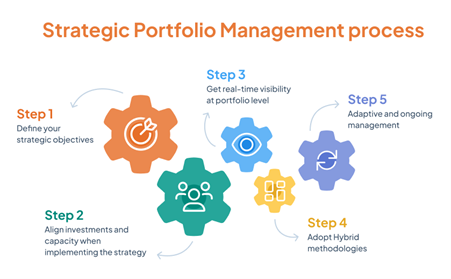
At its core, the role of executive leadership in portfolio planning is to provide clarity of purpose. Executives define the organization’s strategic priorities—its vision for the future, key areas of growth, and the challenges that must be addressed. These priorities form the foundation of portfolio design, helping determine which initiatives to pursue, which to defer, and which to eliminate. Without clear input from the top, portfolio decisions can become fragmented, reactive, or overly influenced by departmental agendas.
Leaders also play a pivotal role in establishing strategic intent. By articulating what success looks like and what trade-offs are acceptable, executives help set boundaries and expectations that shape the selection and evaluation of projects. For example, if an organization’s top priority is expanding into new markets, leadership must signal that growth-oriented initiatives should be prioritized—even if they carry higher risk or require resource shifts.
Another essential responsibility is resource alignment. Executives have visibility across the entire organization and can direct funding, talent, and time toward the most strategically valuable initiatives. This top-level view ensures that high-priority projects are not starved of resources due to local interests or legacy investments. It also enables organizations to be more agile, reallocating resources quickly when market conditions or internal needs change.
Communication is another cornerstone of executive involvement. Leaders must consistently communicate strategic priorities and rationale to middle managers, teams, and other stakeholders. This reinforces alignment and ensures that those responsible for project execution understand how their work fits into the bigger picture. Strong executive communication builds trust, reduces resistance, and helps break down silos that can obstruct coordinated portfolio execution.
Equally important is the role of executives in governance. Senior leaders typically chair or participate in portfolio governance boards, where key decisions about project approval, continuation, or termination are made. Their presence signals that portfolio strategy is a leadership priority, not just an administrative task. Moreover, it enables fast, decisive action when strategic shifts are required.
However, executive involvement must be balanced. While top-down direction is essential, leaders should not micromanage or crowd out insights from lower levels of the organization. The best portfolio decisions emerge when executive vision is complemented by operational input and bottom-up innovation. Leaders must listen to feedback, remain open to ideas from across the business, and foster an inclusive decision-making culture.
Ultimately, executive leadership sets the tone for strategic portfolio planning. When leaders are engaged, clear, and consistent, portfolios become powerful tools for executing strategy—not just collections of projects. Their role is to ensure that the organization’s most valuable initiatives are resourced, aligned, and progressing in service of long-term success.
In summary, executive leadership is the anchor of portfolio planning. Through vision-setting, resource alignment, communication, and governance, they ensure that every initiative in the portfolio contributes meaningfully to the organization’s strategic objectives. Their active engagement transforms portfolio management from a tactical function into a strategic advantage.
Translating Corporate Strategy into Portfolio Criteria
A well-defined corporate strategy provides the overarching direction for an organization—outlining its vision, mission, competitive positioning, and long-term goals. However, for this strategy to guide meaningful action, it must be translated into concrete, decision-driving criteria at the portfolio level. These criteria serve as filters to evaluate, prioritize, and manage initiatives across the organization. Without this translation, portfolio planning can become fragmented, subjective, or misaligned with what matters most to the business.
Portfolio criteria are the standards or guidelines used to assess which projects should be selected, continued, adjusted, or stopped. When based on corporate strategy, these criteria ensure that the portfolio reflects the organization’s priorities and maximizes the value of every investment. Rather than relying on ad hoc decision-making or departmental lobbying, portfolio criteria grounded in strategy offer a consistent, objective way to evaluate proposals.
The translation process begins by breaking down the core components of corporate strategy into strategic themes—such as digital transformation, market expansion, operational excellence, or sustainability. These themes provide the basis for aligning portfolio efforts with enterprise ambitions. From there, specific evaluation criteria can be developed to assess how each project or program supports these themes.
For example, if one of the organization’s strategic goals is to enhance customer experience, then portfolio criteria may include questions like:
• Does the initiative address a key customer pain point?
• Will it improve customer satisfaction scores or retention rates?
• Can outcomes be measured in terms of user engagement or service speed?
If innovation is a strategic priority, evaluation criteria might include:
• Does the project introduce a new business model, product, or technology?
• Does it position the organization ahead of competitors?
• What is the risk-reward profile of the initiative?
It’s important that these criteria are SMART—Specific, Measurable, Achievable, Relevant, and Time-bound. This makes them easier to apply objectively during project selection and prioritization processes. Over time, the criteria may evolve as strategic goals shift, ensuring the portfolio remains dynamic and responsive.
In addition to evaluating alignment with strategic themes, portfolio criteria should consider value, risk, cost, and capacity. A project may align with strategy but still be too costly or risky in the current context. Conversely, a lower-priority initiative may be quick and inexpensive to implement, making it a good candidate for incremental progress. By balancing strategic alignment with feasibility, organizations can make smarter, more nuanced investment decisions.
Cross-functional collaboration is essential in developing and refining these criteria. Input from business units, finance, operations, and governance teams ensures that the criteria are not only aligned with strategy but also grounded in operational realities. This collaborative process fosters shared ownership and strengthens buy-in across the organization.
Once criteria are in place, they should be embedded into governance processes and decision-making tools—such as project intake forms, scoring models, and portfolio dashboards. This helps institutionalize strategic alignment and makes it easier to assess, compare, and justify project choices.
Leaders should also ensure transparency and consistency in applying the criteria. When teams understand how and why decisions are made, it reduces confusion and frustration, builds trust, and encourages better alignment in future project proposals.
In summary, translating corporate strategy into portfolio criteria is a critical enabler of strategic execution. It ensures that portfolio planning is not disconnected from high-level goals, but directly linked to the organization’s purpose, ambitions, and competitive direction. When strategy informs portfolio criteria, organizations can invest more confidently, focus more sharply, and execute with greater impact.

Case Study: WHSmith’s Strategic Divestment
WHSmith, a prominent UK retailer, exemplified strategic portfolio planning through its decision to sell 480 high-street stores to Modella for £76 million. This divestment was not just a financial transaction—it reflected a deliberate shift in portfolio strategy. By exiting less profitable segments, WHSmith reallocated capital and focus toward its thriving travel retail business, which includes stores in airports and railway stations. These locations benefit from higher foot traffic and consumer spending, making them more aligned with the company’s long-term goals. This move illustrates how portfolio criteria—such as profitability, growth potential, and market positioning—can be used to evaluate and refine investments. WHSmith’s decision shows a clear understanding of aligning corporate strategy with portfolio priorities, ensuring that resources are directed toward areas with the greatest strategic value and return on investment. It’s a strong example of dynamic, criteria-driven portfolio management in action.
Achieving Cross-Functional Alignment Through Top-Down Planning
One of the greatest challenges in strategic portfolio management is ensuring that all departments and functions are moving in the same direction. In large, matrixed organizations, it’s easy for teams to become siloed, prioritizing their own goals over enterprise-wide objectives. This misalignment can result in duplicated efforts, conflicting priorities, and inefficient use of resources. Top-down planning is a powerful tool to overcome this challenge by establishing a clear, shared direction from senior leadership that guides all areas of the organization.
Top-down planning begins with the executive team setting a unified strategic vision and translating that into high-level portfolio objectives. These objectives cascade downward, informing the goals and initiatives of individual departments and business units. When the entire organization is working from the same strategic playbook, it becomes far easier to align decisions, coordinate execution, and drive meaningful outcomes.
Cross-functional alignment ensures that departments don’t just optimize for their own success but contribute to the success of the broader organization. For example, if the corporate strategy emphasizes customer experience, marketing, product development, IT, and customer service should all have initiatives that support that aim. Top-down planning makes this possible by providing common criteria for project selection, shared KPIs, and clear governance structures.
A well-structured governance model is central to achieving this alignment. Governance bodies—often made up of senior representatives from key functions—play a role in reviewing initiatives, resolving conflicts, and ensuring that projects are not only strategically aligned but also coordinated across departments. These forums provide visibility into what each function is doing and help identify opportunities for synergy or course correction.
Top-down planning also promotes resource alignment. By setting enterprise-level priorities first, leadership can ensure that budget, talent, and technology are directed toward the most strategically valuable initiatives. This prevents functions from overcommitting to local initiatives at the expense of cross-functional or enterprise-critical work.
However, successful alignment requires more than directives—it also requires communication and engagement. Leaders must clearly communicate the strategic rationale behind top-down decisions and create space for functional teams to ask questions, share insights, and adapt plans to their context. When people understand the “why” behind strategic objectives, they are more likely to commit to the “what” and “how.”
In summary, top-down planning is an essential mechanism for achieving cross-functional alignment. By setting a clear strategic direction from the top and reinforcing it through governance, resource prioritization, and communication, organizations can ensure that every department is working in concert—not competition. This coordinated approach strengthens execution, increases efficiency, and ultimately delivers greater strategic impact.
Balancing Executive Direction with Bottom-Up Innovation
Effective portfolio planning is not just about setting direction from the top—it’s also about creating space for innovation from the bottom. While executive leadership provides the vision and strategic framework for decision-making, the best ideas often come from those closest to the work: employees, teams, and functional units on the ground. Striking the right balance between top-down direction and bottom-up innovation is critical to building a dynamic, forward-thinking portfolio that aligns with strategy while remaining adaptive and innovative.
Executive direction plays a crucial role in providing clarity and focus. Senior leaders define the organization’s long-term goals, articulate its mission and vision, and set priorities that shape investment and resource allocation. This high-level perspective is essential for ensuring that the portfolio reflects corporate strategy and delivers measurable business value. Without it, portfolio decisions risk becoming scattered or misaligned, with departments pulling in different directions.
However, innovation is inherently decentralized. Teams working on the front lines often have the best insight into customer needs, operational inefficiencies, or emerging technologies. These teams are well-positioned to identify new opportunities, test creative solutions, and propose initiatives that challenge conventional thinking. If portfolio governance is too rigidly top-down, it may suppress this innovation by discouraging initiative, limiting experimentation, or rejecting ideas that don’t clearly map to current strategic goals.
To balance these forces, organizations must create structures that support both strategic alignment and creative input. One approach is to set broad strategic themes at the executive level—such as sustainability, digital transformation, or customer-centricity—and invite teams to propose initiatives that contribute to these themes. This ensures that bottom-up ideas remain within strategic bounds while encouraging creativity and ownership.
Innovation pipelines can also be integrated into the portfolio process. These are mechanisms—such as innovation labs, internal venture programs, or pilot project frameworks—that allow teams to test and refine ideas on a small scale before they are evaluated for broader rollout. Executive leaders can support these pipelines by providing funding, setting clear criteria for advancement, and removing barriers to experimentation.
A dual-track governance model is another effective method. One track focuses on core, strategic initiatives that directly reflect executive priorities, while a second track is dedicated to exploratory or experimental initiatives generated by teams across the organization. These innovation portfolios may be smaller in scope but provide essential learning and future growth potential.
Communication and trust are vital to maintaining this balance. Leaders must clearly communicate the organization’s strategic direction and priorities, but they should also listen actively to ideas from all levels. Recognizing and celebrating bottom-up contributions—especially when they influence or reshape strategic thinking—reinforces a culture of inclusion and innovation.
Feedback loops are essential. When bottom-up proposals are rejected or postponed, leaders should explain why—highlighting constraints, trade-offs, or strategic misalignments. Likewise, when ideas succeed, they should be elevated and celebrated. This transparency encourages continued participation and learning across the organization.
Importantly, organizations must also recognize that strategy itself should evolve. Sometimes bottom-up insights challenge the assumptions or direction set at the top—and that’s a good thing. Portfolio leaders should remain open to revisiting strategic priorities when compelling new evidence or opportunities emerge from the ground.
In summary, balancing executive direction with bottom-up innovation is about integration, not opposition. It requires a leadership mindset that values both structure and flexibility. When organizations combine strategic clarity with grassroots creativity, they unlock the full potential of their talent, stay ahead of change, and build portfolios that are both aligned and adaptive.

Exercise 1.3: Pairs Exercise – From Strategy to Portfolio Action
To practice translating high-level strategy into aligned portfolio decisions—and explore how different roles contribute to strategic execution.
1. Pair up with someone from a different team or function (if possible).
2. Imagine your organization has just launched a new strategic goal:
“Accelerate digital innovation to improve customer experience.”
3. Discuss the questions below together. Take turns answering, and challenge each other’s thinking.
1. As a leadership team, how would you define 2–3 portfolio criteria to support this strategic goal?
Think about how you’d filter which initiatives get approved.
2. From your perspective or role, what kind of projects or ideas would you expect to emerge from the ground up?
Where might innovation naturally occur?
3. How would you ensure that the top-down strategy stays aligned with bottom-up contributions without losing focus?
Consider governance, communication, or resource planning.
Identify one concrete change your organization could make to improve alignment between strategy and execution.
Invite a few pairs to share interesting examples, tensions, or proposed changes with the group.

Course Manual 4: Translating Strategy into Measurable KPIs
Even the most well-crafted strategy is only as effective as an organization’s ability to measure its progress. Key Performance Indicators (KPIs) are the vital bridge between strategic intent and performance management. They transform broad goals into specific, trackable outcomes, enabling organizations to monitor success, evaluate impact, and make timely course corrections.
In this lesson, participants will explore how to translate strategic objectives into meaningful KPIs that reflect progress, inform decision-making, and drive accountability. Effective KPIs are not just metrics—they are signals of whether the organization is moving in the right direction, at the right pace, with the right impact.
This session focuses on choosing KPIs that align with strategy, ensuring they are measurable and relevant, and embedding them into performance monitoring systems. Participants will also learn how to balance leading and lagging indicators and create a KPI framework that supports both day-to-day execution and long-term strategic goals.
Defining What Makes a KPI Strategic and Actionable
Key Performance Indicators (KPIs) are essential tools for monitoring progress and guiding decision-making—but not all KPIs are created equal. In the context of strategic portfolio management, KPIs must go beyond operational reporting. They must be deliberately chosen to reflect strategic intent and drive behavior aligned with organizational goals. In short, they must be both strategic and actionable.
A strategic KPI directly ties back to one or more of the organization’s long-term objectives. It provides insight into how well the business is delivering on its mission and moving toward its vision. Strategic KPIs are typically derived from high-level goals—such as increasing customer satisfaction, entering new markets, or achieving operational excellence. Unlike tactical metrics that measure isolated activities (e.g., number of meetings held), strategic KPIs offer a broader view of outcomes and impact.
To be actionable, a KPI must not only reflect what’s important, but also offer a clear path to improvement. An actionable KPI gives managers and teams enough insight to make informed decisions and take corrective action when necessary. It should highlight what’s working, what’s not, and what can be done differently to improve performance. For example, a KPI such as “customer retention rate” is actionable when paired with contextual data—like feedback scores or churn reasons—that helps identify specific levers to improve retention.
The best KPIs are both quantitative and meaningful. They are measurable (expressed in numbers or percentages), regularly updated, and consistently interpreted across the organization. Importantly, they are also relevant to the audience that uses them. Executive leadership may track broad indicators like return on strategic investment or market share growth, while teams may focus on more granular KPIs that align with those outcomes, such as average resolution time or product adoption rates.
A useful framework for evaluating the strength of a KPI is the SMART model—it should be:
• Specific – Clearly defined and focused on a single outcome.
• Measurable – Quantifiable through reliable data sources.
• Achievable – Realistic given available resources and timeframes.
• Relevant – Directly tied to a strategic objective or business priority.
• Time-bound – Framed within a specific reporting period.
In strategic portfolio management, KPIs should also align with portfolio criteria and themes, such as innovation, efficiency, or customer experience. This alignment ensures consistency between what the organization is trying to achieve and how it measures success across all initiatives.
Finally, strategic KPIs should be limited in number but high in value. Too many metrics dilute focus and overwhelm teams. A concise set of carefully chosen KPIs ensures that everyone remains aligned, focused, and responsive.
In summary, strategic and actionable KPIs are not just performance metrics—they are strategic instruments. When designed well, they clarify priorities, guide action, and ensure that the portfolio delivers measurable value aligned with long-term objectives.
Linking KPIs to Portfolio-Level Objectives
In strategic portfolio management, setting ambitious goals is not enough—organizations must also measure whether they are making meaningful progress. This is where the link between Key Performance Indicators (KPIs) and portfolio-level objectives becomes essential. KPIs translate high-level strategic intentions into measurable results, providing a mechanism for tracking success, diagnosing issues, and ensuring accountability across the portfolio.
Portfolio-level objectives represent the key outcomes an organization wants to achieve through its strategic initiatives. These may include expanding into new markets, improving customer satisfaction, increasing operational efficiency, or accelerating digital innovation. While these objectives provide direction, KPIs give them traction by clarifying what success looks like in tangible, quantifiable terms.
To create effective alignment, each portfolio objective should be matched with a set of relevant KPIs that measure progress toward the intended outcome. For example:
• Objective: Improve customer experience
KPI: Net Promoter Score (NPS), Customer Satisfaction (CSAT), average response/resolution time
• Objective: Drive digital transformation
KPI: Percentage of services digitized, digital adoption rates, time-to-market for new digital features
• Objective: Increase operational efficiency
KPI: Cost per transaction, process cycle time, resource utilization rate
By linking KPIs directly to strategic outcomes, organizations create a clear line of sight from execution to intent. This clarity enables portfolio managers and leaders to make more informed decisions about which initiatives are contributing to success and which may need to be adjusted or retired.
This linkage also reinforces prioritization. When KPIs are connected to objectives, it becomes easier to compare projects based on their likely contribution to strategic outcomes. Projects that strongly influence high-priority KPIs rise to the top of the portfolio, while others can be delayed or deprioritized.
An effective method for ensuring this alignment is to use a strategy map or KPI matrix. This tool visually connects corporate objectives to supporting KPIs and then to the initiatives designed to achieve them. It helps identify gaps (objectives with no KPIs or initiatives) and overlaps (initiatives that serve multiple goals), which supports better portfolio balancing.
Another important benefit of linking KPIs to portfolio objectives is that it creates shared accountability. When teams understand which KPIs they are driving and how those KPIs connect to enterprise goals, they are more likely to stay focused, engaged, and aligned. It also promotes collaboration across departments that may be working on different initiatives but share the same performance outcomes.
In summary, linking KPIs to portfolio-level objectives is a fundamental step in translating strategy into execution. It ensures that the organization’s performance tracking is purposeful, relevant, and directly tied to what matters most. When done well, this linkage empowers teams to work smarter, leaders to manage more strategically, and the organization to deliver results that truly support its mission.
Balancing Leading and Lagging Indicators
In portfolio performance management, choosing the right mix of Key Performance Indicators (KPIs) is critical. One of the most important balances to strike is between leading and lagging indicators. While both are essential, understanding their roles—and how to use them together—can significantly enhance strategic decision-making, risk management, and overall effectiveness of a portfolio.
Lagging indicators measure outcomes that have already occurred. They are typically retrospective and show whether strategic objectives have been achieved. Common examples include revenue growth, customer satisfaction scores, cost savings, or market share. These indicators are highly valuable because they provide clear evidence of success or failure. However, they are reactive—they tell you what happened but not why it happened, or how to change the outcome before it’s too late.
Leading indicators, on the other hand, are predictive. They provide early signals that can suggest whether the portfolio is on track to deliver desired outcomes. Examples include project milestone completion rates, employee engagement levels, customer inquiry volume, or time-to-market for new initiatives. While they don’t guarantee success, they highlight trends and patterns that can guide proactive adjustments. For instance, if employee engagement begins to drop, it could predict future challenges in productivity or innovation delivery.
An effective portfolio measurement system incorporates both types of indicators to create a more complete and responsive view of performance. Lagging indicators help validate strategic impact, while leading indicators provide the foresight to manage execution risk and stay agile.
For example, let’s say a company has a strategic objective to improve customer satisfaction:
• Lagging indicator: Customer Satisfaction Score (CSAT) at the end of each quarter
• Leading indicators: Number of customer complaints per week, average wait time in support queue, employee training completion rates
If the lagging indicator drops, it signals a problem. But leading indicators can help identify the issue sooner and guide corrective action before the overall experience deteriorates.
Balancing these two types of metrics also enhances portfolio agility. With early warnings from leading indicators, decision-makers can reallocate resources, revise timelines, or adjust priorities mid-stream—rather than waiting for quarterly reports that highlight issues after the fact. This can prevent delays, cost overruns, or misalignment with strategy.
However, not all indicators are equally useful. Leading indicators are often harder to define and measure, as they require organizations to hypothesize what actions or trends drive success. It’s important to regularly review whether chosen indicators are still relevant, reliable, and clearly linked to desired outcomes.
In summary, balancing leading and lagging indicators ensures that portfolio monitoring is both strategic and adaptive. It empowers organizations to learn in real time, correct course early, and stay focused on long-term goals without being blindsided by short-term issues. The combination of foresight and validation is what turns performance data into meaningful action.
Designing a KPI Dashboard for Strategic Visibility
In today’s fast-paced business environment, executives and portfolio managers need real-time, accessible insights to make informed decisions. A well-designed KPI dashboard provides a centralized view of key metrics that reflect the organization’s strategic goals. A strategic KPI dashboard isn’t just a collection of numbers—it’s a decision-support tool that helps leaders visualize progress, identify trends, and take timely action.
A KPI dashboard brings together the most important performance indicators into one place, enabling quick access to data that aligns with the organization’s objectives. When designed effectively, it offers strategic visibility—a comprehensive, real-time snapshot of how well the portfolio is performing in relation to set goals. It allows executives and stakeholders to monitor progress toward both short-term goals and long-term strategic objectives without having to dig through complex reports.
Key Design Elements for a Strategic KPI Dashboard
1. Alignment with Strategic Objectives: The first step in creating a KPI dashboard is identifying the key strategic objectives the dashboard will support. These objectives must be clearly defined and measurable, as the KPIs should reflect those high-level goals. For instance, if an organization’s strategic goal is to enhance customer experience, the dashboard should focus on KPIs like Customer Satisfaction (CSAT), Net Promoter Score (NPS), and First Response Time (FRT). Aligning KPIs with strategy ensures the dashboard remains relevant and focused on the most impactful metrics.
2. Clear and Actionable Metrics: A good dashboard is intuitive and easy to interpret. The metrics displayed should be actionable—meaning they offer insights that prompt decisions or actions. For example, a declining Customer Retention Rate might prompt an investigation into customer satisfaction, which could lead to process improvements or a shift in customer service practices. Avoid cluttering the dashboard with excessive metrics that don’t provide immediate value. Instead, focus on a few critical metrics that give an accurate picture of performance.
3. Real-Time Data and Automation: For a dashboard to be effective, it must pull data in real-time or at least on a regular, automated basis. This ensures that the insights presented are up-to-date and relevant. Real-time data enables managers to act quickly and pivot as needed. The data sources for the dashboard should be integrated with key business systems—such as CRM, project management tools, and financial software—to allow automatic data updates. Automation reduces manual effort, increases accuracy, and ensures consistency across reports.
4. Visualization for Clarity: A well-designed KPI dashboard doesn’t just present raw numbers; it leverages visual elements to make the data easy to interpret. Charts, graphs, and heatmaps can visually highlight performance trends, variances, and outliers. For instance, a bar chart may show how customer satisfaction scores vary across different regions, while a line graph could illustrate month-to-month changes in revenue. Color coding (e.g., green for on-track, red for underperformance) can further enhance the clarity of the dashboard. The key is to make data easily digestible at a glance.
5. Interactivity and Drill-Down Capability: A good KPI dashboard allows for interactivity. Users should be able to drill down into the metrics to explore deeper insights. For example, a user might click on a low-performing KPI to see the underlying causes—whether it’s related to a specific department, region, or customer segment. This functionality ensures the dashboard isn’t just a static reporting tool, but an interactive, dynamic resource for deeper analysis and decision-making.
Benefits of a KPI Dashboard for Strategic Visibility
A well-constructed KPI dashboard provides several key benefits:
• Quick Decision Making: Leaders can access the most relevant performance metrics in real-time, enabling quick responses to emerging issues or new opportunities.
• Strategic Alignment: A dashboard ensures that teams at all levels of the organization are aligned with strategic objectives by continuously tracking progress toward goals.
• Improved Accountability: With transparent KPIs, departments and teams are more likely to stay focused on strategic priorities, knowing their performance is being monitored.
• Efficiency Gains: Automating data collection and visualization saves time, reduces errors, and eliminates the need for manual reporting, leading to faster insights.
In conclusion, designing a KPI dashboard for strategic visibility is about making the right data accessible, actionable, and aligned with long-term objectives. When done well, it serves as a powerful tool for both monitoring and driving performance, ensuring that every initiative is working toward the broader strategic goals of the organization.

Case Study: Microsoft – Executive KPI Dashboards
Microsoft exemplifies strategic KPI dashboard design through its use of Power BI, a tool it developed to support real-time, cross-departmental visibility into performance. The company’s executive dashboards track a range of strategic KPIs—including product usage, customer engagement, and cloud adoption rates—providing leadership with up-to-date insights that inform decision-making at the highest levels. These dashboards allow Microsoft to quickly identify trends, flag underperformance, and respond to shifts in customer behavior or market demand.
What sets Microsoft apart is how these dashboards directly align with the company’s strategic priorities. For example, Azure growth is not just a goal—it’s embedded into the dashboard through KPIs like customer expansion, subscription growth, and service utilization. This approach ensures that every department is not only aware of high-level goals but can see and measure their contribution to them. Microsoft’s use of KPI dashboards reinforces strategic alignment, agility, and enterprise-wide accountability.
Using KPIs for Ongoing Review and Course Correction
In strategic portfolio management, simply setting KPIs is not enough. The true value of Key Performance Indicators lies in how they are used—specifically, in their role as a feedback mechanism for ongoing review and course correction. KPIs provide a continuous stream of insights that help organizations stay aligned with their strategic objectives, identify emerging issues, and adjust their approach before small problems become major setbacks.
KPIs should be integrated into a regular review rhythm—weekly, monthly, or quarterly—depending on the nature of the portfolio and the organization’s pace of change. These reviews should not just focus on whether targets were met, but more importantly, on why performance is improving or declining. This analysis helps leaders understand root causes, assess external influences, and determine whether current initiatives are still relevant and impactful.
For example, if a KPI such as “time-to-market for product launches” begins to slip, a review might reveal bottlenecks in the development process, shifting customer requirements, or insufficient resources. This insight enables timely intervention—whether that means reallocating talent, adjusting timelines, or revising project scope.
KPIs also play a vital role in preventing strategic drift. In dynamic environments, organizational priorities may shift due to market changes, customer needs, or internal challenges. When KPIs are reviewed regularly, they act as a strategic compass, helping teams course-correct and realign their efforts with the evolving direction. This ensures that the portfolio remains dynamic and responsive, rather than static and outdated.
In addition, transparent KPI reviews promote cross-functional accountability. When teams regularly report on shared metrics, it fosters collaboration, encourages knowledge-sharing, and reduces siloed decision-making. Everyone has a clearer understanding of how their work contributes to strategic goals—and where collective adjustments are needed.
Crucially, the review process should remain constructive, not punitive. KPIs should be used to learn, adapt, and optimize, not to assign blame. Encouraging open dialogue around results builds a culture of continuous improvement and empowers teams to take ownership of both successes and challenges.
In summary, using KPIs for ongoing review and course correction is about staying proactive, aligned, and agile. When leveraged effectively, KPIs do more than measure performance—they guide it.

Exercise 1.4: Metric or Meh
To help participants distinguish between meaningful KPIs and less strategic metrics—and spark discussion around what makes a KPI valuable.
1. Divide participants into small groups or pairs.
2. Read out a list of example metrics (see below), mixing strong KPIs with weaker or irrelevant ones.
3. For each one, groups quickly decide:
“KPI” (Yes – it’s strategic and actionable) or “Meh” (No – it’s not useful in a strategic context).
4. After each response, ask for a quick explanation:
Why did you classify it that way? How could it be improved?
• Number of meetings held this quarter
• Customer retention rate
• Percentage of projects completed on time
• “Happy team” score from anonymous sticky notes
• Time-to-market for new features
• Net Promoter Score (NPS)
• Number of coffee cups consumed during project phase
• What makes a KPI strategic and actionable?
• Which ones were harder to classify?
• What surprised you about the discussion?

Course Manual 5: Goal Setting Frameworks for Portfolio Optimization
Clear, structured goal setting is essential to translating strategy into execution—especially when managing complex portfolios with multiple priorities, teams, and timelines. Without a consistent framework, organizations risk vague objectives, misaligned initiatives, and inconsistent performance measurement. This lesson introduces participants to proven goal-setting frameworks that bring structure, clarity, and strategic focus to portfolio optimization.
From the simplicity of SMART goals to the alignment power of OKRs (Objectives and Key Results) and the strategic discipline of Hoshin Kanri, each framework offers unique benefits for setting, communicating, and tracking goals at different organizational levels. By understanding how to choose and apply these frameworks, portfolio leaders can ensure that every objective is actionable, measurable, and aligned with overarching strategic ambitions.
Participants will explore the strengths and use cases of each model, learn how to cascade goals through teams and departments, and evaluate which approach best fits their organization’s structure and culture.
Understanding SMART Goals and Their Portfolio Applications
The SMART goal framework is one of the most widely used tools for setting clear, actionable objectives across industries and functions. Its strength lies in its simplicity and adaptability, making it particularly valuable for portfolio optimization, where clarity, focus, and accountability are critical.
SMART stands for Specific, Measurable, Achievable, Relevant, and Time-bound. Each element ensures that goals are not just well-intentioned, but well-defined and executable:
• Specific: The goal is clear and unambiguous. In a portfolio context, this might mean identifying the exact outcome of a project or initiative.
• Measurable: Success can be quantified or evaluated using defined metrics.
• Achievable: The goal is realistic, given the available resources and constraints.
• Relevant: The objective aligns with strategic priorities and portfolio-level themes.
• Time-bound: There is a deadline or timeframe for completion.
In portfolio management, SMART goals help define the expected outcomes of individual projects, ensure alignment with broader strategic objectives, and allow for consistent performance tracking across initiatives. For example, instead of setting a vague goal like “Improve customer service,” a SMART version would be: “Increase the Customer Satisfaction Score (CSAT) by 10% across all support channels within six months.”
SMART goals also support prioritization, helping portfolio managers decide which projects to greenlight based on how clearly and effectively they contribute to desired outcomes. When consistently applied, SMART goals make portfolio performance more transparent, allowing leadership to assess value, impact, and risk with greater confidence.
In summary, SMART goals serve as a practical foundation for turning strategy into structured, trackable action within portfolio environments. Their clarity helps teams stay focused, deliver results, and remain accountable throughout the project lifecycle.
Using OKRs to Drive Strategic Alignment and Focus
OKRs (Objectives and Key Results) are a powerful framework for aligning strategic intent with measurable outcomes. Popularized by companies like Google and Intel, OKRs are designed to bring focus, transparency, and agility to goal setting—making them particularly well-suited for portfolio optimization.
An Objective is a clear, qualitative statement of what you want to achieve. It’s meant to be inspirational and directional. Key Results are specific, measurable outcomes that indicate progress toward that objective. Typically, each objective is supported by 2–5 key results, which serve as success criteria.
For example:
• Objective: Enhance our market leadership in digital solutions.
• Key Results:
1. Launch three new AI-driven features by Q4
2. Increase digital product usage by 25%
3. Achieve customer NPS of 45+ on digital platforms
In the context of portfolio management, OKRs help ensure that projects and initiatives are directly linked to strategic goals. Rather than tracking isolated tasks, portfolio managers use OKRs to evaluate whether the work being done is actually moving the organization forward. This creates alignment between high-level strategy and day-to-day execution, ensuring that resources are invested in what truly matters.
OKRs are also valuable for focus and prioritization. By limiting the number of objectives per cycle and measuring progress frequently (often quarterly), teams are encouraged to commit to fewer, higher-impact goals. This focus reduces initiative overload and helps organizations stay agile in dynamic environments.
Finally, OKRs promote a culture of accountability and transparency. When shared across departments, they enable cross-functional alignment and make it easier to track performance against common goals.
In summary, OKRs offer a structured yet flexible approach to linking strategy with measurable execution—making them an ideal tool for portfolio alignment and performance management.
Hoshin Kanri: Bridging Long-Term Strategy with Daily Execution
Hoshin Kanri, often translated as “policy deployment” or “strategy deployment,” is a goal-setting and execution framework developed in Japan. Its purpose is to align an organization’s strategic vision with operational activities, ensuring that long-term objectives are systematically translated into daily work. In the context of portfolio optimization, Hoshin Kanri offers a powerful approach to ensure that every initiative, across every level of the organization, is contributing to the same strategic direction.
What Is Hoshin Kanri?
Hoshin Kanri is both a planning methodology and a management philosophy. It helps organizations set a small number of breakthrough goals—long-term strategic priorities that are critical for future success—and then cascade those goals throughout the organization. The method places strong emphasis on alignment, communication, and feedback between levels of leadership and frontline teams.
The key principle of Hoshin Kanri is to “catch the ball”—a metaphor that reflects the interactive, two-way planning process. Rather than strategy being pushed down in a rigid, top-down manner, leaders and teams engage in dialogue to interpret and adapt strategic objectives to their specific functions. This results in stronger buy-in, more realistic planning, and better alignment between strategy and execution.
The Hoshin Planning Process
The typical Hoshin Kanri process involves several steps:
1. Establish Vision and Breakthrough Objectives
Leadership defines a clear long-term vision—often 3 to 5 years—and identifies 1 to 5 “breakthrough objectives” that must be achieved to realize that vision.
2. Develop Annual Objectives
These long-term goals are broken down into annual objectives that make the strategy more actionable. At this stage, organizations define what success looks like for the year ahead.
3. Cascade Goals Across Departments
Departments and teams “catch the ball” and develop their own supporting goals and action plans that align with the annual objectives. This creates a direct line between strategy and day-to-day activities.
4. Deploy and Execute
Action plans are implemented, and performance is tracked against defined metrics. Teams are responsible for executing their part of the plan and reporting progress.
5. Review and Adjust (PDCA Cycle)
Hoshin Kanri uses the Plan-Do-Check-Act (PDCA) cycle to continuously review progress, identify gaps, and adjust as needed. This ensures agility and learning as conditions evolve.
Why Hoshin Kanri Works for Portfolio Optimization
Portfolio optimization is the practice of balancing a mix of projects, programs, and initiatives to ensure they deliver the greatest possible strategic value. Hoshin Kanri supports this process by offering a disciplined, systematic approach to prioritization and alignment. One of its strengths is its strategic focus. By identifying and committing to a small number of breakthrough goals, Hoshin Kanri helps organizations avoid initiative overload. Instead of spreading resources thinly across numerous efforts, it concentrates attention and investment on the initiatives that matter most.
Another key benefit is its ability to foster cross-functional alignment. As teams develop their own supporting goals in response to the enterprise’s strategic objectives, silos are reduced and collaboration increases. Every project or program can be directly tied back to an organizational priority, strengthening cohesion and consistency across departments.
Hoshin Kanri also enhances visibility and accountability. Through the use of tools such as dashboards, performance reviews, and consistent documentation, leaders at all levels can clearly see how initiatives align with strategic aims. This level of transparency helps ensure shared responsibility across the organization—from executive sponsors to delivery teams.
Importantly, Hoshin Kanri is built with adaptability in mind. Regular reviews and the use of the Plan-Do-Check-Act (PDCA) cycle make it possible to respond quickly to new information or shifting priorities. When strategy needs to evolve, the framework allows adjustments to cascade smoothly throughout the organization, maintaining alignment without unnecessary disruption.
Tools Used in Hoshin Kanri
Several tools support the effective application of Hoshin Kanri. One of the most recognized is the X-Matrix—a visual planning tool that illustrates the alignment between long-term objectives, annual goals, improvement initiatives, responsible owners, and relevant performance metrics. It provides a holistic view of strategic connections and helps portfolio leaders identify gaps or overlaps in effort.
Another core tool is the catchball process, which refers to the iterative exchange of ideas and planning between leadership and teams. This dialogue helps ensure that strategic goals are not only understood at all levels, but also grounded in operational realities. It builds alignment through conversation, rather than just communication.
A3 reports are also commonly used in Hoshin Kanri. These concise documents summarize a plan, challenge, or performance review on a single A3-sized sheet of paper. The structure encourages clear thinking, disciplined planning, and consistent reporting—making it easier for teams to communicate and share insights.
When to Use Hoshin Kanri
Hoshin Kanri is particularly valuable in environments where there is a need to realign the organization’s focus or reestablish strategic discipline. It is especially helpful when strategy execution has historically suffered from fragmentation or poor follow-through. Organizations that aim to build a culture of shared ownership, clarity, and strategic awareness often benefit from adopting Hoshin Kanri.
The framework is also well suited to situations where long-term success depends on cross-functional collaboration and continuous learning. It is frequently applied in industries such as manufacturing, healthcare, education, and large-scale enterprises—where strategic objectives must be translated consistently across diverse operational settings.
Challenges and Considerations
While Hoshin Kanri offers many advantages, it is not without challenges. The process requires time, commitment, and coordination. The catchball process and cascading goal-setting depend on strong managerial discipline and the willingness to engage in ongoing, structured dialogue. For organizations that lack a culture of open communication or clear accountability, the transparency required by Hoshin Kanri may be difficult to establish and sustain.
Additionally, without careful oversight, some of the tools—particularly the X-Matrix—can become overly complex or bureaucratic. Overdesigning the process can reduce agility and overwhelm teams with unnecessary detail. To be successful, organizations should invest in appropriate training, secure leadership alignment, and develop a clear communication strategy to ensure understanding and sustained engagement.
Conclusion
Hoshin Kanri is much more than a goal-setting framework—it is a comprehensive approach to strategy alignment, disciplined execution, and continuous improvement. It creates a structured path for translating long-term vision into tangible outcomes, ensuring accountability at every level of the organization.
By bridging the gap between strategy and day-to-day execution, Hoshin Kanri helps organizations stay focused, adaptable, and strategically coherent. For portfolio leaders, it offers a valuable method for keeping all initiatives connected to purpose, prioritized for impact, and designed to deliver real, transformative value.
Comparing Frameworks: When to Use What and Why
In portfolio optimization, selecting the right goal-setting framework can significantly influence clarity, alignment, and execution. While SMART goals, OKRs, and Hoshin Kanri all serve the purpose of translating strategy into action, each is suited to different organizational needs, cultures, and levels of complexity. Understanding their unique strengths and ideal use cases allows portfolio leaders to apply the right tool at the right time.
SMART goals are best suited for individual projects, short-term objectives, and teams that need a simple, clear structure to define and measure success. Their strength lies in precision. A well-crafted SMART goal—specific, measurable, achievable, relevant, and time-bound—creates instant clarity and accountability. This framework works well when the task at hand is focused, self-contained, and does not require alignment across multiple functions. For example, setting SMART goals is ideal for operational teams tracking performance metrics or project managers defining deliverables.
OKRs (Objectives and Key Results) are ideal when the organization wants to foster alignment and focus across departments while maintaining agility. OKRs are particularly effective in dynamic, fast-paced environments such as tech companies, startups, and innovation-driven teams. The strength of OKRs lies in their ability to balance ambition with measurement. Objectives are qualitative and inspirational, while Key Results are quantitative and time-bound. OKRs are typically reviewed quarterly, making them well-suited for teams that need to adjust quickly based on progress or feedback. This framework is powerful for aligning individual and team goals with broader corporate strategy—especially when cross-functional collaboration is required.
Hoshin Kanri, by contrast, is best for organizations undergoing transformation, managing long-term strategy, or operating in highly structured, hierarchical environments. Its strength is in comprehensive alignment and rigorous execution. Hoshin Kanri is often used in manufacturing, healthcare, education, or government—sectors where long-term strategic planning must be embedded into daily operations. Unlike OKRs or SMART goals, Hoshin Kanri emphasizes two-way communication through its “catchball” process, ensuring that strategic objectives are adapted at each level of the organization. It’s especially useful when strategy needs to cascade with clarity and commitment across multiple departments or business units.
Each framework also varies in its cultural fit and maturity requirements. SMART goals require minimal training and are easy to implement, making them accessible at any stage of organizational maturity. OKRs demand a culture of transparency, data-driven thinking, and frequent feedback loops. Hoshin Kanri requires a disciplined planning process, a strong foundation of trust and collaboration, and long-term commitment from leadership.
In many cases, organizations benefit from blending frameworks. For example, Hoshin Kanri might be used at the enterprise level to drive long-term strategy, while OKRs are used at the team level to track quarterly progress, and SMART goals help structure individual tasks. The key is to ensure consistency in how goals connect and how success is measured.
In summary, choosing the right framework depends on your organization’s strategic context, culture, and maturity. Each model offers a different lens for turning vision into action—and when used thoughtfully, they provide a powerful foundation for optimizing portfolio performance.

Case Study
1. OKRs (Objectives and Key Results):
• Intel: Intel pioneered the OKR framework under the leadership of Andy Grove, using it to drive focus and alignment across the organization. This approach was instrumental in Intel’s strategic execution and operational efficiency.
2. Hoshin Kanri:
• Toyota: Toyota has long utilized Hoshin Kanri to align its long-term strategic objectives with daily operations. This disciplined approach has contributed to Toyota’s reputation for operational excellence and continuous improvement.
3. Integrating OKRs with Hoshin Kanri:
• Various Organizations: Some companies integrate OKRs within the Hoshin Kanri framework to enhance strategic alignment and agility. By doing so, they combine the structured, long-term focus of Hoshin Kanri with the flexibility and measurable outcomes of OKRs, ensuring that strategic objectives are effectively translated into actionable and measurable results.
These examples illustrate how organizations tailor goal-setting frameworks to their unique strategic needs, cultures, and operational contexts, thereby enhancing performance and achieving strategic objectives.
Integrating Goal Frameworks into Portfolio Governance
Integrating goal-setting frameworks into portfolio governance is essential for maintaining strategic alignment, ensuring accountability, and making data-informed decisions across the organization. Governance is the structure through which portfolios are evaluated, prioritized, and monitored—so embedding SMART goals, OKRs, or Hoshin Kanri into this process creates a clear line of sight from strategy to execution.
When goal frameworks are formally integrated into governance, portfolio decisions become more objective and transparent. For example, project proposals can be evaluated based on how well they support SMART goals or contribute to OKRs at the organizational level. Governance bodies—such as steering committees or investment boards—can use these frameworks as filters to ensure that only initiatives aligned with strategic intent move forward.
OKRs can be reviewed quarterly during governance meetings to assess progress, identify misalignments, or adjust resource allocation. SMART goals can help define success criteria for individual projects, feeding into performance dashboards and stage-gate reviews. In Hoshin Kanri, governance is embedded throughout the process, with regular “catchball” exchanges and PDCA cycles ensuring that strategic goals are adapted and tracked at every level.
Integrating these frameworks also enhances cross-functional coordination. When every team uses a consistent approach to setting and tracking goals, governance structures can compare initiatives on equal footing—making trade-offs and prioritization easier and more defensible.
Ultimately, integrating goal-setting frameworks into governance makes strategy actionable and measurable. It empowers leaders to make informed, timely decisions and ensures that every investment is contributing to the organization’s long-term vision. By embedding goal-setting into portfolio oversight, organizations create a living system where strategy is not only set at the top, but actively shaped, tracked, and refined through every governance touchpoint.

Exercise 1.5: Match the Framework
To help participants internalize the differences between SMART goals, OKRs, and Hoshin Kanri by applying each framework to a sample strategic scenario.
1. Pair up with someone.
2. Choose one of the following strategic scenarios (or make up your own based on your organization):
• Launching a new product in a competitive market
• Improving employee engagement and retention
• Scaling a digital service across new regions
3. As a pair, do the following:
• Step 1: Write one SMART goal based on the scenario. Make sure it’s Specific, Measurable, Achievable, Relevant, and Time-bound.
• Step 2: Draft one OKR, including an inspirational Objective and 2–3 measurable Key Results.
• Step 3: Briefly outline how the same goal might be approached using Hoshin Kanri (e.g., What might a breakthrough objective be? Who would be involved in cascading and catchball?)
4. Discuss with your partner:
• Which framework felt most natural to use?
• What are the strengths or limitations of each in this context?

Course Manual 6: Prioritization Techniques for Strategic Goals
In portfolio management, having a clear strategy is only the beginning—knowing what to prioritize is what turns strategy into impact. With limited time, budget, and resources, organizations must make smart, consistent choices about which goals, projects, or initiatives to focus on. Without a clear prioritization framework, teams risk spreading themselves too thin, chasing low-impact goals, or reacting to the loudest voices rather than the most strategic needs.
This lesson introduces participants to practical prioritization techniques that support strategic decision-making in complex environments. By using structured tools like the MoSCoW Method, Eisenhower Matrix, and Weighted Scoring models, organizations can assess competing objectives based on urgency, value, effort, and alignment with broader goals. These methods empower leaders to allocate resources wisely, say “no” when necessary, and focus execution where it matters most.
Participants will learn how to apply these techniques to real portfolio decisions, collaborate across teams using shared criteria, and tailor prioritization to their organization’s unique context and constraints. The result is greater clarity, efficiency, and strategic focus.
The MoSCoW Method: Categorizing Priorities by Value and Necessity
The MoSCoW method is a simple but highly effective prioritization framework that helps organizations make clear decisions about which strategic goals or project elements to focus on first. Widely used in project management and agile development, MoSCoW stands for four categories of prioritization: Must have, Should have, Could have, and Won’t have (this time). This approach ensures that decision-makers and stakeholders align on what is essential for success versus what is desirable or optional.
Must Have
These are the non-negotiable items—objectives or features that are critical to the success of the portfolio or project. If these are not delivered, the outcome is likely to fail or lose strategic value. In a portfolio context, “must have” initiatives are those that directly support core business goals, meet regulatory requirements, or unlock key customer or operational outcomes. For example, if a strategic goal is to meet a regulatory compliance deadline, all initiatives tied to that outcome become “must haves.”
Should Have
These objectives are important but not vital. Their absence won’t cause outright failure, but it will reduce the impact or completeness of results. “Should have” initiatives are often those that enhance value, efficiency, or user experience—but can be deferred if time or resources are limited. For example, redesigning a user interface may improve satisfaction but is not mission-critical for the product’s initial release.
Could Have
These are the “nice to have” goals or features—objectives that would bring added benefit but are not necessary for success. In portfolios, “could have” might include pilot programs, stretch innovations, or enhancements that are not directly tied to current strategic priorities. Including these without careful consideration can lead to overextension or loss of focus.
Won’t Have (This Time)
Perhaps the most powerful category in MoSCoW is the “Won’t have”—goals or initiatives explicitly deprioritized for the current planning cycle. This doesn’t mean these ideas lack merit; rather, it signals a deliberate decision to focus on what matters most now. This clarity helps prevent scope creep, aligns expectations, and reduces the risk of initiative overload.
Why It Works for Strategic Prioritization
The strength of the MoSCoW method lies in its simplicity and flexibility. It provides a shared language for evaluating competing demands and is especially useful when there are multiple stakeholders with differing views. By categorizing objectives into tiers of importance, teams can quickly identify trade-offs and focus efforts where they’ll have the most strategic impact.
In strategic portfolio management, the MoSCoW method can be used during planning workshops, governance reviews, or initiative scoring sessions. It encourages disciplined thinking and makes it easier to align decisions with limited resources and shifting priorities.
Conclusion
The MoSCoW method is more than a task filter—it’s a strategic tool that helps leaders and teams make focused, confident decisions. When applied consistently, it sharpens portfolio clarity, enhances resource allocation, and strengthens strategic execution by distinguishing what truly must be done from what merely could be.
Applying the Eisenhower Matrix for Strategic Time and Effort Allocation
The Eisenhower Matrix, also known as the Urgent-Important Matrix, is a decision-making tool that helps prioritize tasks and goals based on their urgency and importance. Named after U.S. President Dwight D. Eisenhower—who was known for his productivity and strategic clarity—the framework is especially useful in portfolio management, where teams must balance long-term strategy with immediate demands.
The matrix is divided into four quadrants:
1. Important and Urgent (Do Now):
These are high-priority items that require immediate attention. In a portfolio context, this might include regulatory compliance initiatives, crisis response projects, or time-sensitive customer commitments. Failing to act on these can result in significant business risk or missed opportunities.
2. Important but Not Urgent (Plan):
This is where strategic planning lives. These initiatives are aligned with long-term goals but don’t require immediate execution. Examples include innovation programs, infrastructure upgrades, or workforce development efforts. Because they don’t feel urgent, they’re often neglected—yet they’re the most critical for future success. Strong portfolio leaders allocate protected time and resources to these areas to ensure sustainable growth.
3. Not Important but Urgent (Delegate):
These tasks may appear pressing—like last-minute report requests, internal meetings, or reactive fixes—but they don’t significantly contribute to strategic goals. When possible, they should be delegated or streamlined to avoid derailing focus. In portfolio governance, this quadrant might include stakeholder noise or “fire drills” that divert attention from planned work.
4. Not Important and Not Urgent (Eliminate):
These items are distractions. They consume time without adding value, such as outdated reports, low-impact features, or redundant reviews. Identifying and eliminating these from the portfolio helps conserve resources and sharpen focus on what truly matters.
Strategic Value in Portfolio Optimization
The Eisenhower Matrix isn’t just a personal productivity tool—it’s a powerful lens for portfolio prioritization. It encourages teams and leaders to distinguish between what’s urgent (demanding attention) and what’s important (driving long-term outcomes). This distinction is crucial in environments where bandwidth is limited, and decisions need to reflect both short-term realities and strategic intent.
By applying the matrix, organizations can rebalance their portfolios away from “firefighting” and toward proactive, value-driven initiatives. Teams can map current projects against the quadrants to see where effort is being spent—and where it should shift. For example, if most portfolio resources are tied up in the “urgent but not important” quadrant, that’s a red flag that strategic focus is being lost.
Practical Application
During portfolio planning or review sessions, teams can use the Eisenhower Matrix to evaluate initiatives by asking:
• Is this project critical to our strategy, or just reacting to external pressure?
• Are we investing enough in long-term capability building?
• What urgent distractions can we minimize or delegate?
This promotes more conscious, intentional decision-making and helps protect time for strategic work.
Conclusion
The Eisenhower Matrix is a valuable tool for allocating time and resources strategically within a portfolio. By distinguishing between urgency and importance, it helps organizations stay focused, reduce noise, and prioritize initiatives that drive lasting value. When used effectively, it shifts the conversation from “what’s loudest” to “what matters most.”
Using Weighted Scoring Models to Compare Competing Objectives
In strategic portfolio management, organizations often face the challenge of choosing between multiple valuable initiatives, all competing for limited resources. Weighted scoring models provide a structured, data-driven approach for comparing these competing objectives. By assigning relative weights to key criteria and scoring each initiative accordingly, decision-makers can evaluate projects more objectively, transparently, and consistently.
What Is a Weighted Scoring Model?
A weighted scoring model is a prioritization tool that helps evaluate options based on multiple criteria. Each criterion is given a specific weight according to its importance to the organization’s strategy, and each project or objective is scored against these criteria. The final score helps determine which initiatives deliver the greatest value relative to organizational goals.
Common scoring criteria include:
• Strategic alignment (e.g., how well the initiative supports key business objectives)
• Potential ROI (e.g., projected financial return or efficiency gain)
• Customer impact (e.g., user satisfaction or market reach)
• Risk (e.g., complexity, regulatory exposure, or execution uncertainty)
• Resource requirements (e.g., budget, personnel, time)
For example, if strategic alignment is weighted at 40%, ROI at 30%, customer impact at 20%, and risk at 10%, each project would be evaluated against these factors. The total score would reflect both the quality of the project and its alignment with organizational priorities.
Why It Works
Weighted scoring models promote fair and balanced decision-making. They reduce the influence of subjective bias or internal politics by establishing clear, quantifiable selection criteria. This is especially important in environments where multiple departments or stakeholders have competing interests. Instead of relying on intuition or influence, portfolio leaders can present data-backed rationale for prioritization decisions.
This model also supports greater transparency and stakeholder engagement. When everyone understands the criteria and how decisions are made, it fosters trust and reduces resistance—especially when some initiatives must be delayed or rejected.
Steps to Create and Use a Weighted Scoring Model
1. Define Evaluation Criteria: Select the factors most relevant to your strategy and context.
2. Assign Weights: Decide the relative importance of each criterion (totaling 100%).
3. Score Each Initiative: Rate how well each objective meets the criteria, typically on a scale (e.g., 1–5 or 1–10).
4. Calculate Weighted Scores: Multiply each score by its weight and sum the results for a final score.
5. Rank and Review: Compare total scores to determine priorities. Consider qualitative factors as needed.
Use Cases in Portfolio Optimization
Weighted scoring is ideal for:
• Comparing a large number of diverse projects
• Facilitating executive-level decisions
• Supporting governance board reviews
• Enhancing cross-functional alignment through shared criteria
For example, a healthcare organization might use a weighted model to evaluate digital health initiatives based on patient impact, compliance risk, cost, and speed to implement. The resulting scores clarify which initiatives best advance the strategy.
Weighted scoring models bring structure and rigor to portfolio prioritization. By linking evaluation to strategic goals and applying consistent judgment criteria, they help leaders make smarter, more defensible choices about where to invest time and resources. When used well, this approach turns competing objectives into a clear, actionable roadmap for high-impact execution.
Facilitating Prioritization Workshops for Stakeholder Alignment
Prioritization isn’t just about selecting the best projects—it’s also about building consensus and commitment across the organization. That’s why facilitating effective prioritization workshops is essential for aligning stakeholders, surfacing insights, and creating shared ownership of strategic decisions. These workshops bring together cross-functional voices to collaboratively evaluate competing objectives, using structured methods to drive clarity, transparency, and buy-in.
The goal of a prioritization workshop is twofold: to rank initiatives based on agreed-upon criteria, and to foster alignment among decision-makers. When done well, these sessions reduce conflict, prevent siloed decision-making, and ensure that everyone understands and supports the chosen direction.
To start, it’s important to clearly define the scope and purpose of the workshop. Are participants ranking a list of proposed projects? Evaluating potential strategic goals? Reallocating resources mid-cycle? Clarity upfront helps focus the discussion and manage expectations.
Next, select a prioritization method suited to the group’s needs—such as MoSCoW, the Eisenhower Matrix, or a weighted scoring model. Providing participants with a framework gives structure to the conversation and helps focus the dialogue on objective, strategic criteria rather than personal preferences.
Facilitation is key. An effective facilitator ensures balanced participation, manages time, and navigates tension if disagreements arise. Techniques such as dot voting, breakout groups, or silent ranking exercises can help gather diverse input before consolidating decisions. It’s also useful to visualize progress in real time—using whiteboards, sticky notes, or digital tools—so the group can see how ideas evolve throughout the session.
Importantly, the output of a prioritization workshop should be clearly documented and communicated. Stakeholders should leave with a shared understanding of:
• What was prioritized and why
• What was deprioritized (and how that decision was made)
• What comes next in terms of action or review
When workshops are inclusive, well-structured, and grounded in strategy, they not only help prioritize the right work—they also increase the likelihood of successful execution. Stakeholders are more likely to commit to a decision they helped shape.
In summary, prioritization workshops are a critical tool for aligning perspectives, building trust, and turning competing priorities into coherent action. They turn decision-making into a collaborative process—one that supports both clarity and commitment.

Case Study: Spotify
Spotify is often cited as a model for agile organizational design, particularly through its use of “tribes”—autonomous, cross-functional teams comprised of individuals from product, design, engineering, and business disciplines. These tribes operate with a high degree of independence but are aligned around shared goals and strategic outcomes. A key element of Spotify’s agile success is its commitment to collaborative prioritization.
At regular intervals, Spotify facilitates planning and prioritization workshops within and across tribes and squads. During these sessions, stakeholders collectively assess competing initiatives, review customer needs, and evaluate technical constraints. Techniques such as backlog grooming, weighted prioritization, and collaborative voting ensure that decisions are informed by diverse perspectives and grounded in both strategy and executional reality.
This approach enhances transparency and reduces friction between functions by creating a structured yet flexible forum for debate, alignment, and commitment. By surfacing differing viewpoints early and agreeing on clear priorities, Spotify minimizes bottlenecks and maintains organizational agility. Ultimately, these prioritization workshops enable Spotify to stay customer-focused, rapidly respond to change, and deliver high-value outcomes—making them a best-practice example of how collaborative prioritization can support strategic portfolio management in fast-moving environments.
Avoiding Bias and Overload in Portfolio Prioritization
Effective portfolio prioritization is essential for aligning resources with strategy, but it can easily be undermined by bias and overload. Without careful design and governance, decision-making can become reactive, politically influenced, or bogged down by too many competing initiatives. To truly optimize a portfolio, organizations must adopt practices that reduce subjectivity, streamline choices, and focus attention where it matters most.
Bias in Prioritization
Cognitive and organizational biases often distort how priorities are set. Common examples include:
• Recency bias – favoring the most recent idea or issue.
• Anchoring bias – giving undue weight to early information or initial rankings.
• Departmental bias – prioritizing projects based on internal politics rather than strategic value.
• Confirmation bias – focusing on data that supports preferred projects, while ignoring conflicting evidence.
To reduce bias, organizations should apply transparent, criteria-based approaches such as weighted scoring models or OKRs. Facilitated discussions, anonymous voting, and cross-functional participation also help balance perspectives and prevent any single voice from dominating the process.
Overload and Its Consequences
Another common challenge is portfolio overload—the tendency to pursue too many projects at once. This often results from the desire to appease stakeholders or avoid difficult trade-offs. But when portfolios are overloaded, focus is diluted, resources are stretched thin, and execution suffers. Teams may experience burnout, and strategic initiatives may stall due to lack of bandwidth.
To combat overload, organizations must embrace prioritization as a discipline of exclusion as much as inclusion. Saying “no” or “not now” is just as important as saying “yes.” Portfolio leaders should regularly review project load, resource capacity, and strategic alignment to trim or pause lower-value initiatives.
Best Practices for Balanced Prioritization
• Set clear criteria tied to strategic goals and apply them consistently.
• Limit the number of active initiatives to what teams can realistically support.
• Use data to inform decisions, not just intuition or influence.
• Foster an open, challenge-friendly culture where assumptions can be questioned.
• Review and reprioritize regularly—especially in fast-changing environments.
Avoiding bias and overload is not just about improving process—it’s about protecting focus, maximizing value, and ensuring that the portfolio delivers on its promise. By making prioritization disciplined, data-driven, and collaborative, organizations can achieve clarity without compromise and focus on what truly drives strategic success.

Exercise 1.6: Individual Reflection Exercise
• What criteria did you (or your team) use to decide what moved forward?
• Were those criteria formalized or more instinctive?
• Looking back, were the right decisions made?
• Which of these methods do you feel would have added the most value to that situation? Why?
• How might the outcome have changed if you had used it?

Course Manual 7: Setting Financial Targets for Portfolio Growth
Financial targets are the backbone of strategic portfolio growth. They provide measurable objectives that ensure initiatives are not just aligned with strategic vision, but also economically viable and performance-driven. Without clear revenue, profitability, and cost-efficiency benchmarks, portfolios risk drifting from financial discipline or overinvesting in low-impact projects.
This lesson focuses on how to set, refine, and manage financial targets that drive portfolio value. Participants will learn how to connect big-picture strategy with bottom-line outcomes by establishing targets that are ambitious yet realistic. Whether pursuing growth, improving margins, or enhancing operational efficiency, the financial lens adds clarity and accountability to portfolio decisions.
The session also covers how to balance long-term investments with short-term returns, how to use financial KPIs to track portfolio health, and how to create alignment between finance, strategy, and delivery teams. By the end of this chapter, participants will understand how to integrate financial rigor into portfolio planning, ensuring that every initiative contributes meaningfully to enterprise success.
Establishing Revenue and Profitability Targets Aligned to Strategy
Setting financial targets is more than just assigning numbers to a spreadsheet—it’s about translating strategic ambition into measurable financial outcomes. In portfolio management, revenue and profitability targets serve as critical indicators of whether the organization’s initiatives are delivering the expected business value. By aligning these targets with strategic goals, organizations ensure that the portfolio is not just busy, but impactful.
Strategic goals—whether they focus on market expansion, innovation, digital transformation, or operational excellence—must eventually translate into financial outcomes. Revenue targets reflect the growth an organization expects from its portfolio, while profitability targets measure the efficiency and return on that growth. When financial targets are closely tied to strategy, they provide a framework for evaluating which initiatives deserve investment and which may need to be restructured or removed.
For example, if a company’s strategy focuses on expanding into new international markets, revenue targets should reflect the expected income from these regions, while profitability targets must account for the additional costs of entry and localization. Without setting such parameters, initiatives may drift away from strategic intent and underdeliver on business outcomes.
Linking Strategic Themes to Financial Metrics
The first step in aligning revenue and profitability targets is to clearly define the strategic themes driving the portfolio. These might include customer experience, digital innovation, operational efficiency, or sustainability. For each theme, financial expectations should be defined. For instance:
• Digital Innovation: What percentage of total revenue should come from new digital products?
• Customer Experience: How will improved satisfaction scores influence retention and lifetime value?
• Operational Efficiency: What cost reductions or margin improvements are targeted?
These targets provide a filter for evaluating whether current and proposed initiatives contribute to the desired financial outcomes.
Top-Down and Bottom-Up Target Setting
Effective financial target setting requires both top-down guidance and bottom-up validation. Executive leadership typically sets high-level revenue and margin goals based on strategic priorities and market conditions. However, these goals must be informed by operational realities—such as market readiness, technical feasibility, and team capacity.
In practice, this means engaging business units and project leaders to assess how individual initiatives can realistically contribute to portfolio-level targets. For example, while the strategy team might envision a 15% growth in subscription revenue, the product and marketing teams must evaluate whether their current initiatives—like feature upgrades or pricing changes—are sufficient to deliver that growth.
Prioritizing Initiatives Based on Financial Contribution
When financial targets are clearly defined, they can be used to prioritize projects based on potential return. Initiatives with strong revenue potential and manageable cost structures should be favored, especially if they align tightly with strategic goals. This doesn’t mean that every project must have immediate ROI—some may be foundational investments—but each should have a clear line of sight to long-term financial contribution.
Portfolio managers can use financial targets to conduct scenario planning: What happens to portfolio ROI if a particular initiative underperforms? What if certain initiatives are delayed? This allows for proactive adjustments and safeguards portfolio profitability.
Avoiding Pitfalls: Unrealistic or Misaligned Targets
One common mistake in financial target setting is setting unrealistic expectations without cross-functional input. Overestimating revenue potential or underestimating costs can skew the portfolio, leading to missed targets and damaged credibility. Similarly, misaligned targets—such as prioritizing high-revenue projects that don’t support the broader strategy—can create short-term wins but long-term strategic drift.
To avoid these issues, organizations should treat financial target setting as a collaborative, iterative process. Involving finance, strategy, operations, and delivery teams ensures that targets are both ambitious and grounded in reality.
Aligning revenue and profitability targets with strategy is a cornerstone of successful portfolio management. It ensures that financial performance is not left to chance but is intentionally designed into the portfolio. By setting clear, realistic financial goals that reflect strategic priorities, organizations can make smarter investment decisions, track performance more effectively, and maximize the business impact of their portfolios.

Case Study: Unilever
Unilever provides a compelling example of how organizations can integrate strategic themes like sustainability into financial target setting. Through its “Sustainable Living Brands” initiative, Unilever has committed to driving growth through brands that contribute to environmental and social good. These brands—such as Dove, Hellmann’s, and Seventh Generation—not only deliver on sustainability promises but consistently outperform others in terms of revenue growth and long-term brand equity.
Unilever sets specific financial targets for these brands, tracking both revenue contribution and profitability over time. However, unlike traditional short-term profit expectations, Unilever adjusts its financial models to account for the longer payoff period often associated with sustainability-focused innovation. This approach reflects a broader view of value—one that incorporates brand trust, customer loyalty, and regulatory resilience.
By aligning portfolio investment decisions with both sustainability and financial objectives, Unilever demonstrates how strategic clarity can drive both purpose and performance. Projects are prioritized not just on ROI, but on their ability to support long-term growth while advancing environmental and social goals. This reinforces accountability across the organization and ensures that financial targets support—not compete with—the company’s long-term strategic vision. Unilever’s approach shows that sustainability and profitability can be mutually reinforcing in a well-managed portfolio.
Cost Management and ROI Forecasting in Portfolio Planning
Effective portfolio planning requires more than just aligning initiatives with strategic goals—it demands a disciplined approach to managing costs and forecasting return on investment (ROI). Without accurate cost projections and clear expectations around value creation, organizations risk investing in projects that consume resources without delivering meaningful impact. Cost management and ROI forecasting are the financial guardrails that keep portfolios focused, efficient, and value-driven.
Every project in a portfolio draws from a finite pool of resources—budget, personnel, technology, and time. Cost management involves forecasting, tracking, and controlling the expenditure associated with initiatives, from inception through delivery. In strategic portfolios, where initiatives vary widely in scope, complexity, and duration, managing costs is critical to maintaining financial discipline and protecting long-term profitability.
Cost management also supports strategic trade-offs. When financial constraints emerge—as they often do—leaders must choose where to allocate or withdraw funding. Understanding the full cost profile of each initiative (including direct, indirect, fixed, and variable costs) enables smarter decisions about which projects to scale, which to delay, and which to sunset.
Components of Cost Estimation
Accurate cost estimation is the foundation of effective cost management. It typically includes:
Capital expenditures (CapEx): Investments in assets, infrastructure, or tools required to initiate or support a project.
Operating expenditures (OpEx): Ongoing costs like staffing, licensing, maintenance, or vendor fees.
Hidden costs: Often overlooked, these include change management, training, opportunity cost, or disruption to existing operations.
In portfolio planning, these costs must be aggregated across all active and proposed initiatives, allowing leaders to assess the total portfolio cost against budgetary constraints and strategic priorities.
ROI Forecasting: Defining and Measuring Value
Return on Investment (ROI) forecasting complements cost management by estimating the value an initiative is expected to generate relative to its cost. In its simplest form, ROI is calculated as:
ROI (%) = [(Expected Benefit – Total Cost) / Total Cost] x 100
However, in strategic portfolios, ROI is often more complex. Benefits may be financial (e.g., increased revenue, cost savings), operational (e.g., process efficiency, risk reduction), or intangible (e.g., brand value, employee engagement). Therefore, ROI forecasting often requires both quantitative analysis and qualitative judgment.
Examples of ROI inputs might include:
• Increased sales or customer acquisition
• Reduced operational or compliance costs
• Improved retention or employee productivity
• Market differentiation or risk avoidance
Forecasting ROI early in the planning process helps prioritize initiatives that offer the greatest strategic and financial return.
Tools and Models for ROI Forecasting
Organizations often use financial modeling tools or scorecards to assess ROI across their portfolio. These tools may integrate:
• Payback period: How long it takes for a project to recoup its investment.
• Net Present Value (NPV): The current value of future benefits, adjusted for risk and time.
• Internal Rate of Return (IRR): The interest rate at which projected benefits equal the initial cost.
Using these metrics ensures that portfolio decisions are grounded in realistic expectations about value creation.
Balancing Risk and Value
Not all initiatives offer high, immediate ROI—and not all should. Strategic portfolios often include a mix of short-term, low-risk projects and long-term, higher-risk investments. A balanced portfolio considers both financial return and strategic relevance. For instance, an initiative that enables future innovation or market entry might have a lower ROI today but be essential for tomorrow’s growth.
Cost and ROI analysis helps balance ambition with realism. It forces teams to answer: Is this initiative worth the investment? Is the expected benefit clearly defined? Are we over-investing in low-yield areas?
In summary, cost management and ROI forecasting are indispensable components of portfolio planning. They ensure that resources are allocated wisely and that every initiative contributes to the organization’s financial health and strategic objectives. When embedded into portfolio governance, these practices promote transparency, accountability, and better-informed decision-making—turning a portfolio from a list of projects into a powerful engine for growth and value.
Balancing Long-Term Investments with Short-Term Financial Goals
One of the central challenges in strategic portfolio management is achieving the right balance between long-term investments that fuel future growth and short-term initiatives that deliver immediate financial returns. This balance is essential for organizational sustainability—too much focus on the long term can starve current performance, while an overemphasis on short-term gains can leave the organization unprepared for future disruption.
Long-term investments often involve innovation, capability building, or market expansion—projects that may take years to generate significant returns. These can include R&D programs, digital transformation initiatives, or infrastructure overhauls. While they are essential to long-term competitiveness, they typically require significant up-front costs and may not yield measurable ROI in the short term.
Conversely, short-term financial goals are typically tied to quarterly or annual performance targets, such as revenue growth, cost reduction, or profitability improvements. These initiatives are important for satisfying investors, maintaining cash flow, and funding ongoing operations. However, if they dominate the portfolio, the organization may become risk-averse, reactive, and less innovative over time.
The Role of Portfolio Planning
Balancing these two time horizons requires intentional portfolio planning. It’s not a matter of choosing one over the other, but rather building a portfolio that includes a mix of short-, medium-, and long-term initiatives—each aligned with different dimensions of the organization’s strategic plan.
Effective portfolio planning asks:
• Which initiatives will sustain us now?
• Which will prepare us for future disruption or growth?
• What is the right ratio of immediate returns to delayed payoff?
This strategic mix should be revisited regularly, especially as market conditions, customer expectations, or internal capabilities shift.
Establishing Financial Guardrails
One technique for balancing investment horizons is to set financial guardrails or allocation targets. For example, an organization might dedicate:
• 60% of its portfolio budget to short-term, revenue-generating projects
• 30% to medium-term growth initiatives
• 10% to experimental or long-term innovation investments
These ratios can be adjusted depending on the company’s financial health, industry volatility, or strategic maturity. Guardrails provide structure while still allowing flexibility to respond to emerging priorities.
To maintain executive support and financial discipline, long-term projects should include interim milestones with measurable outcomes. These checkpoints demonstrate progress and ensure accountability. Rather than waiting years for ROI, stakeholders can track early indicators of success—such as adoption rates, capability development, or market engagement.
This incremental approach not only manages risk but also enables agile adjustments if the strategic context changes.
Integrating Governance and Communication
Strong governance ensures that both short-term and long-term priorities are fairly represented during funding cycles and portfolio reviews. Governance boards should include diverse perspectives—finance, strategy, operations, innovation—to assess trade-offs effectively.
Transparent communication is equally important. Leaders must clearly articulate why certain long-term investments are necessary, how they support the organization’s future, and how short-term performance will be protected in parallel.
Balancing long-term investments with short-term financial goals is a dynamic leadership discipline. It requires vision, discipline, and strategic clarity. When done well, it ensures that the organization performs today while building the capabilities and resilience it needs for tomorrow. This balance is not static—it must be revisited frequently as conditions change and priorities evolve.
Financial KPIs for Monitoring Portfolio Health and Progress
In portfolio management, financial Key Performance Indicators (KPIs) serve as essential tools for assessing performance, managing risk, and informing strategic decisions. While qualitative insights and strategic alignment are important, financial KPIs provide the hard data that confirms whether the portfolio is delivering value. Monitoring these metrics allows leaders to evaluate return on investment, spot inefficiencies, and course-correct when necessary—all while maintaining alignment with the organization’s financial goals.
Financial KPIs create visibility into how well the portfolio is performing against its targets for revenue, cost, profitability, and value generation. Without this financial lens, portfolios risk drifting into misalignment—pursuing initiatives that are strategically sound but financially unsustainable, or failing to flag underperforming projects early enough to act.
Tracking the right financial KPIs enables better prioritization, strengthens accountability, and supports transparency across executive and operational levels. These indicators help answer critical questions:
• Are we investing wisely?
• Are we seeing the expected returns?
• Where are we overspending or underperforming?
Key Financial KPIs to Monitor
Return on Investment (ROI):Measures the profitability of a project relative to its cost. ROI is one of the most commonly used metrics for comparing initiatives and justifying funding. A strong ROI indicates a healthy use of capital; a low or negative ROI may prompt reevaluation or cancellation.
Net Present Value (NPV):Calculates the projected value of future cash flows from a project, discounted to today’s value. NPV helps assess long-term viability and is particularly useful when evaluating large capital investments or long-horizon initiatives.
Budget Variance:Tracks the difference between planned and actual spending. Positive variance suggests cost control; negative variance may signal mismanagement or scope creep. Frequent budget overruns are red flags for governance review.
Cost-to-Value Ratio:Compares the total investment required with the value generated. This KPI provides a holistic view of efficiency, especially when financial return is not the only desired outcome (e.g., brand equity, customer retention).
Revenue Contribution by Initiative:Breaks down how much revenue each project or program is generating relative to the overall portfolio. This supports data-driven decisions about scaling or retiring initiatives.
Payback Period:Indicates how long it will take to recover the initial investment in a project. Shorter payback periods are generally preferred, especially in cash-constrained environments.
Portfolio Profit Margin:Reflects overall profitability, calculated as revenue minus costs across the entire portfolio. Monitoring this helps ensure that strategic objectives are not being pursued at the expense of financial health.
Financial KPIs should be integrated into regular portfolio reviews and dashboard reporting. These reviews should not only focus on outcomes but also explore trends—e.g., rising costs, delayed paybacks, or declining margins—that signal the need for deeper analysis.
By using a consistent set of KPIs, portfolio leaders can compare projects objectively, assess trade-offs, and ensure that financial performance is aligned with strategic intent.
Financial KPIs are not just reporting tools—they’re decision-making enablers. When carefully selected and consistently applied, they provide early warning signs, validate value creation, and guide portfolio optimization. Ultimately, they ensure that strategy and financial performance move forward in tandem.

Exercise 1.7: Group Discussion
1. How are revenue, profitability, or cost-efficiency targets currently set in your portfolio or organization?
– Are they clearly aligned with strategic objectives?
– Who is involved in setting them?
2. What challenges do you face when balancing short-term financial pressure with long-term investments?
– Are there examples where short-term gains have limited future opportunities (or vice versa)?

Course Manual 8: Establishing Market Positioning Goals
Establishing a strong market position is essential for any organization aiming to grow, differentiate, and thrive in competitive environments. In strategic portfolio management, market positioning goals serve as the compass for how a company wants to be perceived in its industry—whether as a cost leader, innovation pioneer, or trusted premium brand. These goals influence not only marketing and branding but also product development, customer experience, investment decisions, and strategic partnerships.
This lesson explores how to define clear, measurable market positioning objectives that align with broader portfolio and organizational strategy. It focuses on translating competitive aspirations into actionable goals that guide decision-making, resource allocation, and initiative design. Participants will learn how to assess market dynamics, define differentiation strategies, and set objectives that drive visibility, relevance, and competitive advantage.
Whether expanding market share, launching a new brand identity, or positioning for entry into a new segment, having well-defined market positioning goals ensures the portfolio is not only aligned with internal ambition but also resonates with external opportunity. By the end of this chapter, participants will understand how to anchor their portfolio around positioning that creates lasting impact in the minds of customers and competitors alike.
Defining Market Share Goals and Competitive Benchmarks
In strategic portfolio management, defining market share goals and competitive benchmarks is essential for organizations seeking to grow, lead, or defend their position in the market. Market share represents the percentage of total sales in a particular industry or segment that a company captures over a specific period. It’s one of the clearest indicators of competitive performance and customer preference—and it plays a pivotal role in guiding portfolio decisions.
Market share goals provide a tangible, quantifiable target that reflects how the organization intends to compete and grow. Whether the goal is to capture 10% of a niche market, defend leadership in a mature category, or enter a new geographic segment, these targets define the playing field and success parameters. They help portfolio managers assess whether current initiatives are contributing to that growth and where new investments are required.
By setting market share goals, organizations also foster a culture of external orientation—keeping focus on the customer, the competitive landscape, and changing demand patterns. This external focus ensures the portfolio stays grounded in real-world opportunity, not just internal ambition.
Translating Strategy into Market Share Objectives
To define market share goals, start by clarifying the strategic intent:
• Is the organization looking to grow aggressively in a fast-moving category?
• Is it aiming to defend market share in a commoditized space?
• Or perhaps to disrupt a legacy player by offering a differentiated alternative?
Once the intent is clear, goals should be specific and time-bound. For example:
• “Grow market share in the APAC region from 8% to 12% over the next 24 months.”
• “Achieve #2 position in mid-market B2B SaaS within 3 years.”
• “Defend 30% market share in the organic skincare category despite two new entrants.”
These goals should be supported by a clear understanding of total addressable market (TAM), current position, growth potential, and competitor performance.
Benchmarking Against Competitors
Competitive benchmarking is the process of evaluating your organization’s performance relative to key competitors or industry standards. When setting market share goals, benchmarking provides the context needed to make those goals meaningful and realistic.
Start by identifying direct competitors in your target segment. Consider:
• Their current market share
• Revenue trends
• Product or service differentiators
• Customer satisfaction or brand perception
• Channel presence and pricing strategies
Benchmarking also involves tracking broader industry trends—such as growth rates, disruptive entrants, or changing buyer behavior—that could affect your ability to gain or retain share.
Organizations can use third-party research, customer data, analyst reports, and even win/loss analysis to gather insight. Tools like SWOT analysis or Porter’s Five Forces can help evaluate competitive position, while market research platforms can provide up-to-date share figures across segments.
Integrating Market Share into Portfolio Planning
Once market share goals and benchmarks are set, they should be integrated into portfolio planning and performance management. For instance:
• Initiatives focused on product innovation might be linked to share growth in premium segments.
• Marketing or brand investments may target improved brand recognition in crowded markets.
• Strategic partnerships or M&A activity could be prioritized to capture underserved customer bases.
Portfolio leaders can use these goals as criteria during project evaluation and prioritization processes—favoring those with the highest potential to impact market position.
While market share goals are powerful, they must be set carefully. Overly aggressive targets can lead to unsustainable discounting or high-risk investments, while vague goals fail to mobilize resources effectively. It’s also important to consider the margin implications of share growth—capturing volume at the expense of profitability can undermine long-term health.
Another challenge is attribution: market share shifts are influenced by multiple factors, including competitor activity, macroeconomic changes, and customer behavior. That’s why these goals should be paired with leading indicators—like customer acquisition rates, churn, or brand preference scores—to assess whether the organization is on the right track.
Defining market share goals and competitive benchmarks provides the strategic foundation for growth-focused portfolio planning. These goals turn broad ambition into measurable targets, offering a clear direction for investment, innovation, and operational execution. When grounded in realistic benchmarks and integrated into decision-making, they help organizations compete smarter, act faster, and deliver results that matter in the marketplace.

Case Study: Netflix
Netflix offers a compelling case study in how clear market share goals and competitive benchmarking can drive portfolio success. With ambitions to become the dominant global streaming service, Netflix set specific subscriber growth targets across regions, including Asia-Pacific and Latin America. Recognizing the diversity of these markets, the company tailored its content portfolio by investing in regionally relevant programming—such as Korean dramas, Indian originals, and Brazilian thrillers—ensuring cultural resonance and audience appeal.
Netflix didn’t stop at content; it strategically benchmarked local competitors like Hotstar in India and iQIYI in China, analyzing their pricing models, user experiences, and mobile-first platforms. In response, Netflix introduced lower-cost mobile-only plans in key markets and optimized its streaming technology for bandwidth-constrained regions. These adjustments helped the platform better serve target demographics and outperform traditional and digital competitors.
This region-specific approach to portfolio planning, grounded in competitive benchmarking and clearly defined market share objectives, enabled Netflix to expand its global footprint while maintaining strategic focus. It illustrates how thoughtful alignment of initiatives to market dynamics and customer expectations can drive both brand relevance and measurable growth in competitive positioning.
Positioning Through Differentiation and Unique Value Propositions
In today’s crowded and competitive markets, differentiation is essential for strong positioning. It answers the question: why should customers choose your offering over someone else’s? For strategic portfolio management, this means ensuring that each initiative delivers a clear, compelling value that sets it apart—whether through innovation, customer experience, efficiency, or brand relevance.
Differentiation involves identifying and delivering distinct qualities that make a product or service not just viable, but preferable. These qualities could be functional—like better performance, unique features, or affordability—or emotional, such as trust, ease, or excitement. At the heart of this lies the Unique Value Proposition (UVP): a clear and concise statement of the specific benefit a solution provides, who it’s for, and how it’s better than the alternatives. A well-articulated UVP ensures that customers understand what makes the offering stand out, and why it matters to them.
For example, Slack promises to help teams “be more productive with less effort,” while Tesla emphasizes “the best electric driving experience.” These UVPs are more than slogans—they guide product development, customer engagement, and brand storytelling. In a portfolio context, each major initiative should be supported by its own UVP that aligns with overall strategic goals and serves a distinct customer segment or market need. This helps avoid duplication, clarifies positioning, and maximizes impact.
Developing these UVPs is a collaborative effort. It requires cross-functional input—from product, marketing, sales, and strategy—to ensure that the claims are not only attractive but also deliverable. The process involves understanding customer pain points, identifying key benefits, and articulating what makes the offering truly different in the market. Just as importantly, the UVP must fit the broader brand identity and reinforce how the organization wants to be known.
Sustaining differentiation over time is equally important. Since features and technologies can be copied, companies need to invest in initiatives that continue to build distinctiveness—whether through customer service, ongoing innovation, or strategic partnerships. A strong portfolio includes not only projects that highlight current advantages but also those that anticipate evolving customer expectations and market dynamics.
To measure the effectiveness of differentiation, organizations can track metrics such as customer retention, brand preference, price sensitivity, and sales conversion rates. These indicators show whether the portfolio’s positioning strategies are resonating with the market and delivering competitive value.
Ultimately, positioning through differentiation is about making smart, intentional choices. When each initiative in the portfolio has a clearly defined role in shaping the organization’s market identity, the result is stronger brand visibility, more meaningful customer relationships, and a competitive edge that’s both visible and lasting.
Setting Objectives for Brand Visibility and Customer Perception
In an increasingly crowded and digitally connected marketplace, a strong brand is more than just a logo—it’s a strategic asset. Organizations that actively manage their brand visibility and customer perception are better equipped to build trust, attract attention, and sustain competitive advantage. For portfolio managers, setting clear objectives around these elements ensures that initiatives contribute not only to financial performance but also to how the organization is seen and remembered.
Brand visibility refers to how often and where a brand is seen by its target audience. It’s about awareness—whether potential customers know the brand exists, recognize its offerings, and remember its value proposition. Visibility is the first step in the customer journey; people can’t engage with what they don’t know. It’s built through a combination of marketing, social presence, thought leadership, partnerships, and consistent branding across touchpoints.
Customer perception goes deeper. It reflects how customers feel about the brand, what values they associate with it, and how they compare it to competitors. A brand might be visible, but if the perception is weak, unclear, or negative, visibility alone won’t translate into results. Together, visibility and perception influence customer decisions, loyalty, and advocacy.
Translating Strategy into Visibility Objectives
To manage visibility strategically, portfolio leaders must define clear, measurable objectives. These might include increasing share of voice in the industry, boosting traffic to digital platforms, enhancing media coverage, or improving visibility among key buyer segments. Each of these objectives can be translated into specific KPIs, such as website impressions, search engine rankings, event participation rates, or social media engagement metrics.
For example, a company entering a new geographic market might set a goal to achieve 20% unaided brand awareness in that region within 12 months. Alternatively, a B2B organization might aim to double its LinkedIn following and thought leadership content reach among procurement executives. These objectives give the marketing and communications teams a clear target to align their activities and resources.
Shaping Customer Perception with Intent
Customer perception doesn’t form by accident—it’s shaped by every experience, message, and interaction. To influence perception effectively, organizations must start by defining the brand attributes they want to be known for. Do they want to be seen as innovative? Reliable? Customer-centric? Luxurious? Disruptive?
From there, perception objectives should be crafted to bridge the gap between current and desired perceptions. For instance, if surveys show that customers view the brand as reliable but not innovative, a portfolio of innovation-focused projects—backed by messaging that highlights creativity and forward-thinking—can help reposition the brand.
Objectives in this area might include improving brand sentiment scores, increasing positive media mentions, boosting customer satisfaction ratings, or changing brand association in key segments. Tools such as Net Promoter Score (NPS), brand tracking surveys, and customer feedback platforms can help monitor and refine these goals over time.
Integrating Visibility and Perception into Portfolio Planning
Strategic portfolio management must go beyond product features and financial returns—it should also account for brand impact. Initiatives that elevate visibility or shift perception—such as launching a purpose-driven campaign, entering an awards competition, or sponsoring a major industry event—should be evaluated alongside more traditional metrics. Similarly, projects that risk damaging the brand (due to poor user experience, privacy concerns, or ethical missteps) should be flagged for close oversight.
To ensure alignment, branding and communications teams should be part of portfolio planning discussions. Their input ensures that messaging, positioning, and brand-building efforts are considered early—not just bolted on after development. This collaborative approach helps create a cohesive narrative across all customer-facing initiatives.
Setting objectives for brand visibility and customer perception adds strategic depth to portfolio management. It ensures that initiatives not only meet business goals but also strengthen how the organization is seen in the marketplace. By aligning visibility and perception efforts with strategic priorities—and measuring their impact through targeted KPIs—organizations can build a brand that is both known and valued, creating a lasting foundation for growth and differentiation.
Aligning Portfolio Initiatives with Competitive Strategy
A well-designed portfolio should do more than deliver results—it should advance the organization’s position in the competitive landscape. To achieve this, portfolio initiatives must be directly aligned with the organization’s competitive strategy. Whether the focus is on cost leadership, differentiation, niche specialization, or innovation leadership, aligning projects and investments with these strategic goals ensures that resources are being used to strengthen market position, not just deliver isolated outcomes.
Understanding Competitive Strategy in Context
Competitive strategy defines how an organization seeks to achieve advantage in its chosen market. Michael Porter’s classic framework outlines three core strategies: cost leadership (delivering value at the lowest cost), differentiation (offering unique features or experiences), and focus (targeting a specific segment). Modern interpretations also include digital innovation, customer intimacy, and sustainability leadership.
Each strategy has different implications for how a portfolio should be structured. For instance, a company that aims to lead on cost will emphasize initiatives focused on efficiency, automation, and scalable processes. Conversely, an organization competing on differentiation will prioritize investments in areas such as product innovation, superior customer experience, and proprietary technology. For those focused on sustainability, key initiatives might involve green energy adoption, ESG compliance, and circular product design.
Mapping Strategic Themes to Portfolio Initiatives
To align initiatives with competitive strategy, organizations should define strategic themes that capture how they plan to win in the market. Themes such as operational efficiency, product leadership, or digital acceleration provide a framework for initiative evaluation. For example, a strategic theme like “Innovate faster than our competitors” might involve accelerating research and development cycles using agile approaches, launching early-access programs for lead users, and establishing innovation labs to incubate breakthrough ideas. In contrast, a theme centered on cost leadership might call for automation of repetitive tasks, renegotiation of supplier agreements, and simplification of product offerings to reduce operational burden.
Every initiative in the portfolio should be evaluated for its direct contribution to competitive positioning—not just for internal demand or perceived value. This ensures that the organization’s limited resources are focused on areas that reinforce its market edge.
Avoiding Strategic Drift
A major risk in portfolio planning is strategic drift—where initiatives appear worthwhile in isolation but do not materially support the organization’s competitive direction. These projects may gain traction due to internal lobbying or legacy commitments, yet fail to deliver meaningful impact in the broader strategic context. To avoid this, portfolio governance teams should regularly review how each initiative connects back to the chosen competitive strategy. Key questions include: Does this initiative meaningfully improve our advantage? Is it closing a known strategic gap? Would competitors be threatened—or pleased—by our investment in this area?
Integrating Market Intelligence
Staying aligned with competitive strategy also requires up-to-date market intelligence. Competitors, customer expectations, technologies, and regulatory conditions evolve—sometimes rapidly. Insights from marketing, product, customer success, and strategic planning functions should feed into portfolio decisions. For instance, if a rival has launched a new customer engagement platform, that may signal the need to accelerate internal investment in retention or personalization tools. Similarly, new compliance requirements or emerging technologies might prompt reallocation of funds to remain competitive.
Bringing Strategy into Governance
To sustain alignment, organizations should embed competitive strategy into portfolio governance. This means using competitive advantage as a key criterion during project selection, prioritization, and funding decisions. Tools like scoring models or strategic alignment matrices help ensure that projects are evaluated not only for feasibility and ROI but also for their contribution to maintaining or enhancing market position. Involving strategy leaders in governance bodies also reinforces this focus and ensures the portfolio is managed as a living expression of the organization’s competitive ambition.
Aligning portfolio initiatives with competitive strategy turns the portfolio into a deliberate and dynamic mechanism for outperforming competitors. By ensuring that every investment connects to a strategic theme, responds to external realities, and reinforces organizational positioning, portfolio leaders create not just efficiency—but long-term advantage.

Exercise 1.8: Group Discussion
Break into small groups of 3–4. Each person shares their example company and thoughts on their own organization. Then, as a group, identify two concrete actions any organization could take to better align its portfolio with its positioning goals. Prepare to share your insights with the larger group.

Course Manual 9: Balancing Short-Term Wins with Long-Term Strategy
Effective portfolio management isn’t just about delivering results—it’s about delivering the right results, at the right time, for the right reasons. This means finding the sweet spot between immediate, tactical wins and long-term, strategic value. Focusing too much on short-term gains can lead to reactive decision-making, missed innovation opportunities, and strategic drift. On the other hand, an exclusive focus on long-range goals may overlook current market needs or stakeholder expectations. The key is balance: building a portfolio that supports quick wins to maintain momentum while investing in initiatives that shape future success.
This chapter explores how to construct and manage portfolios that achieve both near-term impact and enduring relevance. Participants will learn how to structure goals, allocate resources, and manage trade-offs across time horizons. The session will also introduce tools for assessing the value and timing of initiatives, aligning leadership expectations, and creating a dynamic portfolio that adapts to changing priorities without losing strategic focus.
Distinguishing Tactical vs. Strategic Goals in Portfolio Context
In portfolio management, success hinges not only on selecting the right initiatives, but also on understanding the role each initiative plays in advancing the organization’s mission—both today and in the future. A critical step in this process is distinguishing between tactical and strategic goals. While both types of goals are valuable, they serve different purposes, operate on different time horizons, and require different management approaches. Clarity between the two allows portfolio leaders to align resources, set expectations, and maintain a coherent balance that supports both agility and long-term impact.
Tactical Goals: Immediate, Focused, Execution-Driven
Tactical goals are short- to medium-term objectives that focus on execution. They are designed to respond to current market conditions, operational needs, or stakeholder demands. These goals often arise from quarterly plans, departmental KPIs, or initiatives meant to solve specific challenges quickly. Examples might include improving customer service response times, launching a new marketing campaign, or upgrading internal systems.
The hallmark of a tactical goal is measurable impact within a relatively short timeframe, typically weeks to months. Tactical initiatives help maintain momentum, generate quick wins, and build stakeholder confidence. They also allow for course corrections and experimentation, especially in dynamic environments.
In a portfolio context, tactical goals play an important role in:
• Delivering incremental value
• Generating revenue or efficiency gains quickly
• Building organizational credibility through early wins
• Testing concepts that may inform future strategy
Tactical goals are not necessarily “less important” than strategic goals—they are simply closer to the ground and more execution-oriented. They often feed into or support broader strategic objectives.
Strategic Goals: Long-Term, Vision-Aligned, Transformative
Strategic goals are long-term objectives tied directly to the organization’s vision, purpose, and competitive positioning. These goals guide major transformations, enable innovation, and shape the organization’s future in the marketplace. Examples of strategic goals include entering a new international market, becoming a leader in sustainability, launching a new business model, or achieving digital transformation across the enterprise.
Strategic goals often span multiple years and require sustained investment. They are typically more complex, cross-functional, and risk-tolerant. Because their impact is not immediate, strategic goals demand disciplined planning, ongoing alignment, and a willingness to prioritize long-term outcomes over short-term convenience.
Within a portfolio, strategic goals:
• Define the future state the organization is working toward
• Align investments with long-range value creation
• Drive innovation and differentiation
• Require governance structures that support adaptive learning and iteration
While harder to measure in the short term, strategic goals provide the context and justification for portfolio investments. Without them, portfolios risk becoming a disconnected set of activities with no clear direction.
Why the Distinction Matters
Confusing tactical and strategic goals—or treating them as if they serve the same purpose—can lead to misaligned priorities, inefficient use of resources, and missed growth opportunities. For instance, a portfolio that leans too heavily on tactical wins, such as optimizing current services, may deliver short-term success but fall behind over time if it fails to invest in longer-term strategic shifts like new technology development. On the other hand, a portfolio overly focused on strategic objectives without delivering interim results may struggle to maintain stakeholder engagement, encounter resource limitations, or miss valuable feedback that could refine execution. In such cases, strategic plans risk remaining theoretical or aspirational rather than actionable.
Understanding and differentiating these goals empowers portfolio leaders to manage the balance more effectively. It allows them to tailor their mix of initiatives according to both immediate needs and future direction. It also helps in setting clear expectations with stakeholders, especially regarding timelines, risks, and anticipated outcomes. Additionally, it supports the development of governance structures that evaluate tactical and strategic initiatives differently, based on their scope and contribution. Finally, it enables more comprehensive performance tracking, using short-term key performance indicators alongside long-term strategic metrics to monitor progress and impact.
Linking Tactical and Strategic Goals
In a mature portfolio, tactical execution is intentionally connected to strategic vision. This connection ensures that day-to-day actions contribute meaningfully to long-term outcomes, and that strategic direction remains grounded in what is operationally achievable. For example, if an organization sets a strategic goal to become the leading provider of AI-powered legal software, that ambition can be advanced through concrete tactical initiatives. These might include launching a pilot product in the second quarter, training the sales team to deliver AI-specific messaging, and forming partnerships with niche AI vendors to strengthen technical capabilities. Each of these actions provides near-term momentum while supporting a broader transformation. Likewise, the evaluation of tactical outcomes should not stop at operational success but also consider how those efforts reinforce or advance strategic priorities.
Managing the Balance
Striking the right balance between tactical and strategic goals is a critical responsibility in portfolio leadership. It requires a clear understanding of how initiatives are distributed across different time horizons and a conscious approach to allocating resources. One effective way to maintain this balance is through portfolio segmentation—categorizing initiatives as strategic, tactical, or hybrid to better understand their role and timing. Time horizon mapping can help visualize when results are expected and ensure a healthy mix of short-term wins and long-term bets. Using a dual approach to performance measurement is also valuable; leading indicators such as customer adoption of new features can provide early signs of success, while lagging indicators like market share growth track the ultimate impact. Governance structures should reflect these distinctions as well. Strategic initiatives may be best managed through quarterly executive-level reviews, whereas tactical projects might benefit from more frequent operational check-ins. These practices together help ensure that the portfolio delivers value now while paving the way for future advantage.
Conclusion
In strategic portfolio management, distinguishing between tactical and strategic goals isn’t just a theoretical exercise—it’s a practical necessity. Tactical goals drive immediate performance and responsiveness; strategic goals shape future relevance and resilience. Both are vital, and neither should be pursued in isolation.
By clearly defining, linking, and balancing these goals, organizations can build portfolios that not only perform in the short term but also endure and evolve in the long term. This dynamic alignment is what transforms portfolios from collections of projects into engines of sustained value and strategic impact.
Time Horizon Planning and Layered Portfolio Design
Strategic portfolio management is not just about selecting the right initiatives—it’s about organizing them in a way that balances immediate needs with future ambitions. Time horizon planning and layered portfolio design are essential tools for achieving this balance. By segmenting initiatives across short-, medium-, and long-term timeframes, organizations can manage risks, allocate resources intelligently, and sustain both performance and innovation.
Time horizon planning involves classifying portfolio initiatives according to when their value will be realized. Typically, this includes short-term (0–12 months), medium-term (1–3 years), and long-term (3+ years) categories. Each horizon serves a different strategic purpose. Short-term initiatives are often tactical—they drive immediate results, fix current problems, or respond to fast-moving opportunities. Medium-term projects are often about scalability and capability building, while long-term efforts are typically transformative, supporting major shifts like digital reinvention, market expansion, or sustainability goals.
Layered portfolio design builds on this time-based segmentation. It refers to constructing a portfolio that includes a deliberate mix of initiatives from all time horizons, arranged in layers that reflect their strategic role and return profiles. For example, a financial services organization might layer its portfolio with customer experience upgrades in the short term, core system modernization in the medium term, and AI-driven personalization in the long term. Each layer reinforces the next, ensuring that today’s execution supports tomorrow’s vision.
This layered approach is vital for managing organizational momentum. Without short-term wins, stakeholder confidence can wane and resources may be redirected. Yet, without long-term investments, the organization risks stagnation or being overtaken by more forward-looking competitors. Layered portfolios create a bridge between execution and evolution. They allow for tangible progress in the present while building capacity for future breakthroughs.
Resource allocation plays a key role in this model. Leadership must decide how much budget, talent, and attention to devote to each layer. A healthy balance often looks like 60% of resources going to short-term performance, 30% to medium-term growth, and 10% to long-term innovation. These ratios can shift based on market dynamics, strategic urgency, or risk appetite—but the principle remains the same: avoid overinvesting in one layer at the expense of another.
Governance structures should support this segmentation. Review cycles, success metrics, and evaluation criteria may vary by horizon. For instance, short-term initiatives might be tracked monthly using operational KPIs, while long-term programs are assessed quarterly with strategic milestones. This layered governance ensures each category of investment receives appropriate scrutiny without applying one-size-fits-all expectations.
Ultimately, time horizon planning and layered portfolio design help organizations remain agile and future-ready. They provide a clear map for navigating change, prioritizing initiatives, and maintaining strategic balance. By intentionally designing the portfolio across multiple timeframes, leaders can deliver value now, build readiness for what’s next, and shape the future with purpose and precision.
Scenario Planning for Future-Proofing Strategic Investments
In an era defined by rapid technological change, evolving customer expectations, and geopolitical uncertainty, organizations must go beyond linear planning to ensure their strategic investments remain viable over time. Scenario planning offers a structured method for navigating this complexity. Rather than predicting a single outcome, it enables portfolio leaders to explore multiple plausible futures and assess how various strategies or initiatives would perform under different conditions. This future-focused discipline is vital for “future-proofing” investments—ensuring that long-term bets are not only visionary, but resilient.
At its core, scenario planning is about asking “what if?” It starts by identifying key external drivers that could shape the business environment over the next three to ten years. These drivers may include market disruptions, technological advancements, regulatory shifts, or socioeconomic changes. Once identified, these factors are used to construct a set of divergent yet realistic scenarios. For example, an AI-driven future, a sustainability-regulated economy, or a geopolitical fragmentation scenario. The goal is not to predict which one will occur, but to stretch thinking across a range of potential realities.
Strategic investments—such as digital transformation programs, new market entries, or innovation portfolios—can then be stress-tested against each scenario. What would happen to our cloud infrastructure initiative if data localization laws became more stringent? Would our product pipeline still be competitive if customer preferences shifted toward low-carbon alternatives? These questions help decision-makers uncover hidden risks, dependencies, and blind spots.
Scenario planning supports better prioritization by highlighting which investments are most robust across multiple futures. An initiative that performs well regardless of the scenario—such as improving data infrastructure or upskilling talent—is considered a “no-regret” move. Conversely, strategies that thrive in only one future may need contingency plans or phased investments to reduce exposure. In this way, scenario planning enhances agility while preserving strategic intent.
Beyond risk management, scenario planning also drives innovation. It challenges conventional assumptions, encouraging leaders to imagine and plan for disruptive shifts before they happen. It creates space for bold thinking: how might the company lead in a decentralized economy? What role could it play in a post-carbon marketplace? These provocations foster creative strategy development and help portfolio leaders think beyond incremental improvements.
Integrating scenario planning into portfolio governance further strengthens its impact. Review cycles can incorporate scenario-based criteria when evaluating new initiatives, ensuring that risk and resilience are factored into investment decisions. Leadership teams can also use scenarios to facilitate deeper conversations about uncertainty, trade-offs, and long-term vision. For example, during an annual planning retreat, executives might explore how a talent shortage or AI-driven industry consolidation would affect their existing priorities. This helps ground portfolio planning in external reality, not just internal ambition.
For scenario planning to be effective, it must be cross-functional and iterative. Inputs from finance, operations, R&D, HR, and customer-facing teams provide a richer view of risk and opportunity. The process should also be refreshed regularly—annually or semi-annually—to account for shifting dynamics and emerging signals. As conditions change, the scenarios may evolve, and so should the portfolio response.
Ultimately, scenario planning is not about predicting the future—it’s about building portfolios that are resilient no matter what the future brings. By preparing for multiple outcomes and aligning investments with long-term flexibility, organizations position themselves to respond quickly, protect value, and seize emerging opportunities. It turns uncertainty into strategic advantage, enabling leaders to move forward with greater confidence and clarity.

Case Study
United Parcel Service (UPS) offers a powerful example of scenario planning in action. As early as the 1990s and into the early 2000s, UPS began anticipating the long-term impact of e-commerce on global logistics. Recognizing that consumer behavior was shifting toward online shopping, the company used scenario analysis to explore what a high-volume, digitally driven retail environment could mean for its infrastructure, delivery models, and customer expectations.
Rather than waiting for change to become urgent, UPS proactively expanded its logistics network—building automated distribution centers, optimizing last-mile delivery systems, and investing heavily in data analytics. The company also developed new services tailored for e-commerce businesses, including real-time tracking, flexible delivery options, and returns management.
These investments positioned UPS to handle the explosive growth in online orders during events like Black Friday, Cyber Monday, and most significantly, the COVID-19 pandemic, when e-commerce demand surged globally. By integrating scenario planning into strategic portfolio management, UPS was able to align long-term innovation with short-term operational needs, ensuring both resilience and responsiveness.
This case illustrates how scenario planning can lead to competitive advantage by enabling organizations to act early, prepare thoroughly, and stay ahead of industry shifts rather than reacting after the fact.

Exercise 1.9: Tactical vs. Strategic – Spot the Difference
To help participants deepen their understanding of tactical and strategic goals and how they connect in a balanced portfolio.
1. Pair Up: Ask participants to form pairs.
2. Scenario Challenge:
Give each pair the following prompt:
“You’re part of a portfolio team at a company launching a new AI-powered analytics product. Your executive leadership wants fast market traction, but also expects the product to support long-term strategic positioning in the industry.”
3. Task:
In pairs, identify:
• One tactical initiative that could help deliver immediate wins
• One strategic initiative that supports long-term positioning
• One way the tactical goal could directly support the strategic one
4. Share Back:
Invite 2–3 pairs to briefly share their responses with the group.
Debrief Questions (optional):
• Was it easy or difficult to draw the line between tactical and strategic?
• How did you ensure the two initiatives stayed connected?
• What risks might arise if the tactical action isn’t aligned with the strategic goal?

Course Manual 10: Creating a Strategic Roadmap for Portfolios
A strategic roadmap is the blueprint that transforms vision into execution. In portfolio management, it acts as a high-level guide that aligns initiatives with long-term goals, clarifies priorities, and sequences actions over time. Without a roadmap, even the most ambitious strategy can falter—lacking coordination, timing, and visibility. A well-designed roadmap offers more than just a timeline; it is a dynamic tool that enables leaders to visualize progress, manage interdependencies, and adapt to change without losing sight of strategic intent.
This lesson explores how to create and manage strategic roadmaps that drive execution across complex portfolios. Participants will learn how to break down overarching objectives into logical phases, assign ownership, link initiatives to outcomes, and track performance over time. A roadmap helps stakeholders stay focused on what matters most, avoid initiative overload, and anticipate the resources and governance required at each stage. It also provides a communication bridge across business units, helping to align diverse teams around a shared direction.
By the end of this session, participants will be equipped to construct roadmaps that are clear, actionable, and flexible—roadmaps that turn strategic goals into operational success across the entire portfolio lifecycle.
Translating Strategic Goals into Executable Milestones
In strategic portfolio management, setting bold, visionary goals is only the first step. The real challenge lies in translating those goals into actionable steps that drive execution and results. This process—breaking down strategic goals into clear, executable milestones—is critical for building momentum, managing complexity, and keeping the organization aligned.
Strategic goals are typically broad, high-level, and long-term in nature. For example, a strategic goal might be to “expand into three new global markets by 2027” or to “achieve net-zero emissions across operations by 2030.” These goals define the direction of the organization but are not, in themselves, directly actionable. To move from intention to impact, portfolio leaders must deconstruct these ambitions into manageable components that can be assigned, tracked, and delivered.
The first step is to clarify what success looks like. Strategic goals must be made measurable and time-bound through the use of outcomes and key results. Once the end-state is defined, leaders can work backward to identify the major phases or stages required to get there. Each phase should be framed around critical decisions, deliverables, or achievements that demonstrate progress. For example, “conduct market feasibility studies for APAC by Q2” might be an early milestone in a market expansion goal.
Once phases are identified, they are broken down further into specific milestones—tangible checkpoints that represent meaningful progress. Milestones differ from tasks in that they mark the completion of key segments of work or the achievement of major outcomes. In a portfolio context, milestones might include the completion of a prototype, the signing of a strategic partnership, regulatory approval, or the launch of a new product.
Effective milestones share several characteristics. They are:
• Specific and outcome-based: A milestone should reflect a completed outcome, not just activity. “Stakeholder interviews completed and analyzed” is a stronger milestone than “conduct stakeholder interviews.”
• Time-bound: Milestones should have defined dates, helping teams pace their work and maintain momentum.
• Aligned with strategic intent: Each milestone should clearly contribute to the achievement of a broader strategic goal.
• Assignable: There should be clear accountability for achieving each milestone, ensuring ownership and follow-through.
Importantly, milestones act as navigational markers within the strategic roadmap. They allow teams to assess whether they’re on track, signal when adjustments are needed, and provide opportunities to celebrate progress along the way. In this way, they enhance engagement and accountability across the organization.
Milestones also enable more effective resource planning. By laying out the sequence of deliverables, leaders can anticipate when certain skills, capabilities, or budgets will be needed. This helps prevent bottlenecks and supports smoother execution across the portfolio. It also provides input for risk management, as early identification of high-dependency or high-risk milestones allows mitigation strategies to be developed in advance.
To ensure alignment across teams, milestone development should involve cross-functional collaboration. Portfolio managers, project owners, business leads, and enabling functions (such as finance, HR, or IT) should work together to define what constitutes meaningful progress. This promotes shared understanding and buy-in, while reducing ambiguity about what needs to happen—and when.
Technology can support this process. Roadmapping and portfolio management tools allow milestones to be visualized, sequenced, and linked to broader objectives. Dashboards can display milestone status, flag delays, and provide real-time visibility to executives. These tools are particularly valuable in large or global organizations where visibility and coordination are critical.
Ultimately, translating strategic goals into executable milestones bridges the gap between strategy and action. It allows complex initiatives to be approached systematically, keeps teams focused on outcomes, and transforms strategic ambition into concrete, trackable progress. When done well, this process provides the structure and discipline that drives execution—turning portfolio strategy into a living, breathing roadmap for success.

Case Study: Amazon
Amazon set a strategic goal to become the leading e-commerce platform in India, a market with massive growth potential but strong local competitors like Flipkart and Snapdeal.
Execution through Milestones:
Amazon didn’t just announce its intent—it translated this long-term strategic goal into clear, phased, and measurable milestones:
• Market Entry (2013): Launched Amazon.in with a basic product offering and began building a local seller network.
• Infrastructure Development: Invested over $1 billion in logistics, warehousing, and last-mile delivery infrastructure, including launching Amazon Transportation Services.
• Product Localization: Introduced regional language interfaces and payment solutions tailored to India’s market (e.g., cash-on-delivery, UPI integration).
• Milestone Achievements: Reached 100,000 sellers by 2016, launched Prime and Prime Video tailored to local tastes, and achieved “fastest growing marketplace” status.
Amazon’s approach exemplifies how to break down a high-level goal (“dominate the Indian e-commerce space”) into sequential, trackable milestones involving infrastructure, product development, partnerships, and customer adoption. Each milestone was assigned ownership, tracked, and used to inform resource planning and risk management—just as the roadmap process suggests.
Mapping Dependencies, Phases, and Sequencing
In strategic portfolio management, a well-structured roadmap requires more than a list of goals and milestones—it demands a thoughtful understanding of how different initiatives, activities, and outcomes are interrelated. Mapping dependencies, organizing work into phases, and sequencing actions effectively are essential for managing complexity, minimizing risk, and ensuring strategic coherence across the portfolio.
Dependencies refer to the relationships between tasks, projects, or initiatives—specifically, how the start or completion of one item impacts another. Some initiatives cannot begin until others are completed, while others must run concurrently to support overall progress. Ignoring these interconnections can lead to bottlenecks, duplication of effort, or failure to deliver critical outcomes on time. For example, in a digital transformation effort, deploying a new customer platform might depend on data infrastructure upgrades being completed first. Recognizing this dependency helps prevent delays and enables better resource coordination.
To effectively map dependencies, portfolio leaders must bring together cross-functional teams to identify where work intersects. This often includes technical dependencies (e.g., system integration), operational dependencies (e.g., shared teams or resources), and strategic dependencies (e.g., brand positioning dependent on product launch timing). Visualization tools such as dependency maps, Gantt charts, or network diagrams can help teams understand these relationships at a glance. Regular dependency reviews—especially before key planning cycles—ensure that risks are identified early and mitigation strategies can be developed.
Phasing is the practice of organizing portfolio execution into logical segments or stages. This allows for better planning, progress monitoring, and governance. Phases are typically defined by key outcomes or decision points—for example, discovery, design, development, deployment, and optimization. Each phase builds upon the previous one, allowing the organization to learn, adapt, and make go/no-go decisions before proceeding to the next stage.
Phasing also makes it easier to manage change. By concentrating transformation in focused increments, organizations can avoid overwhelming teams or operations. For example, in a sustainability initiative, Phase 1 might focus on energy audits and benchmarking, Phase 2 on pilot programs for energy reduction, and Phase 3 on full implementation across the business. Phasing brings clarity to what needs to happen, when it needs to happen, and what success looks like at each step.
Importantly, phasing should align with funding models and governance gates. Portfolio investments are often released in stages, with each phase tied to a specific tranche of funding, resource allocation, or executive review. This approach reduces financial exposure and ensures that decisions are made with the most current data available.
Sequencing refers to the order in which activities or initiatives are scheduled. Strategic sequencing ensures that priorities are tackled in a logical and efficient order—based on dependencies, resource availability, business cycles, and strategic value. Getting sequencing right can accelerate time-to-value and avoid unnecessary rework.
For example, a company planning a regional expansion might sequence initiatives as follows: conduct market research, develop a localized product, hire regional leadership, then launch go-to-market campaigns. Attempting to execute these out of order—such as launching marketing before product localization—is likely to waste time and resources.
Sequencing also supports better alignment across business functions. When teams know what is happening, when, and in what order, they can plan their own work accordingly. This enables smoother handoffs, clearer communication, and improved stakeholder confidence. Tools such as program roadmaps or portfolio swimlanes are often used to visualize sequencing and manage timelines across complex workstreams.
Together, dependency mapping, phased execution, and sequencing bring structure to strategic delivery. They ensure that work is logically organized, risks are mitigated, and interdependencies are managed proactively. This creates the conditions for faster delivery, better use of resources, and more resilient execution.
Ultimately, mapping dependencies, phases, and sequencing transforms a static plan into a dynamic execution strategy—one that adapts to change, drives coordination, and delivers value in a predictable, intentional way. It is this structured foresight that enables portfolios to scale, evolve, and remain strategically aligned, even in the face of uncertainty.
Assigning Ownership and Accountability Across the Portfolio
Strategic portfolio execution doesn’t succeed on planning alone—it succeeds on execution, and execution thrives when ownership and accountability are clearly defined. Assigning the right owners to initiatives, deliverables, and decisions is one of the most important aspects of portfolio governance. It ensures that there is clarity about who is responsible for moving work forward, resolving issues, communicating status, and ultimately delivering value.
Ownership in the portfolio context refers to the individual or team with the authority and responsibility to lead an initiative or decision. This role is more than administrative—it involves strategic alignment, resource coordination, stakeholder engagement, and performance management. Without clear ownership, initiatives can stall, overlap, or drift from their original purpose. By contrast, when ownership is well defined, work moves faster, escalations are resolved sooner, and accountability is embedded into the culture.
To assign ownership effectively, portfolio leaders must consider several layers of responsibility. At the highest level, there should be executive sponsors who advocate for key initiatives, secure funding, and remove roadblocks. These individuals ensure strategic alignment and connect the initiative to enterprise-wide goals. Below them, initiative or project leads are responsible for day-to-day management, cross-functional coordination, and milestone achievement. In some organizations, this role is filled by a program manager or product owner.
Ownership also extends beyond individual initiatives. Each portfolio theme or strategic objective—such as “digital transformation” or “market expansion”—should have a designated owner who ensures that the collective set of initiatives under that theme are progressing in the right direction. This helps prevent fragmentation, ensures alignment across related efforts, and supports more effective reporting.
Beyond assigning roles, accountability must be formalized. This means setting clear expectations for what success looks like, how it will be measured, and when it must be delivered. Accountability is reinforced through performance metrics, regular check-ins, and transparent reporting. For example, a portfolio dashboard might track initiative progress, budget usage, and risk status—highlighting owners who are meeting or missing targets. These indicators not only create visibility but also encourage proactive management and shared responsibility.
One effective model for clarifying roles is the RACI matrix (Responsible, Accountable, Consulted, Informed). This framework breaks down responsibilities across key stakeholders and ensures everyone understands their role in relation to others. For example, a data platform rollout may involve IT (responsible for implementation), the CIO (accountable for delivery), data users (consulted for requirements), and finance (informed about cost and ROI). RACI matrices are particularly valuable in cross-functional initiatives where collaboration and clarity are both critical.
Assigning ownership also supports better decision-making. When initiatives face delays, resourcing issues, or scope changes, it’s essential to know who has the authority to act. In high-performing portfolios, ownership includes both empowerment and accountability—the owner can make informed decisions within defined parameters, but is also answerable for outcomes. This balance builds confidence, reduces unnecessary escalation, and increases responsiveness.
Importantly, assigning ownership should be aligned with individual or team capabilities. Not all leaders are suited to every type of initiative. Some may excel at technical delivery, while others are better at navigating external partnerships or change management. Portfolio leaders must assess fit—not just availability—when assigning ownership to ensure that initiatives are in capable hands.
Leadership alignment plays a key role in reinforcing accountability. Senior executives must support initiative owners, endorse decision rights, and engage in regular reviews. This support reinforces that ownership is taken seriously and not just a formality. It also signals to the broader organization that strategic execution is a shared enterprise, not siloed work.
In sum, assigning ownership and accountability across the portfolio ensures that strategic intent is translated into action, and that someone is responsible for every outcome. It builds clarity, strengthens governance, and drives results. Without it, even the most promising initiatives can falter. With it, the portfolio becomes a high-functioning system—where responsibility is clear, performance is transparent, and execution becomes a shared commitment to organizational success.
Integrating Roadmaps with Performance Tracking Tools
A strategic roadmap outlines where the organization is going and how it plans to get there, but without performance tracking, it becomes a static document rather than a dynamic decision-making tool. To ensure that portfolio roadmaps drive execution and results, they must be integrated with performance tracking tools. This integration allows organizations to monitor progress in real time, identify bottlenecks early, and align initiatives with strategic priorities continuously.
At its core, integrating roadmaps with performance tracking means linking planned milestones and objectives to measurable indicators and live data. This enables leaders to assess not only whether tasks are being completed, but also whether they are delivering the intended outcomes. For example, a roadmap that outlines a digital transformation initiative may include milestones such as “launch mobile platform” or “automate internal workflows.” When connected to key performance indicators (KPIs)—like platform adoption rates or cost savings from automation—those milestones become meaningful markers of progress rather than mere checkboxes.
A range of tools can support this integration. Portfolio management platforms like Microsoft Project, Jira Align, Smartsheet, Asana, or Planview provide visualization dashboards that connect initiative timelines with key metrics. These tools allow teams to track task completion, resource usage, and budget spend, all in relation to the strategic roadmap. When integrated with business intelligence platforms such as Power BI or Tableau, these roadmaps can be enhanced with real-time data visualization—highlighting trends, forecasting risks, and surfacing underperformance before it becomes critical.
Integrating roadmaps with performance tracking is not just about software—it’s about mindset and governance. It starts with defining what success looks like at the roadmap level. Each phase or milestone in the roadmap should have associated KPIs that measure both progress and impact. For instance, if the roadmap includes “Expand into new markets,” performance metrics might include customer acquisition rates, local brand awareness, or revenue growth in the targeted regions. These KPIs provide feedback loops that inform whether the strategy is working and guide necessary adjustments.
To be effective, performance tracking tools must be embedded into the regular rhythm of portfolio governance. This means that data from tracking systems should feed directly into steering committee reviews, status meetings, and executive updates. Portfolio leaders should have access to real-time dashboards that show not only what’s been completed, but what value has been delivered. For example, a dashboard might show that 70% of initiatives are on track for delivery—but only 45% are delivering their expected financial impact. This insight prompts conversations not just about speed, but about strategic alignment and return on investment.
The integration of roadmaps and tracking tools also enhances cross-functional alignment. Teams working across departments can access a shared view of progress and dependencies, reducing duplication and encouraging collaboration. For example, the marketing team can see when a product feature is scheduled for launch and align campaign timing accordingly. Similarly, finance can view spending trends and flag early if costs are exceeding forecast. This visibility reduces surprises and enables more proactive portfolio management.
Another benefit of integrated tracking is risk management. Performance dashboards can include early-warning signals, such as milestone delays, resourcing gaps, or declining KPI trends. These indicators help portfolio managers escalate issues early and reallocate resources as needed. Over time, patterns in this data can also support lessons learned and continuous improvement across the portfolio.
Finally, integrated tracking supports transparency and accountability. When performance metrics are visible and updated regularly, ownership becomes clear, and decision-making becomes evidence-based. Stakeholders—from team leads to executives—can see what’s working, what’s not, and why. This visibility builds trust in the roadmap and increases confidence in the organization’s ability to execute.
In conclusion, integrating strategic roadmaps with performance tracking tools turns planning into action and ambition into results. It ensures that progress is not just monitored, but understood, aligned, and optimized. By combining timeline visibility with real-time performance data, organizations can manage portfolios with greater precision, responsiveness, and impact—delivering value at every stage of the strategic journey.

Exercise 1.10: Individual Reflection Exercise – From Vision to Milestone
To encourage participants to connect the roadmap principles to their own strategic environment and reflect on how they might translate long-term goals into executable action.
Take 10–15 minutes to reflect and respond to the following prompts in your journal or workbook:
1. Identify a Strategic Goal:
Think of one major strategic goal from your current organization or portfolio (e.g., digital transformation, market expansion, customer experience improvement).
Write it down in one sentence.
2. Break It Down:
What are 2–3 key milestones that would indicate meaningful progress toward that goal?
3. Dependencies and Sequencing:
Are there any initiatives, teams, or deliverables this goal depends on?
In what order should these milestones happen, and why?
4. Ownership and Accountability:
Who in your organization would (or should) own the delivery of each milestone?
How could you ensure they are supported and held accountable?
Invite a few volunteers to share insights or patterns they noticed during the reflection. Prompt discussion on the challenges of turning strategy into sequenced, accountable action.

Course Manual 11: Communicating Strategic Objectives Across Teams
Effective communication of strategic objectives is essential for aligning teams, fostering collaboration, and driving coherent execution across the portfolio. Without clear and consistent messaging, even the most well-crafted strategies can falter—misunderstood, misapplied, or siloed within departments. To succeed, organizations must translate high-level goals into language and actions that resonate at every level—from executives to frontline teams.
This lesson explores how to cascade strategic objectives across business units, ensuring clarity of purpose and connection to the broader mission. Participants will learn how to tailor communication for different audiences, leverage visual tools and frameworks, and embed objectives into routines and rituals that sustain engagement. The session also addresses common barriers to alignment—such as competing priorities, unclear ownership, or lack of context—and how to overcome them.
By mastering strategic communication, portfolio leaders can ensure that everyone understands not just what needs to be done, but why it matters. The result is a more aligned, motivated, and agile organization that can execute strategy with confidence and cohesion.
Translating Strategy into Team-Relevant Language
One of the most common breakdowns in strategic execution occurs when high-level goals fail to connect with the day-to-day work of teams. Leaders may articulate a bold vision—“drive digital transformation,” “become the market leader in customer experience,” or “achieve net-zero emissions”—but unless these ambitions are translated into language that’s meaningful to each team, the strategy can remain abstract, inaccessible, and ultimately unimplemented.
Translating strategy into team-relevant language is the bridge between vision and action. It involves reshaping complex or broad strategic objectives into specific, understandable terms that reflect the responsibilities, workflows, and value levers of individual departments or units. When this translation is done well, employees see how their work contributes to the bigger picture, fostering engagement, ownership, and alignment.
The process begins with understanding your audience. Different teams—marketing, finance, operations, technology—view strategy through distinct lenses. A strategic goal to “accelerate digital innovation,” for example, might mean something different to each group. For the IT team, it may involve cloud migration or agile development. For marketing, it could mean investing in new digital channels. For HR, it might imply building digital capabilities among employees. Translating the goal into team-relevant language requires connecting these dots and clearly articulating what success looks like in each context.
This translation should also reflect the decision-making realities and operational metrics of the team. Strategic language often leans on abstract outcomes—growth, efficiency, innovation—but frontline teams operate in the concrete. A statement like “increase operational efficiency” becomes more actionable when reframed as “reduce average fulfillment time by 20%” or “eliminate 10 manual reporting steps per process.” These interpretations make the strategy real, measurable, and within reach of the team’s control.
Collaborative workshops can be an effective way to facilitate this translation. Portfolio leaders and strategy owners can co-create interpretations of strategic goals with team leaders, ensuring that objectives are framed in ways that align with actual work and available tools. These sessions also create an opportunity for teams to provide input on feasibility, helping refine both the strategy and its delivery plans.
Language also needs to be consistent across the organization. While adaptations are necessary for team-level relevance, the core intent of the strategy must remain intact. A marketing campaign for “customer experience leadership” should reinforce the same principles that inform product design and customer service policies. Strategic themes should be supported by a shared vocabulary—anchored in the company’s values, priorities, and long-term vision. This consistency ensures that teams aren’t working at cross-purposes and reinforces a unified direction.
Storytelling can play a key role in making strategic language stick. Leaders who use stories, analogies, and examples to illustrate the strategy’s implications create emotional resonance and make the message easier to remember. For instance, explaining a digital transformation initiative through the journey of a customer using new tools—from purchase to support—can help teams visualize their role in that journey.
Regular reinforcement is also essential. Translating strategy into team-relevant language isn’t a one-time event—it requires ongoing dialogue. Managers should be encouraged to revisit strategic goals during team meetings, performance reviews, and project updates, using team-specific language that aligns with the broader portfolio. This repetition embeds the strategy into the rhythm of work, keeping it top of mind and reinforcing the sense of shared purpose.
Finally, measurement closes the loop. Teams should be able to see how their translated goals contribute to overall progress. Dashboards, KPIs, and recognition programs should reflect the team-level objectives that align with the strategic direction. When teams see the impact of their efforts, they gain a clearer sense of contribution and remain motivated to deliver.
In summary, translating strategy into team-relevant language is foundational for effective strategic execution. It transforms abstract vision into meaningful action, empowering teams to understand their role, connect with the bigger picture, and drive results that matter. This translation is not just communication—it’s an act of strategic alignment, and a critical skill for every portfolio leader.

Cascading Objectives Through Structured Communication Channels
Cascading strategic objectives through an organization is not just about passing information down from leadership—it’s about ensuring clarity, alignment, and consistency at every level. To achieve this, structured communication channels play a pivotal role. Without them, even the most well-crafted strategy can be diluted, misinterpreted, or stalled in execution. When objectives are communicated systematically through appropriate forums, formats, and rhythms, teams are empowered to connect their work with organizational priorities and take coordinated action.
Cascading begins at the top with leadership articulating the overarching vision, strategic goals, and key outcomes. But instead of relying on one-off announcements or static presentations, organizations must create a layered communication model that delivers the right message to the right audience at the right time. This involves both vertical and horizontal communication to translate strategy into action across departments, teams, and roles.
The first layer of cascading typically involves executive briefings, all-hands meetings, or leadership town halls where strategic direction is outlined and contextualized. These forums set the tone and provide the “why” behind the organization’s goals. Leaders should use these sessions not only to inform but also to inspire—linking the strategy to purpose, values, and competitive advantage.
Once strategic intent is established, the next step is translating those objectives into actionable priorities for departments or functions. This happens through structured touchpoints such as departmental planning meetings, portfolio review sessions, or objective-setting workshops. Here, senior leaders and team managers collaborate to interpret strategic objectives in relation to their function’s responsibilities. For example, a strategic goal to “increase customer lifetime value” might translate to product improvements for R&D, retention campaigns for marketing, and training initiatives for customer service.
These sessions should be two-way. Teams must have the opportunity to clarify intent, raise concerns, and propose how best to contribute. This feedback loop ensures that the strategy remains grounded in operational reality and fosters ownership among those expected to deliver it.
Further down the chain, frontline managers play a critical role in embedding objectives into the daily rhythm of their teams. Regular team meetings, one-on-one check-ins, and project kickoffs become key channels for reinforcing strategic goals in accessible, relevant language. Managers should be equipped with communication tools—like slides, talking points, or scorecards—that help them connect everyday work to the broader direction. Consistency of messaging is vital, but flexibility in delivery ensures it resonates across different contexts.
Digital platforms enhance structured communication by providing persistent, scalable ways to share and reinforce objectives. Tools like OKR software, internal communication apps (e.g., Slack, Microsoft Teams), and enterprise dashboards allow strategic objectives to be visible and trackable across the organization. These platforms support transparency, offer reminders of priorities, and give everyone a line of sight into how the organization is progressing.
Another powerful structured channel is performance management. Cascading objectives should align with how employees are evaluated and rewarded. When individual goals and KPIs are explicitly linked to strategic outcomes, employees see the connection between their efforts and enterprise success. Regular performance reviews become opportunities to reflect on alignment, progress, and contribution to broader goals.
Leadership visibility also matters. Executives and senior leaders should “walk the talk” by referencing strategic objectives during communications, highlighting successful initiatives that align with the roadmap, and celebrating teams that demonstrate impact. Recognition programs tied to strategic contributions reinforce desired behaviors and strengthen the cultural link to strategy.
In summary, cascading objectives is not a one-time communication event—it is an ongoing, multi-channel process that ensures strategic clarity reaches every corner of the organization. Structured communication channels—from top-down briefings and department planning to digital dashboards and team conversations—enable that strategy to be interpreted, applied, and executed consistently. With the right cadence, formats, and feedback loops, these channels become the connective tissue between strategy and execution—turning vision into shared action across the enterprise.
Using Visual Frameworks and Storytelling to Reinforce Strategy
Communicating strategic objectives effectively requires more than delivering information—it requires crafting a message that resonates, sticks, and inspires action. One of the most powerful ways to do this is by combining visual frameworks and storytelling. Together, they simplify complexity, bring strategy to life, and foster emotional engagement across the organization.
Visual frameworks help people understand how strategic objectives connect, prioritize, and flow. These visual tools provide a structured representation of abstract ideas, making them easier to grasp and recall. A well-designed strategy map, for example, can illustrate how corporate goals cascade into departmental initiatives, or how customer experience improvements are linked to innovation and operational efficiency. When teams can see the big picture and where they fit into it, alignment and motivation increase.
Popular visual frameworks include:
• Strategy maps: These show cause-and-effect relationships between strategic priorities across perspectives such as financial, customer, internal processes, and learning/growth.
• Roadmaps: These outline timelines, phases, and major milestones, giving visibility into how the strategy will unfold over time.
• Balanced scorecards: These display KPIs tied to strategic objectives in a single, at-a-glance format.
• Portfolio heatmaps or swimlanes: These help teams visualize initiative distribution, resource allocation, and dependencies across business units or time horizons.
These visuals are not only tools for communication—they also support analysis, focus, and conversation. They create a shared language that improves collaboration across departments and leadership layers.
However, visuals alone aren’t enough. To truly engage people and secure buy-in, strategy must be accompanied by storytelling—the human-centered narrative that explains the “why,” “what,” and “how” of the organization’s direction.
Storytelling gives strategy emotional weight. Facts and figures are important, but stories help people connect on a personal level. A compelling strategic story doesn’t just outline where the organization is going—it paints a picture of what that future will look like, why it matters, and what role each team or individual plays in making it happen.
For example, rather than simply stating that the organization aims to “increase market share in digital solutions by 15%,” a strategic story might begin with a challenge: “Our customers are shifting their expectations faster than ever. To stay relevant, we need to evolve from a service provider into a digital partner. That’s why we’re investing in smart platforms, predictive tools, and a new user experience model.” This narrative helps employees understand the rationale behind the objective, while visual tools show the steps required to achieve it.
Effective strategic storytelling includes several elements:
• A clear protagonist: Often the organization itself or its customers.
• A challenge or opportunity: The reason the strategy exists.
• A journey: The path from current state to desired future.
• Tangible wins: Milestones or early successes that reinforce progress.
• A role for the audience: Every team should see how they contribute to the story’s success.
Leaders play a vital role in delivering these stories. Their personal connection to the strategy—expressed through anecdotes, lessons learned, or vision statements—adds authenticity. When executives speak about strategy in their own words, backed by consistent visuals and clear frameworks, the message becomes far more impactful than a generic PowerPoint presentation.
Moreover, repetition is key. Strategy must be told and retold through multiple channels—town halls, team huddles, intranet pages, dashboards, and videos. Visual frameworks should be used consistently in these communications, not just as one-time diagrams, but as living artifacts that evolve with the organization’s progress.
In summary, using visual frameworks and storytelling to reinforce strategy turns abstract goals into shared narratives. It helps people not just understand what the strategy is, but feel connected to it and empowered to act. By combining the clarity of visuals with the emotional resonance of story, organizations can create alignment, engagement, and momentum around strategic objectives—ultimately ensuring that strategy is not only communicated, but lived across the enterprise.
Addressing Misalignment and Strengthening Cross-Functional Understanding
In any organization, even the most well-crafted strategic plan can falter if there’s misalignment across teams. Misalignment occurs when different functions interpret objectives differently, operate on conflicting priorities, or pursue siloed agendas that undermine broader goals. Strengthening cross-functional understanding is essential for turning strategic intent into cohesive execution.
Misalignment often surfaces in subtle but damaging ways—duplicated efforts, bottlenecks, inconsistent messaging, or turf wars over priorities. These issues typically stem not from lack of effort, but from lack of clarity or context. Teams may be committed and capable, but if they don’t share a common understanding of the “why” behind strategic objectives or how their work intersects with others, collaboration suffers.
The first step in addressing misalignment is diagnosis. Leaders must proactively identify where disconnects exist. This can be done through cross-functional strategy reviews, feedback sessions, or portfolio audits. Questions to ask include: Are different departments interpreting the same objective in different ways? Are there conflicting KPIs or resource constraints? Are teams duplicating work or pulling in opposite directions?
Once misalignment is identified, the remedy lies in clarifying intent and context. Strategic objectives should be revisited in forums where multiple functions are represented—ideally facilitated sessions where leaders can ask questions, challenge assumptions, and align on definitions. For example, if the objective is to “improve customer retention,” marketing might focus on loyalty programs while product focuses on usability. A shared conversation ensures both efforts support a unified strategy.
Creating shared goals across functions can also bridge gaps. Joint KPIs—such as a shared target for net promoter score (NPS) between sales and customer support—encourage collaboration rather than competition. These shared metrics foster a sense of mutual accountability, aligning incentives and encouraging communication.
Another powerful tool is cross-functional roadmapping. Visualizing how different teams contribute to the same initiative over time allows for better sequencing, dependency mapping, and resource alignment. For example, a digital transformation initiative might require inputs from IT, HR, operations, and finance. A shared roadmap helps everyone understand when and how their contributions matter, reducing friction and enhancing coordination.
Leadership also plays a critical role. Modeling collaborative behavior—through joint presentations, shared leadership updates, or multi-department planning sessions—sets the tone that cross-functional understanding is not optional, but vital. Leaders must regularly reinforce the message that strategy succeeds only when everyone moves together, even if their day-to-day responsibilities differ.
Finally, establishing feedback loops helps maintain alignment as conditions evolve. Functional teams should be encouraged to flag disconnects early and suggest adjustments to shared plans. Regular check-ins that include cross-functional representatives ensure alignment is not a one-time event, but an ongoing process.
In sum, addressing misalignment and building cross-functional understanding is foundational to successful strategy execution. It transforms fragmented activity into unified momentum. By fostering transparency, encouraging joint ownership, and maintaining open lines of communication, organizations can turn potential conflict into collaboration—and ensure that every function is rowing in the same strategic direction.

Case Study: Adobe
When Adobe shifted from a traditional software model to a cloud-based subscription offering (Creative Cloud), it faced significant internal misalignment. Teams across product, marketing, sales, and customer support operated in silos, each with their own goals and metrics. This fragmentation resulted in conflicting priorities, inconsistent customer experiences, and slowed execution.
To address this, Adobe launched a company-wide initiative to align all functions around a shared customer-centric strategy. Key to this transformation was the introduction of shared KPIs, such as customer retention, product adoption, and Net Promoter Score, which encouraged departments to collaborate rather than compete. Adobe also formed cross-functional customer journey teams that brought together diverse perspectives to coordinate around end-to-end customer needs.
Additionally, the company developed unified roadmaps to ensure all teams understood how their efforts contributed to strategic goals. Leadership modeled this new approach by hosting joint planning sessions and emphasizing enterprise-wide success over siloed achievements.
The result was a stronger, more agile organization that could adapt quickly and deliver consistent value. Adobe’s alignment initiative was instrumental in the success of its cloud transformation, driving revenue growth, customer loyalty, and faster innovation—demonstrating the power of breaking down silos to achieve strategic coherence.

Exercise 1.11: Strategic Telephone
1. Step 1 – Whisper Chain:
One person in the group (the “executive”) is given a written strategic objective (e.g., “Position the company as a leader in AI-driven customer service within 3 years”).
2. Step 2 – Reveal and Reflect:
The last person says aloud what they heard the objective to be. Compare it to the original. Discuss:
• What changed in the message?
• Where was it misunderstood or simplified?
• What might be the impact of this in a real organizational setting?
3. Step 3 – Debrief Questions:
• How could visual tools or storytelling have helped clarify the message?
• What’s one way your team ensures clarity when communicating strategy?

Course Manual 12: Measuring Strategic Alignment and Portfolio Success
Measuring strategic alignment and portfolio success is the final and critical step in ensuring that your organization’s investments are delivering on their intended promise. While portfolio planning focuses on selecting the right initiatives, and execution ensures their delivery, it is measurement that confirms whether those efforts are generating strategic value. Without a robust approach to assessment, portfolios risk becoming disconnected from evolving priorities, wasting resources on misaligned activities, or failing to adapt in response to performance data.
This lesson explores how to evaluate the ongoing alignment between portfolio activities and strategic objectives using structured tools, qualitative insights, and performance indicators. Participants will learn how to assess whether initiatives are supporting the original vision, delivering intended outcomes, and contributing to organizational impact. It also covers how to flag underperforming or misaligned initiatives early and recalibrate efforts to maintain focus.
By the end of this session, participants will be equipped with the techniques to create feedback loops, apply data-driven reviews, and build dashboards that visualize alignment and success across complex portfolios. They will understand how to transform measurement from a reporting task into a powerful strategic tool—one that drives better decision-making and sustained portfolio value.
Defining Success Criteria for Strategic Alignment
Strategic alignment in portfolio management means ensuring that every initiative, project, or program contributes meaningfully to the overarching goals and priorities of the organization. However, alignment is not a one-time determination—it must be assessed continuously as the portfolio evolves. This requires clearly defined success criteria that signal whether an initiative is fulfilling its strategic purpose. Without these criteria, portfolios risk drifting into execution for execution’s sake—delivering outputs that don’t drive outcomes.
Success criteria serve as the benchmarks by which alignment is measured. They translate high-level strategy into concrete, observable indicators that can be used to evaluate the performance and relevance of portfolio initiatives. Defining these criteria is the foundation for disciplined governance, timely decision-making, and adaptive strategy.
Translating Strategic Objectives into Measurable Indicators
The first step in defining success criteria is to revisit the organization’s strategic objectives and clarify what success looks like in practical terms. For example, a strategic objective such as “expand our market share in digital health” needs to be broken down into quantifiable or qualitative markers of progress. These could include metrics like customer acquisition in new digital channels, digital revenue growth, or brand perception in target markets.
It is essential to avoid vague or overly generic metrics. Terms like “innovative,” “efficient,” or “scalable” must be translated into specific outcomes. For instance, “improve operational efficiency” might become “reduce average claim processing time by 15%,” while “enhance customer experience” could be tied to Net Promoter Score (NPS) or customer satisfaction surveys. These tangible indicators make alignment easier to track and more actionable.
Success criteria should cascade logically from enterprise-level goals to portfolios, programs, and projects. At each level, stakeholders should understand how their contributions support the broader strategy. For example:
• Enterprise level: Achieve 20% growth in Asia-Pacific revenue
• Portfolio level: Launch three new localized digital services
• Project level: Complete product localization for the top three APAC markets
This alignment across layers ensures that activities at every tier of the organization are contributing to the same strategic intent.
Balancing Leading and Lagging Indicators
Effective success criteria should include both leading and lagging indicators. Leading indicators are early signals of future performance—such as engagement rates, pilot adoption, or stakeholder readiness. Lagging indicators reflect outcomes already achieved, such as ROI, cost savings, or market share growth.
For instance, in a strategic initiative to increase sustainability, a leading indicator could be the number of vendors complying with new green standards, while a lagging indicator could be the reduction in total carbon emissions over the fiscal year. Tracking both provides a richer picture of progress and potential risks.
Involving Stakeholders in the Definition Process
Defining alignment criteria should not be a top-down exercise. Stakeholders across functions—finance, operations, product, marketing, HR—bring critical insights into what success means in practice. Involving them in the process enhances relevance, feasibility, and buy-in.
Workshops or facilitated alignment sessions are effective tools for defining and validating success criteria. These sessions can explore questions such as:
• What does success look like from your department’s perspective?
• What outcomes would indicate meaningful progress?
• What data can we realistically track?
The goal is to co-create a shared understanding of what aligned success looks like, avoiding siloed definitions that undermine collaboration.
Finally, success criteria should not be static. As strategic priorities shift, markets evolve, or new risks emerge, the definition of success must adapt. A portfolio that once prioritized speed-to-market might later pivot to focus on profitability or sustainability. Regular portfolio reviews should include reflection on whether existing success criteria still serve their purpose or need to be refined.
Embedding this adaptability into governance processes ensures that alignment remains dynamic and responsive. It also encourages a culture of continuous learning and strategic agility.
Defining success criteria for strategic alignment is not just about setting metrics—it’s about establishing a shared language for value. When well-defined, these criteria help organizations stay focused, assess progress meaningfully, and make confident decisions about where to invest, adjust, or stop. They are the lens through which alignment becomes measurable, actionable, and ultimately, impactful.

Case Study: Kaiser Permanente
Kaiser Permanente, one of the largest healthcare providers in the U.S., embarked on a strategic initiative to become a leader in digital health by enhancing virtual care access, improving patient engagement, and streamlining clinical workflows. To ensure alignment across its vast portfolio of programs and projects, Kaiser established clear, multi-level success criteria tied directly to its strategic objectives.
At the enterprise level, success was defined by goals such as increasing the percentage of patient interactions conducted virtually, reducing unnecessary in-person visits, and improving overall patient satisfaction scores.
At the portfolio level, digital transformation programs were assessed using criteria like adoption rates of virtual care platforms, integration levels with electronic health records (EHRs), and reductions in average wait times for digital appointments.
At the initiative level, project teams tracked more granular success indicators—such as the time taken to onboard clinicians to telehealth tools, app usability scores, and the rate of secure messaging between patients and providers.
Kaiser Permanente also emphasized clinical outcomes and equity as part of its success framework—ensuring digital solutions improved access for underserved populations and didn’t widen health disparities.
Through regular review cycles and cross-functional stakeholder input, Kaiser refined these success criteria as the healthcare landscape evolved, particularly during the COVID-19 pandemic, when virtual care adoption accelerated.
This example shows how defining strategic alignment metrics in healthcare can bridge patient care, technology adoption, and organizational strategy—making it measurable, actionable, and patient-centered.
Portfolio Review Cadences and Feedback Loops
Effective strategic portfolio management is not a static process. To ensure that initiatives remain aligned with strategic goals, organizations must build in regular portfolio review cadences and feedback loops. These mechanisms create structure, rhythm, and adaptability, allowing leaders to assess performance, respond to change, and make informed decisions about resource allocation and strategic fit. Without a disciplined review cycle and built-in feedback mechanisms, portfolios risk stagnation, misalignment, and missed opportunities.
Portfolio review cadences refer to the scheduled intervals at which strategic initiatives and portfolio performance are formally assessed. These reviews help leaders and governance bodies step back from day-to-day execution and evaluate the health, progress, and alignment of the portfolio as a whole.
Common review cadences include:
Monthly or Bi-Monthly Operational Reviews: Focused on tracking milestones, budgets, risks, and performance KPIs. These reviews help ensure initiatives are progressing as planned and allow for quick adjustments where needed.
Quarterly Strategic Reviews: These provide an opportunity to assess alignment with long-term goals, evaluate whether assumptions still hold, and reprioritize initiatives in response to changes in the business or market environment.
Annual Portfolio Planning Cycles: These serve as a broader strategic reset—re-evaluating portfolio structure, sunsetting outdated projects, and approving new initiatives based on shifting strategic priorities.
The frequency of reviews should be based on the complexity and pace of change in the organization’s environment. Fast-moving industries like tech or consumer goods may require more frequent touchpoints, while others may operate on a slower review rhythm.
Establishing Review Structures
Effective review cadences rely on structured processes. Portfolio governance committees or steering groups are typically responsible for overseeing review cycles. These groups should include a cross-functional mix of strategy, finance, operations, and delivery leaders to ensure that decisions are made with diverse insights and accountability.
Key components of a productive review include:
• Portfolio dashboards or scorecards that track initiative progress, resource utilization, risks, and alignment metrics.
• Performance narratives that provide context for quantitative data—highlighting success stories, lessons learned, and emerging risks.
• Decision points where investments can be continued, paused, scaled, or terminated based on strategic fit and value delivery.
These reviews should not be passive updates but forums for active debate, decision-making, and course correction.
Integrating Feedback Loops
Feedback loops are the mechanisms by which insights from execution are fed back into planning, ensuring the portfolio remains agile and responsive. They support iterative learning, adaptive decision-making, and continuous improvement.
There are several types of feedback loops in portfolio management:
• Execution-to-Strategy Feedback: Teams share what’s working (or not) with senior leadership, influencing future strategic direction or portfolio priorities.
• Cross-Functional Feedback: Insights from one initiative inform others—helping avoid duplication, share best practices, and improve coordination.
• Stakeholder Feedback: Input from customers, end users, or internal stakeholders is collected and fed into planning, design, or reprioritization.
To be effective, feedback loops must be timely, specific, and acted upon. It’s not enough to collect feedback—it must be used to adjust scope, sequence, resource allocation, or even overarching strategy.
Tools and Practices to Support Cadence and Feedback
Technology plays a key role in enabling both cadences and feedback loops. Portfolio management software platforms allow for real-time tracking of KPIs, risks, and dependencies. Collaborative tools—such as internal surveys, retrospectives, and digital feedback channels—help gather insights across teams and geographies.
Facilitated sessions, such as retrospectives or portfolio retros, can formalize the feedback loop. These sessions focus on learning from completed or in-progress initiatives and translating those lessons into adjustments for future work. When embedded into governance structures, these practices ensure that learning becomes a systematic part of how the portfolio evolves.
Portfolio review cadences and feedback loops are essential for keeping strategy execution on course. They ensure that decisions are grounded in current realities, that initiatives are delivering the intended value, and that the portfolio remains flexible in a changing environment. With the right rhythm, structure, and openness to feedback, organizations can move from static planning to dynamic portfolio management—balancing discipline with agility and delivering lasting strategic impact.
Course-Correcting Misaligned or Underperforming Initiatives
In strategic portfolio management, not every initiative will stay perfectly aligned with evolving business goals—or deliver on its original promise. Market conditions shift, priorities change, and some initiatives simply underperform despite best efforts. The ability to recognize these situations early and take decisive action is a critical competency for portfolio leaders. Course correction is not about failure—it’s about agility, resource stewardship, and ensuring the portfolio continues to deliver value aligned with strategy.
The first step in course correction is early detection. This requires robust monitoring systems and performance indicators that go beyond superficial progress updates. Dashboards, milestone tracking, financial KPIs, and stakeholder feedback provide the data needed to assess whether an initiative is on track, off pace, or deviating from strategic intent. Often, misalignment shows up not as a dramatic failure, but as a subtle drift—where an initiative technically meets targets but no longer contributes to the right outcomes. Identifying these signals early allows for proactive action, rather than reactive rescue efforts.
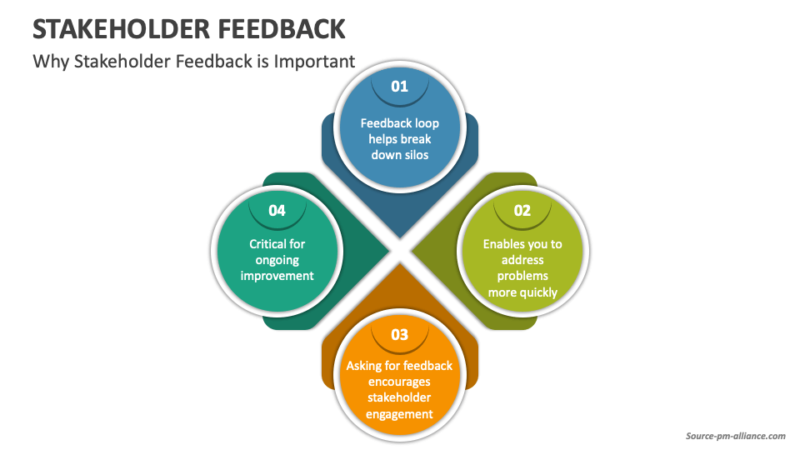
Once a potential issue is identified, diagnosis is key. Portfolio leaders should ask:
• Is the initiative still aligned with our current strategy?
• Are we measuring the right success criteria?
• Are delays or cost overruns due to internal execution issues or external shifts?
• Is stakeholder engagement faltering, and why?
This diagnostic phase often involves reviewing original business cases, reassessing assumptions, and engaging project leads or sponsors for insights. Involving cross-functional stakeholders helps surface blind spots and identify viable options moving forward.
From here, organizations can consider a range of course correction actions, depending on the nature and severity of the issue:
Realign scope or objectives: If the initiative is drifting, but the opportunity is still strategically valid, adjusting the scope, timeline, or deliverables can bring it back in line.
Inject additional support: Sometimes underperformance is due to resource gaps or unclear ownership. Reinforcing teams, clarifying roles, or reengaging sponsors can restore momentum.
Pause or pivot: In cases of significant misalignment, it may be wiser to pause the initiative and reassess. This creates space to redefine its purpose or shift it toward a different goal.
Terminate with intent: When an initiative no longer serves strategic needs or is consistently underperforming despite intervention, it should be retired. Clear communication, documentation of lessons learned, and resource reallocation are critical here to preserve organizational trust.
Governance mechanisms play a critical role in enabling course correction. Portfolio steering committees, review boards, or agile governance forums should have the authority—and the culture—to challenge assumptions, surface concerns, and make bold decisions when necessary. This requires transparency, psychological safety, and a shared commitment to portfolio value over individual project pride.
Importantly, course correction should be seen as a strategic strength, not a weakness. Organizations that normalize reassessment and pivoting are better positioned to respond to complexity and change. Building in review checkpoints, encouraging team feedback, and maintaining flexibility in plans all help ensure that initiatives remain fit-for-purpose as the landscape evolves.
In summary, course-correcting misaligned or underperforming initiatives is an essential practice for strategic portfolio success. It protects investment, focuses energy on what matters most, and demonstrates the agility needed to turn change into competitive advantage.
Embedding Continuous Learning into Portfolio Measurement
Continuous learning is a hallmark of high-performing organizations—and it’s especially critical in strategic portfolio management. While portfolio measurement traditionally focuses on tracking KPIs, timelines, and budgets, embedding continuous learning ensures that organizations don’t just measure outcomes—they evolve because of them. It turns measurement from a passive exercise into an active driver of adaptation, innovation, and sustained strategic alignment.
At its core, continuous learning in portfolio measurement means using every review, metric, and feedback loop as an opportunity to improve—not only the initiative in question, but the portfolio process as a whole. This requires a shift in mindset from “proving success” to “improving capability.” Instead of only asking, “Did we hit our targets?” teams should also ask, “What did we learn, and how will we apply it moving forward?”
One key enabler of this shift is retrospective analysis. At regular intervals—whether at project closeout or during quarterly portfolio reviews—teams should take time to reflect on what worked, what didn’t, and why. These sessions go beyond technical debriefs to examine assumptions, stakeholder engagement, decision-making quality, and strategy fit. Documenting these insights helps build institutional knowledge and prevents repeat mistakes.
To be effective, this learning must be shared and applied. Insights gained from one initiative should inform others across the portfolio. For example, if a team discovers that early stakeholder involvement led to faster approvals, that lesson should be codified into future project planning templates or governance checklists. Some organizations maintain a “lessons learned” library or knowledge base that project teams can access during planning phases, ensuring insights are reused and not lost.
Another critical practice is measuring learning itself. Portfolio leaders can track how often lessons are captured, how widely they’re disseminated, and whether they lead to adjustments in process, scope, or strategy. Metrics like “number of initiatives with documented lessons learned” or “percentage of teams incorporating past feedback into new initiatives” can help reinforce learning as a norm.
Embedding continuous learning also requires psychological safety. If teams fear blame or punishment for underperformance, they are less likely to share candid insights. Leaders must cultivate a culture where missteps are viewed as learning opportunities, and where feedback—upward, downward, and lateral—is encouraged and acted upon. Celebrating intelligent risk-taking and transparent reflection sends a clear message: learning is not optional—it’s strategic.
Technology can support this as well. Many portfolio management platforms now include fields for lessons learned, reflection prompts, or automated reminders to review feedback at regular intervals. Integrating these elements into the workflow helps make learning habitual rather than occasional.
Finally, continuous learning must be integrated into governance. Steering committees and portfolio boards should ask not just about performance metrics, but also about what has been learned—and what will change because of it. Over time, this fosters an adaptive portfolio culture where improvement is constant, decisions are more informed, and strategy execution becomes more resilient.
In sum, embedding continuous learning into portfolio measurement elevates performance from reactive tracking to proactive evolution. It ensures that every outcome—good or bad—adds value, and that the portfolio becomes smarter with every cycle. This is how organizations not only stay aligned with strategy, but grow their capacity to execute it with agility and insight.

Exercise 1.12: Group Discussion
“Think of a time when your organization continued with a project or initiative that no longer aligned with strategic goals. What signs (if any) indicated that it was drifting? What could have been done earlier to recognize and course-correct it? Based on what you’ve learned in this chapter, what tools, review rhythms, or success criteria would have helped ensure better alignment and impact?”
Project Studies
Project Study (Part 1) – Customer Service
The Head of this Department is to provide a detailed report relating to the Strategic Objectives process that has been implemented within their department, together with all key stakeholders, as a result of conducting this workshop, incorporating process: planning; development; implementation; management; and review. Your process should feature the following 12 parts:
01. Strategic Planning
02. Aligning Objectives with Corporate Vision and Mission
03. Top-Down Strategic Planning in Portfolio Design
04. Translating Strategy into Measurable KPIs
05. Goal Setting Frameworks for Portfolio Optimization
06. Prioritization Techniques for Strategic Goals
07. Setting Financial Targets for Portfolio Growth
08. Establishing Market Positioning Goals
09. Balancing Short-Term Wins with Long-Term Strategy
10. Creating a Strategic Roadmap for Portfolios
11. Communicating Strategic Objectives Across Teams
12. Measuring Strategic Alignment and Portfolio Success
Please include the results of the initial evaluation and assessment.
Project Study (Part 2) – E-Business
The Head of this Department is to provide a detailed report relating to the Strategic Objectives process that has been implemented within their department, together with all key stakeholders, as a result of conducting this workshop, incorporating process: planning; development; implementation; management; and review. Your process should feature the following 12 parts:
01. Strategic Planning
02. Aligning Objectives with Corporate Vision and Mission
03. Top-Down Strategic Planning in Portfolio Design
04. Translating Strategy into Measurable KPIs
05. Goal Setting Frameworks for Portfolio Optimization
06. Prioritization Techniques for Strategic Goals
07. Setting Financial Targets for Portfolio Growth
08. Establishing Market Positioning Goals
09. Balancing Short-Term Wins with Long-Term Strategy
10. Creating a Strategic Roadmap for Portfolios
11. Communicating Strategic Objectives Across Teams
12. Measuring Strategic Alignment and Portfolio Success
Please include the results of the initial evaluation and assessment.
Project Study (Part 3) – Finance
The Head of this Department is to provide a detailed report relating to the Strategic Objectives process that has been implemented within their department, together with all key stakeholders, as a result of conducting this workshop, incorporating process: planning; development; implementation; management; and review. Your process should feature the following 12 parts:
01. Strategic Planning
02. Aligning Objectives with Corporate Vision and Mission
03. Top-Down Strategic Planning in Portfolio Design
04. Translating Strategy into Measurable KPIs
05. Goal Setting Frameworks for Portfolio Optimization
06. Prioritization Techniques for Strategic Goals
07. Setting Financial Targets for Portfolio Growth
08. Establishing Market Positioning Goals
09. Balancing Short-Term Wins with Long-Term Strategy
10. Creating a Strategic Roadmap for Portfolios
11. Communicating Strategic Objectives Across Teams
12. Measuring Strategic Alignment and Portfolio Success
Please include the results of the initial evaluation and assessment.
Project Study (Part 4) – Globalization
The Head of this Department is to provide a detailed report relating to the Strategic Objectives process that has been implemented within their department, together with all key stakeholders, as a result of conducting this workshop, incorporating process: planning; development; implementation; management; and review. Your process should feature the following 12 parts:
01. Strategic Planning
02. Aligning Objectives with Corporate Vision and Mission
03. Top-Down Strategic Planning in Portfolio Design
04. Translating Strategy into Measurable KPIs
05. Goal Setting Frameworks for Portfolio Optimization
06. Prioritization Techniques for Strategic Goals
07. Setting Financial Targets for Portfolio Growth
08. Establishing Market Positioning Goals
09. Balancing Short-Term Wins with Long-Term Strategy
10. Creating a Strategic Roadmap for Portfolios
11. Communicating Strategic Objectives Across Teams
12. Measuring Strategic Alignment and Portfolio Success
Please include the results of the initial evaluation and assessment.
Project Study (Part 5) – Human Resources
The Head of this Department is to provide a detailed report relating to the Strategic Objectives process that has been implemented within their department, together with all key stakeholders, as a result of conducting this workshop, incorporating process: planning; development; implementation; management; and review. Your process should feature the following 12 parts:
01. Strategic Planning
02. Aligning Objectives with Corporate Vision and Mission
03. Top-Down Strategic Planning in Portfolio Design
04. Translating Strategy into Measurable KPIs
05. Goal Setting Frameworks for Portfolio Optimization
06. Prioritization Techniques for Strategic Goals
07. Setting Financial Targets for Portfolio Growth
08. Establishing Market Positioning Goals
09. Balancing Short-Term Wins with Long-Term Strategy
10. Creating a Strategic Roadmap for Portfolios
11. Communicating Strategic Objectives Across Teams
12. Measuring Strategic Alignment and Portfolio Success
Please include the results of the initial evaluation and assessment.
Project Study (Part 6) – Information Technology
The Head of this Department is to provide a detailed report relating to the Strategic Objectives process that has been implemented within their department, together with all key stakeholders, as a result of conducting this workshop, incorporating process: planning; development; implementation; management; and review. Your process should feature the following 12 parts:
01. Strategic Planning
02. Aligning Objectives with Corporate Vision and Mission
03. Top-Down Strategic Planning in Portfolio Design
04. Translating Strategy into Measurable KPIs
05. Goal Setting Frameworks for Portfolio Optimization
06. Prioritization Techniques for Strategic Goals
07. Setting Financial Targets for Portfolio Growth
08. Establishing Market Positioning Goals
09. Balancing Short-Term Wins with Long-Term Strategy
10. Creating a Strategic Roadmap for Portfolios
11. Communicating Strategic Objectives Across Teams
12. Measuring Strategic Alignment and Portfolio Success
Please include the results of the initial evaluation and assessment.
Project Study (Part 7) – Legal
The Head of this Department is to provide a detailed report relating to the Strategic Objectives process that has been implemented within their department, together with all key stakeholders, as a result of conducting this workshop, incorporating process: planning; development; implementation; management; and review. Your process should feature the following 12 parts:
01. Strategic Planning
02. Aligning Objectives with Corporate Vision and Mission
03. Top-Down Strategic Planning in Portfolio Design
04. Translating Strategy into Measurable KPIs
05. Goal Setting Frameworks for Portfolio Optimization
06. Prioritization Techniques for Strategic Goals
07. Setting Financial Targets for Portfolio Growth
08. Establishing Market Positioning Goals
09. Balancing Short-Term Wins with Long-Term Strategy
10. Creating a Strategic Roadmap for Portfolios
11. Communicating Strategic Objectives Across Teams
12. Measuring Strategic Alignment and Portfolio Success
Please include the results of the initial evaluation and assessment.
Project Study (Part 8) – Management
The Head of this Department is to provide a detailed report relating to the Strategic Objectives process that has been implemented within their department, together with all key stakeholders, as a result of conducting this workshop, incorporating process: planning; development; implementation; management; and review. Your process should feature the following 12 parts:
01. Strategic Planning
02. Aligning Objectives with Corporate Vision and Mission
03. Top-Down Strategic Planning in Portfolio Design
04. Translating Strategy into Measurable KPIs
05. Goal Setting Frameworks for Portfolio Optimization
06. Prioritization Techniques for Strategic Goals
07. Setting Financial Targets for Portfolio Growth
08. Establishing Market Positioning Goals
09. Balancing Short-Term Wins with Long-Term Strategy
10. Creating a Strategic Roadmap for Portfolios
11. Communicating Strategic Objectives Across Teams
12. Measuring Strategic Alignment and Portfolio Success
Please include the results of the initial evaluation and assessment.

Project Study (Part 9) – Marketing
The Head of this Department is to provide a detailed report relating to the Strategic Objectives process that has been implemented within their department, together with all key stakeholders, as a result of conducting this workshop, incorporating process: planning; development; implementation; management; and review. Your process should feature the following 12 parts:
01. Strategic Planning
02. Aligning Objectives with Corporate Vision and Mission
03. Top-Down Strategic Planning in Portfolio Design
04. Translating Strategy into Measurable KPIs
05. Goal Setting Frameworks for Portfolio Optimization
06. Prioritization Techniques for Strategic Goals
07. Setting Financial Targets for Portfolio Growth
08. Establishing Market Positioning Goals
09. Balancing Short-Term Wins with Long-Term Strategy
10. Creating a Strategic Roadmap for Portfolios
11. Communicating Strategic Objectives Across Teams
12. Measuring Strategic Alignment and Portfolio Success
Please include the results of the initial evaluation and assessment.

Project Study (Part 10) – Production
The Head of this Department is to provide a detailed report relating to the Strategic Objectives process that has been implemented within their department, together with all key stakeholders, as a result of conducting this workshop, incorporating process: planning; development; implementation; management; and review. Your process should feature the following 12 parts:
01. Strategic Planning
02. Aligning Objectives with Corporate Vision and Mission
03. Top-Down Strategic Planning in Portfolio Design
04. Translating Strategy into Measurable KPIs
05. Goal Setting Frameworks for Portfolio Optimization
06. Prioritization Techniques for Strategic Goals
07. Setting Financial Targets for Portfolio Growth
08. Establishing Market Positioning Goals
09. Balancing Short-Term Wins with Long-Term Strategy
10. Creating a Strategic Roadmap for Portfolios
11. Communicating Strategic Objectives Across Teams
12. Measuring Strategic Alignment and Portfolio Success
Please include the results of the initial evaluation and assessment.

Project Study (Part 11) – Logistics
The Head of this Department is to provide a detailed report relating to the Strategic Objectives process that has been implemented within their department, together with all key stakeholders, as a result of conducting this workshop, incorporating process: planning; development; implementation; management; and review. Your process should feature the following 12 parts:
01. Strategic Planning
02. Aligning Objectives with Corporate Vision and Mission
03. Top-Down Strategic Planning in Portfolio Design
04. Translating Strategy into Measurable KPIs
05. Goal Setting Frameworks for Portfolio Optimization
06. Prioritization Techniques for Strategic Goals
07. Setting Financial Targets for Portfolio Growth
08. Establishing Market Positioning Goals
09. Balancing Short-Term Wins with Long-Term Strategy
10. Creating a Strategic Roadmap for Portfolios
11. Communicating Strategic Objectives Across Teams
12. Measuring Strategic Alignment and Portfolio Success
Please include the results of the initial evaluation and assessment.

Project Study (Part 12) – Education
The Head of this Department is to provide a detailed report relating to the Strategic Objectives process that has been implemented within their department, together with all key stakeholders, as a result of conducting this workshop, incorporating process: planning; development; implementation; management; and review. Your process should feature the following 12 parts:
01. Strategic Planning
02. Aligning Objectives with Corporate Vision and Mission
03. Top-Down Strategic Planning in Portfolio Design
04. Translating Strategy into Measurable KPIs
05. Goal Setting Frameworks for Portfolio Optimization
06. Prioritization Techniques for Strategic Goals
07. Setting Financial Targets for Portfolio Growth
08. Establishing Market Positioning Goals
09. Balancing Short-Term Wins with Long-Term Strategy
10. Creating a Strategic Roadmap for Portfolios
11. Communicating Strategic Objectives Across Teams
12. Measuring Strategic Alignment and Portfolio Success
Please include the results of the initial evaluation and assessment.
Program Benefits
Management
- Market Alignment
- Feature Prioritization
- Risk Mitigation
- Strategic Clarity
- Cost Efficiency
- Customer Retention
- Innovation Enablement
- Roadmap Clarity
- Lifecycle Extension
- Differentiation Focus
Marketing
- Revenue Growth
- Lead Optimization
- Targeted Outreach
- Value Messaging
- Improved Forecasting
- Strategic Upselling
- Reduced Churn
- Brand Positioning
- Cross-Selling Opportunities
- Customer Insights
Finance
- Profit Maximization
- Resource Allocation
- Cash Flow
- Risk Control
- Cost Reduction
- Investment Prioritization
- Budget Efficiency
- Process Streamlining
- Scalability Enhancement
- Compliance Assurance
Client Telephone Conference (CTC)
If you have any questions or if you would like to arrange a Client Telephone Conference (CTC) to discuss this particular Unique Consulting Service Proposition (UCSP) in more detail, please CLICK HERE.












